

Launch Your Future: Amazing 25 Career Games for Teens
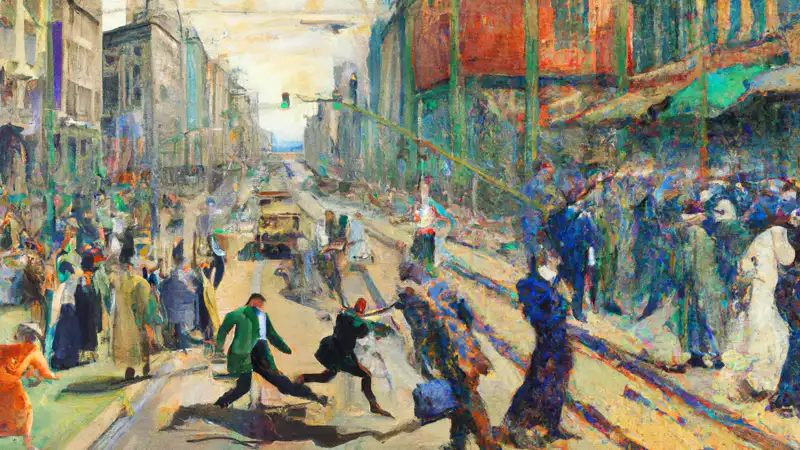
Help students find their career paths with our 25 career games designed specifically for high school students. These interactive career exploration activities will provide a fun and engaging way to learn about various professions and equip teens with essential insights and skills for their future careers. From virtual job simulations to role-playing scenarios, each game offers a unique pathway to understanding different industries and job roles, helping students make informed decisions about their educational and career paths. This guide is perfect for motivating and inspiring high school students in a careers classroom.
1. Career Speed Dating Acitivity
How to Implement: Set up the classroom with pairs of chairs facing each other. Assign each student a profession (or allow them to choose) and give them a few minutes to prepare. Students then sit face-to-face with a partner, discussing their assigned profession. After a set time (e.g., 2-3 minutes), one row of students rotates, and the process continues until everyone has “dated” everyone else. It’s such a fun activity!
Benefits: The fast-paced nature of this activity ensures high engagement levels. Students learn to convey key information concisely and listen actively. It also exposes them to a multitude of professions in a short time, broadening their perspectives.
2. Guess My Job
How to Implement: This game operates much like 20 Questions. Provide each student with a card containing a specific job title. The student then offers three hints related to that job, without revealing the profession directly. Classmates then take turns guessing the profession based on the provided clues.
Benefits: “Guess My Job” encourages critical thinking and deductive reasoning. It also fosters a deeper understanding of various professions, as students must identify key aspects of a job role to give hints that are neither too vague nor too obvious.
3. Career Taboo
How to Implement: This game is inspired by the classic Taboo game. Create cards for various professions and list four or five “taboo” words associated with each job that students cannot use when describing it. For instance, for “Dentist”, taboo words might include “teeth,” “brush,” “drill,” and “gum.” A student picks a card and tries to describe the profession to their classmates without using the taboo words.
Benefits: Career Taboo pushes students to think outside the box and describe professions in unconventional ways. It refines communication skills and expands vocabulary, as students search for alternative words and phrases to describe familiar roles.
4. Career Bingo Game
How to Implement: Begin by creating bingo cards, each filled with a variety of professions rather than numbers. These professions can range from common ones like “doctor” and “engineer” to more niche roles like “marine biologist” or “set designer.” Armed with a stack of descriptions for each job, read out the duties and responsibilities of each profession one by one. As students recognize a profession described, they mark it off on their bingo card. The first student to get a full row shouts “Bingo!”
Benefits: Career Bingo not only introduces students to a plethora of job roles but also encourages active listening. As they attentively tune in to the nuances of each profession, they’re exposed to new possibilities and broadened horizons. It’s a great way to begin conversations about what interests them and what doesn’t.
5. Profession Charades Exploration Game
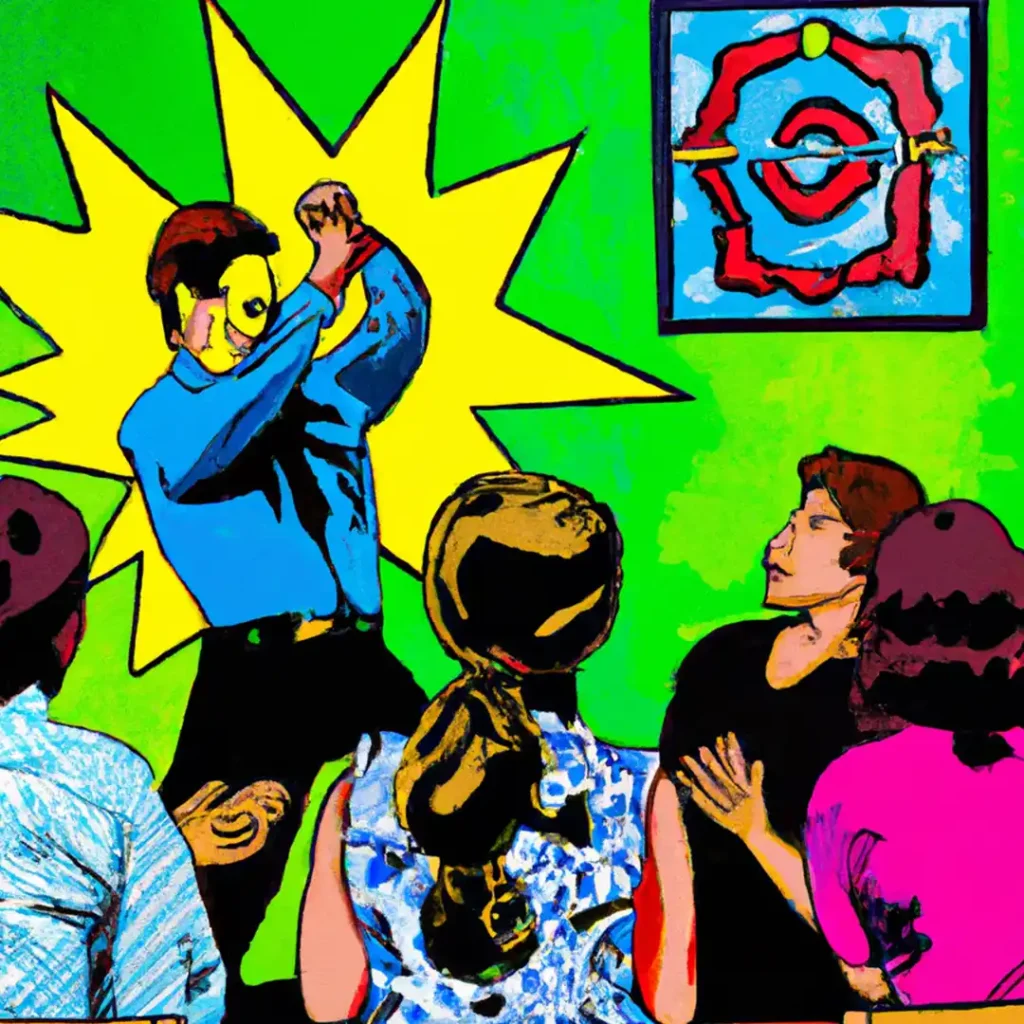
How to Implement: Write down various job titles on individual slips of paper. Each student then randomly selects a slip and, without revealing their chosen profession, acts it out in front of the class. Their peers then guess the job based on the student’s non-verbal cues and actions.
Benefits: This activity is not only engaging but also pushes students to think about the most defining and recognizable tasks of each profession. It’s an exercise in non-verbal communication, creativity, and comprehension, as students must break down complex job roles into simple, easily understood actions.
6. Salary Guess Game
How to Implement: Prepare a list of professions and their average annual salaries (without disclosing the amounts). Students are tasked with ranking these professions based on what they believe the salaries might be. After making their guesses, reveal the figures and discuss the reasons behind wage disparities, considering factors like education, demand, experience, and societal value.
Benefits: This activity is an eye-opener for many students, as it challenges preconceived notions about job compensation. By discussing the factors that influence salaries, students gain a better understanding of the economic landscape of the job market. The game also prompts deeper reflections on the true value of a job and the balance between passion and financial rewards.
7. Job Skills Match-Up
How to Implement: On one set of cards, list various job titles. On another set, jot down the primary skills associated with those jobs. Mix up the skill cards and distribute them to the students. Their task? Match the skills to the appropriate job. This can be done individually or in small groups.
Benefits: This game sheds light on the specific skills required for different professions, helping students recognize where their strengths might align with potential careers. Furthermore, it underscores the importance of skill development in the path to professional success.
8. Career Day Role Play
How to Implement: Prepare cards with different professions listed, along with a brief description of the job’s main responsibilities. Each student receives a card and has some time to internalize their role. Later, they pair up or form small groups to describe their day-to-day tasks in that profession to their peers, who then ask questions or seek clarity.
Benefits: Role-playing is a powerful tool for empathy and understanding. By stepping into the shoes of various professionals, even if just for a short time, students gain a firsthand glimpse into the challenges, rewards, and intricacies of different job roles. Moreover, this activity fosters communication skills and promotes curiosity.
9. Career Exploration Mind Map
How to Implement: Divide students into groups and assign each a specific profession or allow them to choose one of interest. Provide them with chart paper or access to digital mind-mapping tools. Groups then brainstorm and map out all they know about the profession, from required skills to potential work environments and associated tasks.
Benefits: Mind mapping is an effective tool for visual learners. The activity encourages collaborative learning, where students pool their knowledge and insights. It also aids in identifying gaps in understanding, prompting further research and exploration of the chosen professions. This is perhaps the best way to introduce career opportunities at any grade level.
10. Profession Timeline
How to Implement: Hand out sheets of paper or use a digital platform where students can create timelines. Assign or let them select a profession, then task them with plotting out the educational journey and work experiences needed to achieve that career. This might include college degrees, internships, certifications, and more.
Benefits: By visualizing the steps needed to reach a career goal, students gain a clearer understanding of the dedication, time, and milestones involved. It promotes forward-thinking and long-term planning, enabling students to set tangible targets for their personal career decisions.
11. Job Scenario Problem Solving
How to Implement: Prepare cards with hypothetical workplace challenges related to various professions. Examples might include handling a medical emergency as a doctor, resolving a client conflict as a PR specialist, or designing a bridge to withstand specific environmental factors as a civil engineer. Distribute the cards to the students and ask them to discuss or write about how they would tackle the given scenario.
Benefits: This activity throws students into real-world situations, albeit hypothetically, forcing them to think on their feet. It builds problem-solving skills, cultivates creativity, and deepens understanding of the practical challenges faced in different professions. Furthermore, it allows students to gauge their interest and aptitude for various scenarios, potentially guiding them towards or away from a variety of careers.
12. Dream Day Diary Entry
How to Implement: Prompt students to imagine a day in their dream job. What would they do? Who would they meet? What challenges would they face? Students then write a diary entry detailing this day, capturing both the highs and lows.
Benefits: This introspective activity fosters self-awareness and creativity. It encourages students to dive deep into their passions, visualize their aspirations, and reflect on what they truly desire in a career. Reading or sharing these entries can also inspire classmates and highlight diverse aspirations within the class.
13. Skill Auction
How to Implement: Prepare a list of skills associated with various jobs. Assign each student a set amount of “money.” As you describe each skill, students decide if they want to “purchase” it, with the highest bidder winning. The goal isn’t necessarily to spend all their money but to acquire the skills they find most valuable or intriguing.
Benefits: This game emphasizes the value of diverse skills in the job market. Students reflect on which skills resonate most with their interests and aspirations. It also introduces the concept of demand and value in the job market, prompting discussions on why certain skills might be more “expensive” than others. Young people find this game a fun way to explore essential skills.
14. Profession Pictionary Game
How to Implement: Just like traditional Pictionary, but with a career twist. Create cards with various job roles. Students select a card and draw an image associated with that profession without using any words or numbers, while their classmates try to guess the job.
Benefits: Visual representation and interpretation are at the heart of this activity. Students must think creatively to depict complex job roles through simple drawings. It promotes teamwork, creativity, and reinforces the visual aspects of various professions.
15. Career Pathway Snakes & Ladders
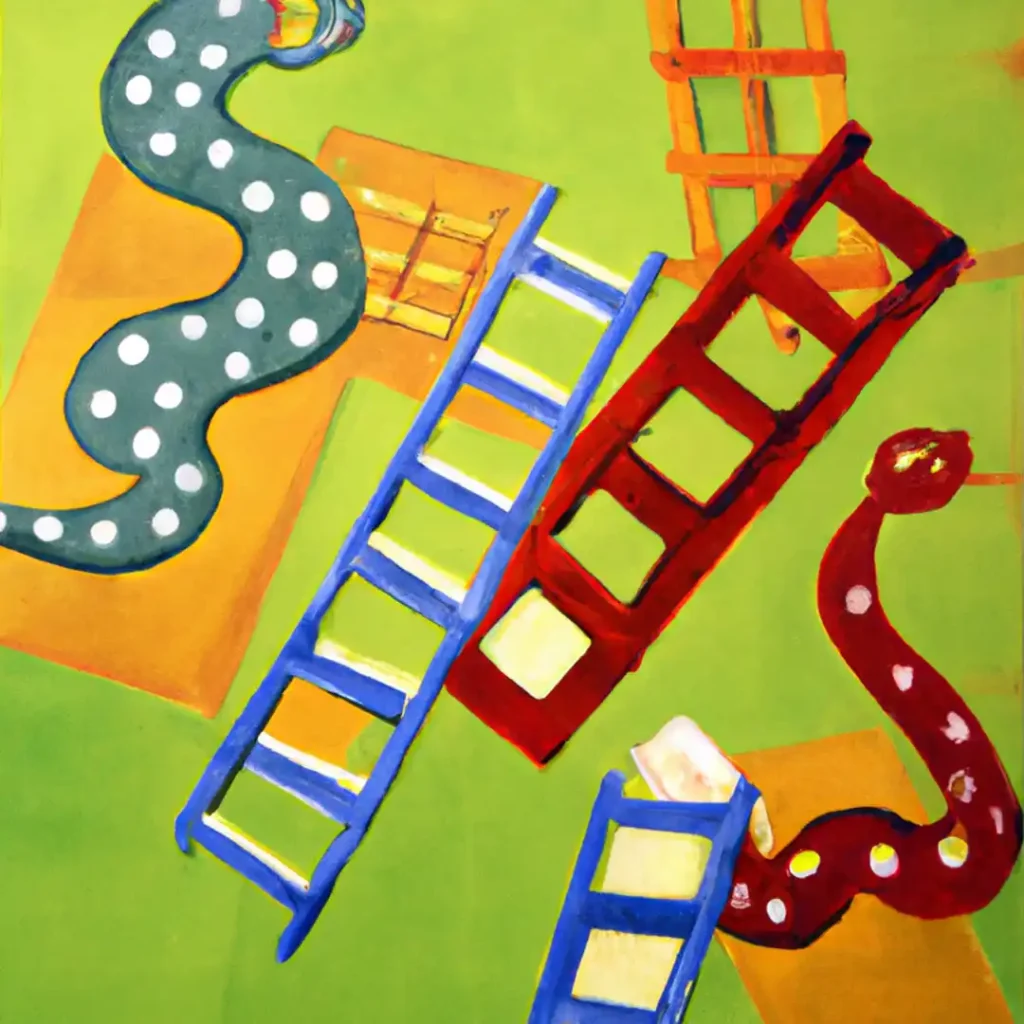
How to Implement: Adapt a traditional Snakes & Ladders game board to represent a career journey. Ladders signify promotions, positive networking opportunities, or successful job interviews, propelling players forward. Snakes, on the other hand, can represent setbacks like failed projects, job loss, or workplace conflicts, causing players to move backward. Play the game with dice and tokens as usual.
Benefits: This game provides a visual representation of the ups and downs of a career. Students learn that progress isn’t always linear, and setbacks can be valuable learning experiences. It’s a playful way to introduce the concept of perseverance and resilience in one’s career.
16. Job Hat Guess
How to Implement: Collect hats or props that symbolize different professions—e.g., a chef’s hat, firefighter helmet, artist’s beret. A student chooses a hat without revealing it to the class and wears it. Classmates then ask yes/no questions to deduce the associated profession.
Benefits: This activity sharpens deductive reasoning and observation skills. It also highlights the symbols and tools associated with various professions, allowing students to connect iconic items with specific job roles.
17. Daily Routine Compare & Contrast
How to Implement: Select two professions and, with the class, outline the typical daily routines of each. Discuss the similarities, differences, challenges, and rewards associated with both roles. For example, compare the day of a journalist with that of a marine biologist.
Benefits: By delving into the daily grind of various careers, students gain insight into the tangible realities of different job roles. This activity fosters empathy, analytical thinking, and a deeper understanding of the myriad tasks within each profession.
18. Profession Trivia
How to Implement: Craft a quiz filled with intriguing facts and scenarios related to various careers. For instance: “Which profession might require knowledge of Latin terms? A) Lawyer B) Chef C) Pilot.” Host a trivia session where students answer individually or in teams.
Benefits: This trivia game educates students about diverse professions and makes learning fun and competitive. It stimulates curiosity and broadens students’ knowledge about the lesser-known aspects of various job roles.
19. Career Word Search
How to Implement: Design a word search puzzle incorporating various job titles, both common and obscure. Distribute the puzzles and let students hunt for the professions.
Benefits: While it might seem simple, word searches help improve pattern recognition and vocabulary. By searching for career-related terms, students become familiar with a wide range of job titles, some of which might spark their interest for further exploration.
20. Skill Set Venn Diagram
How to Implement: Choose two professions and create a Venn diagram using a whiteboard or individual sheets of paper. Label each circle with one of the professions. As a class or in groups, students list skills specific to each job in the corresponding sections and shared skills in the overlapping middle section. This will also let students explore what higher education is needed for specific careers.
Benefits: Venn diagrams are visual tools that aid in comparison and contrast. By analyzing the skills of two professions side by side, students can identify commonalities and differences, helping them understand how skill sets can be transferable across different careers. When venn diagrams are introduced to middle school students, this might be a great way to introduce career clusters.
21. Job Interview Hot Seat

How to Implement: Prepare cards with various professions. Students draw a card and then sit in the “hot seat” where they’re interviewed for that job role by classmates. After a few questions, roles switch. The interviewer becomes the interviewee, and a new job card is selected.
Benefits: This role-playing activity enhances communication skills, adaptability, and quick thinking. Students gain a taste of real-world job interviews, learning how to articulate their strengths and address questions confidently, all in a safe classroom setting.
22. Profession Flashcard Relay
How to Implement: Create two sets of flashcards: one with job titles and another with job descriptions. Spread them out on a table or floor. Divide students into teams, and on the signal, teams race to match titles with the correct descriptions as fast as possible.
Benefits: This competitive relay engages students actively and is especially effective for kinesthetic learners. It encourages teamwork, quick thinking, and reinforces knowledge about various professions in an interactive way.
23. Elevator Pitch Practice
How to Implement: Introduce the concept of an “elevator pitch” – a concise, persuasive speech that’s typically delivered in the time span of an elevator ride. Ask students to choose a profession and craft a short pitch as if they were in that job, promoting their role or a project they’re passionate about. Allow time for preparation and then let each student present their pitch to the class.
Benefits: The elevator pitch hones communication, persuasion, and self-presentation skills, all of which are important life skills. Crafting a compelling narrative in a short timeframe challenges students to distill information and present it with clarity and enthusiasm. This activity also builds self-confidence as students practice public speaking in front of peers.
24. What If? Scenario Cards
How to Implement: Design cards containing hypothetical work-related situations. Examples might include “What if you were a software developer and the program you’ve spent months on suddenly crashes?” or “What if you were a journalist and a source retracts an important statement just before publication?” Distribute these cards among students and have them share their potential solutions, either individually or in groups.
Benefits: These scenarios immerse students in real-world challenges, cultivating their problem-solving and critical thinking abilities. They also foster empathy, as students step into the shoes of professionals facing dilemmas, and help them appreciate the complexities and nuances of different roles.
25. Pros & Cons Debate
How to Implement: Distribute a list of professions among student pairs. Each pair is tasked with researching and then debating the advantages and disadvantages of their assigned job. After a given preparation period, pairs present their findings, with one student arguing the pros and the other presenting the cons.
Benefits: This debate structure sharpens research, communication, and persuasive skills. Students delve deeper into professions, going beyond surface-level knowledge to understand both the rewarding aspects and the challenges. Through this, they gain a more rounded perspective on various careers, aiding informed decisions in their future.
Why Career Games are Crucial for High Schoolers
High school is a pivotal juncture in a young person’s life. It’s a time when dreams begin to crystallize into potential career paths, yet many students often feel lost amidst the myriad of choices. Exploring career goals at this stage isn’t just about helping them pick a job for the sake of it; it’s about discovering passions, talents, and understanding the dynamics of the working world.
Moreover, the job market is continuously evolving. With the rise of automation, artificial intelligence, and other technological advancements, some traditional jobs are fading, while entirely new careers are emerging. Providing students with a comprehensive view of these shifts can help them pivot towards professions that are not only fulfilling but also have long-term viability.
Career Activities Help Develop Skills for the Future Workplace
Beyond understanding job roles and industry shifts, students need to develop a set of universally valuable skills that will serve them in almost any profession. Here are some of the critical skills our students will develop with the aid of career games:
Adaptability and Flexibility: As the saying goes, the only constant is change. The ability to adapt to new situations, technologies, or job roles is invaluable.
Critical Thinking: In a world flooded with information, the ability to evaluate, analyze, and make informed decisions is more crucial than ever.
Collaboration and Teamwork: The future workplace values individuals who can work harmoniously in teams, capitalizing on the diverse strengths of each member.
Problem Solving: Every job comes with its challenges. Equip students with the mindset and tools to tackle obstacles creatively.
Communication Skills: Be it written, verbal, or digital, clear communication will always be at the heart of a successful career.
Emotional Intelligence: The ability to recognize, understand, and manage our emotions, as well as those of others, is increasingly being seen as a vital skill in the professional realm.
In essence, career exploration activities for high school students do more than just introduce them to various professions. They offer a platform to develop these vital skills in a fun, interactive, and memorable way. As educators, let’s harness the power of play to not only enlighten but also empower our next generation of leaders, thinkers, and doers.
Students will make career choices based on personality traits and what they believe are viable career pathways. While other classes may hone in on soft skills, one of the best ways to make a career decision is career awareness and hard work. It’s always a good idea for students to engage in things like job shadowing, participating in extracurricular activities, volunteer work, and speaking to a school counselor. Also, completing co-op credits at local businesses is helpful when exploring career interests. For a great resource on career development and handy career exploration tools, visit https://blog.careeronestop.org/3-free-resources-for-career-development-professionals/
Join our Community!
Sign up for our weekly roundup of new content on The Cautiously Optimistic Teacher. We don’t spam! Read our privacy policy for more info.
Check your inbox or spam folder to confirm your subscription.

Planning for the Future: Career Exploration Activities for High School Students

Career education has always been an important part of the high school curriculum — especially since students’ understanding of potential career paths can drastically affect the decisions they make. It’s one of the reasons why high school (and increasingly middle school!) is the prime time for educators to educate students about potential pathways after graduation. Keep reading for meaningful career exploration activities that will help students discover their interests, skills, and passions, and guide them towards fulfilling and successful careers and occupations.
Career Exploration Activities and Ideas to Help High Schoolers Plan for their Futures
Here are a few ideas for career exploration that educators, counselors, and parents can use to help students plan for life after graduation.
Facilitate a self-reflection activity
Before high schoolers can even begin to explore potential career paths, they must first gain a deeper understanding of themselves. Through self-reflection activities — like personality assessments and writing prompts — you can encourage students to reflect on their academic passions, values, personal strengths and weaknesses, and lifestyle goals. This helps students begin to identify what’s most important to them, and start thinking about potential career paths that are most aligned with their values, strengths, and visions for the future.

Career Readiness: Soft Skill Reflection Task Cards by The Career Ready Teacher Grades: 7-12

Career Scenarios | Personality Traits and Interest Assessment by The Transition Teacher Grades: 9-12 | Special Education

Career Exploration Worksheets with Career Interest Survey & Personality Test by Jenn Liu — Engaging to Empower Grades: 8-12
Encourage students to do an inventory of their interests
Career surveys and inventories are assessment tools that are designed to help students identify potential career paths that are aligned with their interests. Try one of these resources to facilitate meaningful discussions with students about their interests, and to help empower them to make informed decisions about their future.

Career Cluster Interest Inventory Survey PLUS Career Exploration Assignment by School Counseling Essentials Grades: 6-12

Career Interest Symbol Supported Student Survey by Adulting Made Easy aka SpedAdulting Grades: 6-12 | Special Education
Assign a career research project for in-depth investigation
After some initial research reflection, the next step is for students to begin exploring specific careers or occupations in more depth. Through career research projects, students can investigate potential opportunities and learn more about job responsibilities, required qualifications, salary expectations, positives and negatives, and growth opportunities.

Career Exploration & Research for Google Drive™ by College Counselor Studio Grades: 9-12

Future College and Future Career Research Paper Bundle by The Daring English Teacher Grades: 7-12

Introduction to Design: Middle, High School Art & Design Career Research Project by Look Between the Lines Grades: 6-12

Business, Management, & Administration Career Cluster Research Digital Activity by Business Education with Denise Leigh Grades: 9-12

Career Exploration Worksheets for STEM Jobs Research Project by Meredith Anderson – Momgineer STEM Activities Grades 6-10
Play a career exploration game in class
Through career exploration games, students can explore different career options and industries in a fun, engaging way. You can incorporate quizzes and decision-making activities to help students understand the skills, qualifications, and paths associated with different careers. These resources can provide students with hands-on experiences that are sure to spark curiosity, facilitate discussion, and inspire informed career choices.

Career Exploration Game Job Salaries Fun Activity by Career And Employment Prep Grades: 6-12

Career Card Grab Game for High School Career Development by The Counselor Clique Grades: 9-12

Career Exploration Activity Game – Middle and High School Occupations by Informed Decisions Grades: 6-12
Discover more activities for career and technical education on TPT.
- Middle School
- High School
- Social Studies
- Social-Emotional Learning
- Back-to-School
- Asian Pacific American Heritage Month
- Autism Acceptance Month
- Black History Month
- Hispanic Heritage Month
- Pride Month
- Indigenous Peoples’ Month
- Women’s History Month
9 Career Exploration Activities High Schoolers Will Actually Want To Do
Subscribe For Weekly Resources
.png)
Career Exploration Activities High Schoolers Will Actually Want To Do
Great college counselors and career advisors always strive to ensure that each student is able to develop a personalized roadmap for their future. Beyond creating a bridge between secondary school and postsecondary success, career exploration plays a critical role for students while in school and provides thoughtful reflection and self-examination as students choose their life path. High-quality career exploration helps give meaning to the learning students are doing while in school, provides focus for their decision-making and time, and inspires hope for where their learning and hard work can take them.
Many schools and districts offer students annual or semi-annual career days and fairs as a primary channel for career exploration. Often times these events highlight individuals in the most common career roles or representatives from local businesses and business community organizations with brand recognition. Though these assemblies are important, they do not, on their own, impactfuly engage students in an ongoing process of deeper exploration necessary to drive meaningful questioning, engagement, and speculative research throughout secondary school.
Because of the important role it plays, career exploration must be ongoing and interesting to students in order to effectively engage them and promote motivation and enthusiasm. Counselors and educators can play a key role in finding ways to embed innovative practices to help students explore possible careers, learn about a much broader set of potential career options, and receive sufficient time and guidance--all allowing students to deeply consider their postsecondary career paths.
Innovative, Engaging Activities And Practices
In order for career exploration activities to be meaningful and exciting to today’s high school students, they need to be interactive and relevant. They must involve opportunities for student voice and choice, allowing students to explore and discern what appeals to them and what does not. And, in order to work within a college and career readiness program, the activities need to be scalable and accessible for all students.
Use Technology to Connect Students with Career Role Models
Today’s students are all 21st Century natives. They learned to read with books and apps. Video calls are just as common as telephone calls. They are used to using digital devices to connect with people near and far. Technology has made it much easier to connect students to information and resources beyond the school walls and get them excited about future career possibilities. Encourage students to explore websites that connect them with first-hand insights of professionals from around the world.
- Career Village : This online community provides a forum for students to ask questions about career exploration and planning directly to current professionals. From “How much does a music producer earn?” to “How to find your dream job,” students are able to have their specific questions answered from real-life professionals working in the fields they are exploring.
- Job Shadow : At Job Shadow, students can read interviews from professionals working in a vast number of fields, including some more unique professions that might be of interest to students such as jobs in the arts, roles that involve work with animals, and “jobs you may not have heard of.” Students can also search for interviews based on compensation structure or work environment.
Use Virtual Reality to Explore Career Options
Hands-on, interactive, and dynamic experiences are important to engage students and give them a realistic window into what a career will entail. Some of the most innovative work in career exploration is utilizing virtual reality (VR) to provide immersive experiences for students to do jobs. Though internships, apprenticeships, and other immersive, real-world experiences are only possible for a small number of students, VR can provide access to the environments, tools, and opportunities in a wide variety of industries without leaving the classroom.
- Oculus VR Career Experience : This free resource designed for the Oculus Go platform, the most popular consumer VR headset, provides students with the opportunity to learn the complex world of pipe fitting, HVAC, and welding. The application was designed by the International Training Fund of the United Association, an international union of plumbers, fitters, and technicians, to provide students with an immersive and realistic window into these jobs.
- ByteSpeed : ByteSpeed, available for a fee, provides students ranging from elementary school to higher education a wide variety of career VR experiences including agriculture, fashion design, health care, and engineering.
Partner with Local Chambers of Commerce and Beyond
A core piece of career planning needs to include job opportunities within one’s community. A local chamber of commerce is the perfect resource. Encourage the local chamber of commerce to have member businesses create YouTube videos spotlighting their work and different types of potential jobs for students. Some local business organizations have partnered with school districts to create sites geared specifically toward secondary students to share the types of jobs available and the skills needed to do those roles. You might also invite local businesses to provide teachers with recruitment, application, and training materials for students.
- Career Explore NW : A school district in Spokane, Washington has partnered with local businesses and the public broadcasting station to create an impressive web platform that enables career exploration, promotes local agriculture and industry opportunities, and connects local businesses with students.
- UpSkill Houston : In Houston, Texas, the Greater Houston Partnership has brought the school district into the workforce development process. Realizing that economic development requires a skill-ready workforce at hand, rather than importing it from other communities, the organization formed this partnership and site aimed at connecting high school students with relevant careers.
- SchooLinks : SchooLinks provides an Industry Partnership Portal which assists schools and districts in nurturing partnerships. Providing student access, calendaring events, and empowering local businesses to connect to students helps create real-world opportunities for students to explore local career options.
Include A Diversity of Voices
Students are more likely to deeply engage with career exploration activities when they can personally relate to or see themselves in career role models. It is vital that schools offer students exposure to a wide diversity of individuals representing possible career pathways. Expanding conceptions of role models for students both opens the minds of current students and works to upend historical stereotypes and barriers long-term.
- Invite Recent Alumni: Consider offering students opportunities to talk with and learn from individuals still early in their career trajectory, rather than just focusing on those who have achieved long-term career success. You might invite recent alumni to talk with students about their experiences both in college or career training, applying for positions, and during their first weeks and months in a new role. This gives students much more relatable information and advice that likely feels more relevant to their current decision-making and thinking.
- Ensure Gender, Racial, and Ethnic Diversity in Role Models : Across fields, take special care to include representatives that fall outside often held gender stereotypes for particular careers. For instance, spotlight women working in positions from predominantly male STEM careers. And, have male representation from nursing or teaching positions, which are often female-dominated careers. The Career Girls website is a great resource geared at female students to provide them with empowering role models and tools to explore future career options. Ensure racial and ethnic diversity in connecting students with professionals as it is fundamental that all students have role models that they can personally identify with.
Honor And Value A Wide Array Of Career Pathways
Engaging career exploration also includes guidance and activities to help students expand their thinking beyond what they conceive of as likely career paths. Many times student career planning and exploration is constrained by what they know--either what their own family members do for a living, professionals they interact with in their own lives such as teachers, doctors, and coaches, or those they see on television and the internet. This leaves major gaps in student understanding of all the potential opportunities and fields that exist. Educators can have major impacts on postsecondary success by showing students the wide array of options that are possible and connecting those options with student strengths and preferences.
Additionally, many career exploration curricula often default to college planning as a core component. However, in today’s economy, there are a myriad of good job options that do not require a four-year college degree. It does a disservice to students to only focus on career paths that extend from college completion. Career counselors can play an important role in helping students to see these different pathways--from straight to career, to technical education, to the military, to community college, to four-year degrees and beyond--as all potentially worthwhile to consider. This makes career planning and exploration accessible to students who do not think that college is right for them and helps all students understand their options as they make important life decisions.
Relevant And Productive Career Exploration For All Students
As you develop and plan your career exploration activities, take time to regularly survey students for fields they would like to explore, the kinds of activities that resonate with them, and for feedback on past activities and events. By aligning career exploration activities with student interest and choice, it is much more likely that students will engage more deeply and reflectively.
When students do this, they are able to see connections between future career goals and their current learning; they are able to figure out the kinds of work they enjoy and those they do not; and, they are able to understand how their strengths and preferences map onto future possibilities. By deeply exploring career possibilities during secondary school and critically thinking about the associated realities, students are able to enter postsecondary life knowing they are making active and well-informed choices. Ultimately, if students are excited about these activities and thoughtfully engage with them, they are better prepared for the entire pathway to a career.
Centralizing career exploration activities in the same place as goal setting, college exploration and graduation plans can help students see the little, and big pictures. Check out how SchooLinks can consolidate it all for your district.

Request a demo
Download your free ebook.
Fill out the form below to access your free download following submission.
Join the free webinar.
Fill out the form below to gain access to the free webinar.
Get In Touch
By submitting this form, you agree to our Terms and Conditions and Privacy Policy . You may receive marketing emails and can opt out any time.
Related Content

Career Exploration Activities: A Comprehensive Guide for High School Students

By Tom Gurin
Fulbright Scholar; music composer, historian, and educator
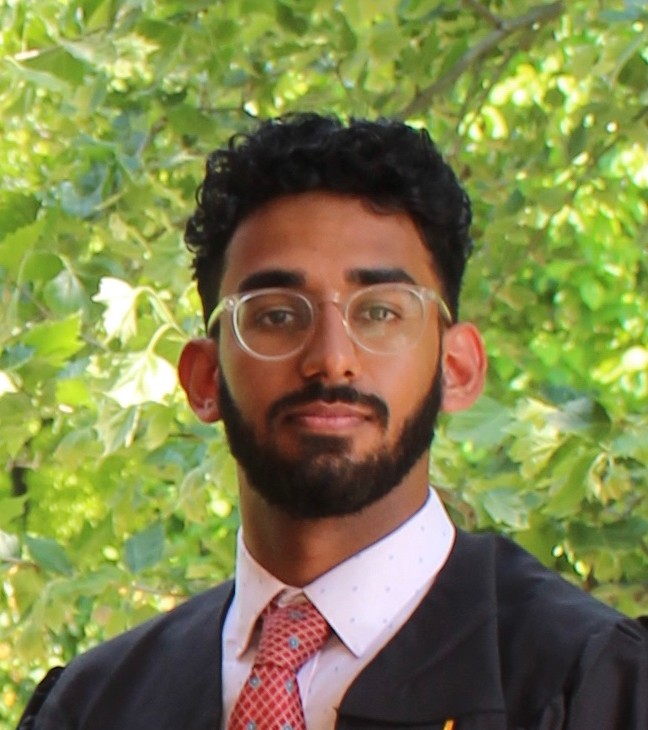
By Surya Ramanathan
Johns Hopkins University, B.S. in Applied Mathematics and Statistics, B.S. in Economics, and M.S. in Applied Economics
5 minute read
The journey of self-discovery and career exploration can be both exciting and daunting. Luckily, there are numerous ways you can uncover your passions and interests
Career exploration is a helpful way for students to consider their interests and goals, and to focus their energies in the right direction. Here, we’ll delve into nine effective career exploration activities any high school student could do to help figure out a potential career path to pursue.
Why Are Career Exploration Activities Important For Students?
Although some people might be lucky enough to find their ideal careers by accident, for most, identifying the right fit means taking time to plan and reflect. Even if you change your mind or go in a different direction later on, exploring careers now might help you uncover something important about your goals for your professional life. Career confusion among students is completely normal, but Polygence can help you discover your passions.
Maybe you already have an idea (or several) about what you want your career to look like. That’s great! The exploration you do as a student could help you narrow in on your strongest interests or open your eyes to career paths you never knew existed . For students who want to be productive and efficient with their time and studies, exploring career options is an important step for building a direct link between their education and their futures.
How Do Career Exploration Activities Work?
Career exploration activities should be enjoyable! They can take many forms, including brainstorming sessions, games, and conversations with experts in a field.
Check out our Pathfinders career discovery program to match with experts and get personalized guidance and advice.
These activities require high school students to reflect on their goals, values, and skills. For some students, this might be the first time that you consider questions about your future career. To get the conversation going, try out some fun career exploration activities that can help students find what they love .
A proven college admissions edge
Polygence alumni had a 90% admissions rate to R1 universities in 2023. Polygence provides high schoolers a personalized, flexible research experience proven to boost your admission odds. Get matched to a mentor now!"
9 Career Exploration Activities for Students
1. career mind mapping: visualizing your connections.
Building a career plan or mind map is an excellent first activity for students to draw connections among key interests and goals . Once completed, a mind map is a tool for visualizing connections among concepts that are important to you and that could shape your career path. Here’s how it works:
Grab a large piece of paper (so that you aren’t limited in space) and a pen or pencil. (A diagramming software like Google Drawings will also work.)
In the center of the page, write a word or short phrase that is important to you when you think about your future career. Don’t think too hard about what to write; just jot down what comes to mind (e.g., “Helping people”, “Leadership”, “Exploring”, “Science”).
Next, draw one or two (or several) lines extending outward from what you wrote. At the end of each line, write another word or phrase that is connected to the first concept. Each word or phrase should connect to another, and your priorities.
Continue drawing lines and connections to new concepts, building outward from the center to create a tree of interrelated ideas that you want to prioritize when building your career.
Building a career mind map is a great first activity to help you structure your brainstorming and get started with career exploration . Remember: the goal of this activity is to start thinking about the connections among different concepts that you want to explore.
2. Self-Assessment Surveys: Uncover Your Strengths and Interests
To embark on a journey of self-discovery, it’s important to understand your strengths and interests. There are various online self-assessment surveys and quizzes designed specifically for high school students. These assessments can be extremely helpful in assisting you with identifying your personality traits, strengths, and preferences. Career planning websites for high school students like CareerExplorer , Princeton Review , and InternMart provide comprehensive assessments that match your qualities with suitable careers. By taking these surveys, you can get a better idea of the fields that might resonate most with you. Here are some career quiz questions to get you thinking about your choices right now:
Which subject(s) do you enjoy most in school?
What are your goals for your education?
Picture yourself in your ideal future workspace. Where do you find yourself? In an office? In a lab? In a forest?
What is your work style? For example, do you like to organize and plan well in advance? Do you like to multitask? Do you look for ways to be creative?
Assuming equal pay, would you rather be a journalist or a plant biologist? Would you rather build bridges or be a librarian?
Do you prefer to work on your own or to collaborate with other people?
3. Informational Interviews: Gain Insights from Professionals
Sometimes, the best way for students to learn about a career path is by talking to someone who’s already in the field. Reach out to professionals in careers that interest you through a platform like LinkedIn and request to speak with them for 15-30 minutes. This is an excellent opportunity to ask questions about their job, daily tasks, and what they enjoy most about their work. If there is an expert in your school or local community, try asking them some of these questions:
When did you discover that you wanted to specialize in this field?
Have you had any surprises in your career path?
How is the work/life balance in this field?
What is the most challenging aspect of your work?
These conversations can provide you with valuable insights that go beyond what you might find in a job description, helping you understand the nuances of career development.
4. Job Shadowing: Experience a Day in the Life
If you’re curious about a particular profession, a job shadowing experience may be beneficial for career awareness . Spend a day observing a professional in action and get a firsthand look at their tasks and responsibilities. This experience will not only give you a realistic sense of what a typical day looks like but will also very likely impress the person you are shadowing by showing incentive, creating a potential job opportunity. It can also help you assess whether the day-to-day activities align with your interests and aspirations.
5. Volunteering and Internships: Hands-On Experience
Volunteering and internships offer a hands-on approach to career exploration. Look for opportunities in fields that intrigue you, even if they’re unpaid or short-term. Whether it’s volunteering at a local hospital, interning at a marketing agency, or assisting at an animal shelter, these experiences provide valuable insights into the practical aspects of different professions. You’ll gain real-world skills, build your resume, and get an idea of what it’s like to work in that industry.
6. High School Clubs and Organizations: Try Something New
Your high school likely offers a variety of clubs that can introduce you to different fields of interest. Join clubs related to science, art, debating, coding, or any other subjects that intrigue you. The best part? You’re taking on minimal risk: you won’t be dedicating years, and if you’re uninterested in one career field, you can easily switch to another club to try something new . Engaging in extracurricular activities not only helps you explore your passions but also allows you to meet like-minded peers and mentors who can guide you on your journey.
7. Online Courses and Workshops: Expand Your Knowledge
The internet is a goldmine of career exploration tools. Enroll in online courses or workshops related to future career options you’re curious about.
Polygence Pods, for example, are 6-week programs specifically designed for high school students to work with mentors and a small peer group on research about a specific interest. Pods cohorts are offered throughout the year in a variety of topics. The Polygence Pods program page is the best way to learn about specific dates and topics for upcoming Pods. Space is limited, so reserve your spot early if you’re interested in joining.
Other websites like Coursera , edX , and Khan Academy offer a wide range of courses on diverse topics. These courses can provide you with a foundational understanding of different industries and help you decide which one resonates with you the most.
8. Research Projects: Dive Deep into Topics of Interest
Undertaking research projects can be an exciting way to explore potential careers. If you’re passionate about a specific subject, consider delving deeper into it through independent research through a university, or even a company like Polygence.
Middle and high school students who enroll in Polygence’s Core research mentorship program work a research project of their choosing with a mentor who has expertise in the project’s subject matter. Each student’s Polygence experience is uniquely designed and student-led. Teens who have completed projects with Polygence have indicated their research helped them discover a deep passion for specific fields of study. Lily Nguyen’s Polygence experience led her to choose a college major at UC Berkeley. In Lily’s words, Polygence:
“definitely made me more interested in biology and science. Before my senior year, I didn't really take any biology classes yet. But when I was going through the project, I found that I really enjoyed learning about this kind of stuff. It really helped cement for me that yes, biology is a good major for me to pursue.”
Whether it’s writing a paper, creating a presentation, or conducting experiments, this hands-on experience can reveal new aspects of a field and ignite your curiosity even further.
Do your own research through Polygence!
Polygence pairs you with an expert mentor in your area of passion. Together, you work to create a high quality research project that is uniquely your own.
9. Attend Career Fairs and Workshops: Network and Learn
Many schools and communities organize career fairs and workshops that bring together professionals from various industries. A career day offers students a chance to network, ask questions, and gain insights directly from experts. Make the most of these opportunities by attending talks, participating in workshops, and connecting with professionals who share your interests.
Choose Your Unique Career Exploration Journey
This is by no means an exhaustive list of ideas when it comes to the ways students can explore careers. There are many routes you could take to explore a career path that is of potential interest to you, but this list is a great way to get started.
Polygence is also here to help! Our Pathfinders program is a career discovery program specifically designed to help students find what they love . We’ll match you with three different expert research mentors in fields of your choice. In addition to learning about each field, you’ll get answers to your specific questions and direct, personalized advice from your mentors to help guide you through your career discovery journey.
You must enable JavaScript if you want to use this site.

14 Career Sites for High School Students (All Free)
By: Author Amanda L. Grossman
Posted on Last updated: June 22, 2024
- Facebook 45
- Pinterest 134
- Flipboard 0
Helping high school students choose a career? Career sites for high school students plus free career exploration activities for high school students.
Helping high school students choose a career?
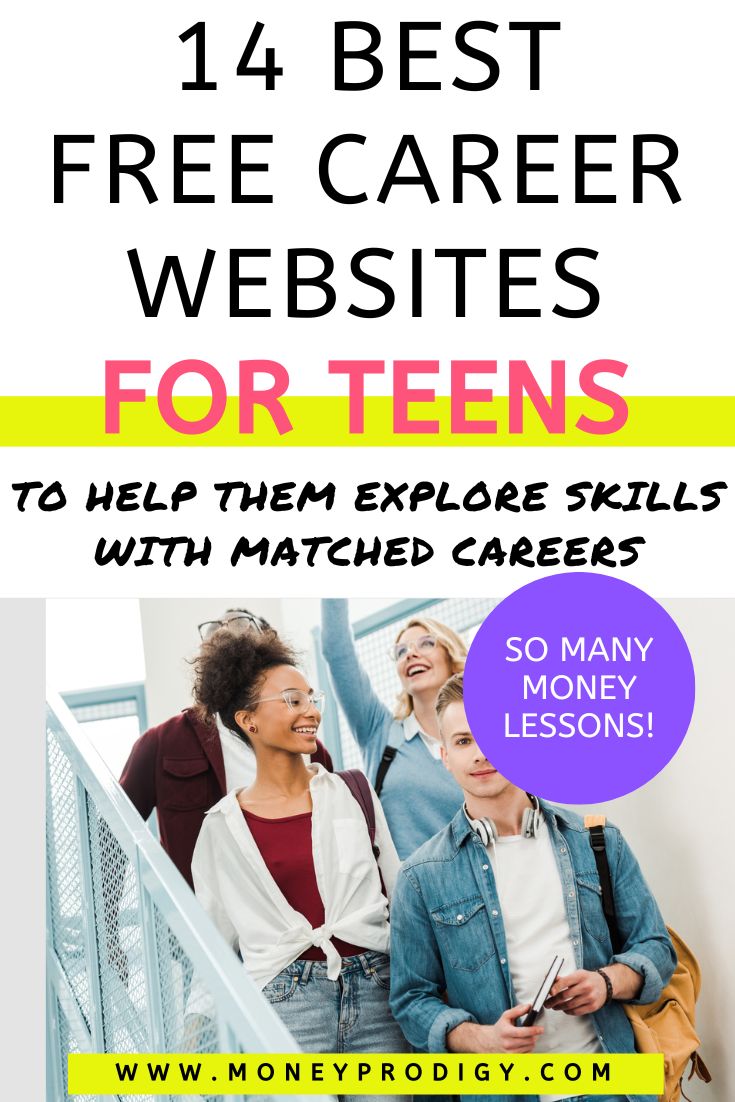
It’s an awesome thing to give teens motivation and purpose behind their education – experts say this can increase their focus, and interest, and even get more of your students to graduate.
The thing is: most students can’t name very many careers or job types. It’s because they haven’t been exposed to tons of industries, careers, vocations, or even jobs.
That's why career awareness and career exploration for students are so important at this stage in life.
These career sites for high school students will help them to first cast a broad net into career and skillset exploration and then to narrow their lists down enough so that they can do meaningful career and job research.
Helping High School Students Choose a Career
Before we jump into these great websites, let's put a little structure to how you can help a high school student choose a career.
Plus, let's manage our expectations a bit. I mean, it's not 100% likely that a high school student is able to pick out what they want to be (even after they go through all this career exploration) at this age.
And that's okay!
I think it's important to help them narrow down 2-4 possible fields, and then put in some research into those. Using the websites below.
Here are some steps to help high schoolers pick 2-4 career fields to research:
Step #1: Skillset Identification
First, you need to help a student figure out what their skill set is.
Step #2: Interests Identification
Then, you need to help them figure out what they’re interested in doing, which is a paid position.
Step #3: Match Skillset and Interests to Career Fields
Where these two things intersect is where they should be looking for careers and jobs.
BUT, they might have a ton of different industries/jobs/careers that come back from this stage.
So, they’ll need to narrow that list down to do meaningful career research.
Step #4: Narrow Careers Down
Once they’ve narrowed down to 3-5 different jobs, they’ll want to run each through a research phase to learn more.
Step #5: Research those Careers to Find Out More
Researching a career:
- Income Ranges
- Education Requirements
- Skills Requirements
- Different job types
- Day in the Life
- Reading career books for students
Let's dive into how to do all of this, with some pretty awesome + free career sites for high schoolers.
Career Sites for High School Students – Skills Exploration
This section of career sites for high schoolers is dedicated to free online quizzes that will help your students figure out what their current skill set is, and which ones they might want to develop further.
Psst: got students who will not be going to college? Here's a resource of the best careers without college . You also might want to check out RISE Up's free classroom activities from the National Retail Federation.
1. Princeton Review’s Career Quiz
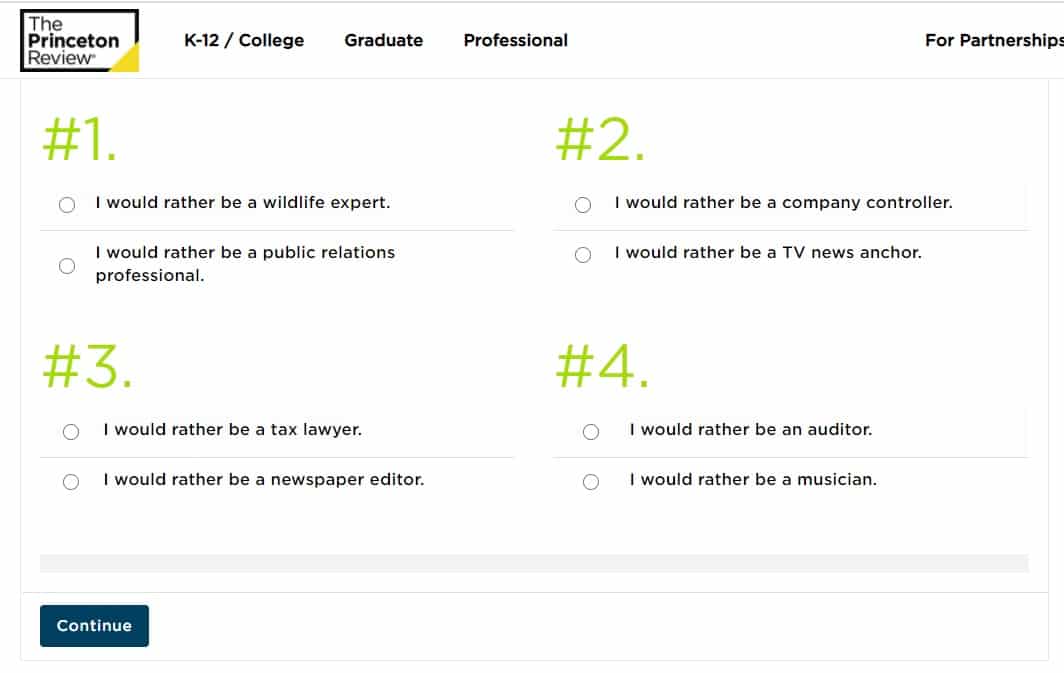
Students will need to register (for free), and then answer a series of 24 questions.
They’ll then receive one of four “interest colors” for “Your Interest” and “Your Style”:
- Red: Expediting
- Green: Communicating
- Blue: Planning
- Yellow: Administrating
For example, I received Yellow for both. This means I’m interested in jobs that require organizing and systematizing, and my style is to work where in an orderly manner with few surprises (haha!).
You can then tab over to “Recommended Careers” for a list specific to your interest and style.
Bonus: One of my recommended careers? Is a small business owner…which I am. Woohoo!
2. Career Girls Career Quiz
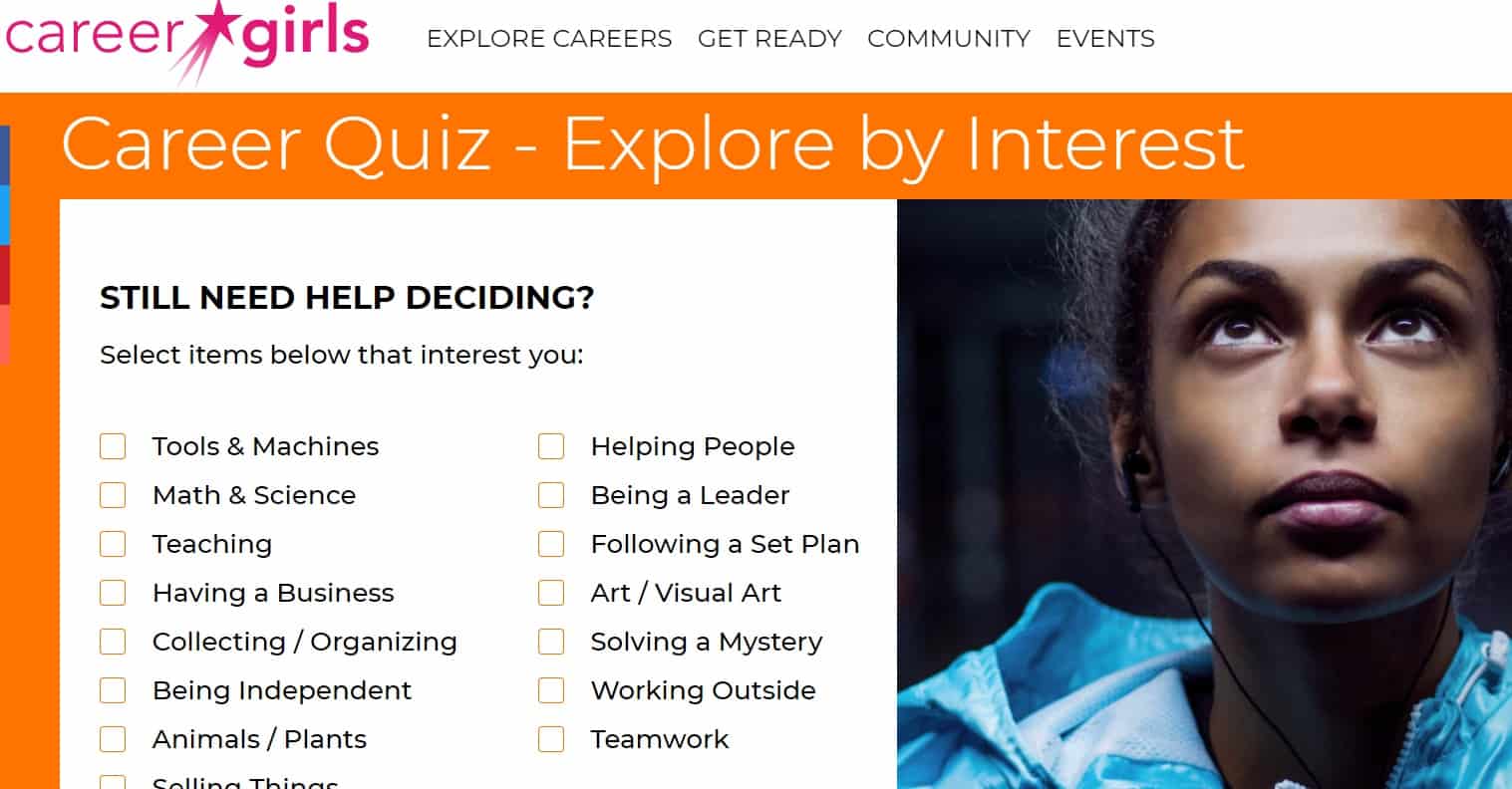
Here’s a personality-based career quiz for girls that offers 35 different characteristics they can check off about themselves (multiple choice is totally allowed).
Then, based on those personality traits, they’ll receive a list of appropriate careers.
For example, I plugged in about 10 different ones about myself, and got the following list of potential careers:
- Real Estate Agent
- Athletic Trainer
- Physical Therapist
- Social Worker
- Human Resources Manager
- Sociologist
- Fitness Trainer
- Emergency Management Director
- Psychologist
3. O*Net Interest Profiler
Gives you RIASEC interest levels, which correspond with different jobs.
- Investigative
- Enterprising
- Conventional
Once you get your interests, you then go here and find out which jobs line up with those interests.
Hint: if you don’t have time to get your students using this website? Then they can take the PDF version of the quiz .
4. Education.com Online Career Test
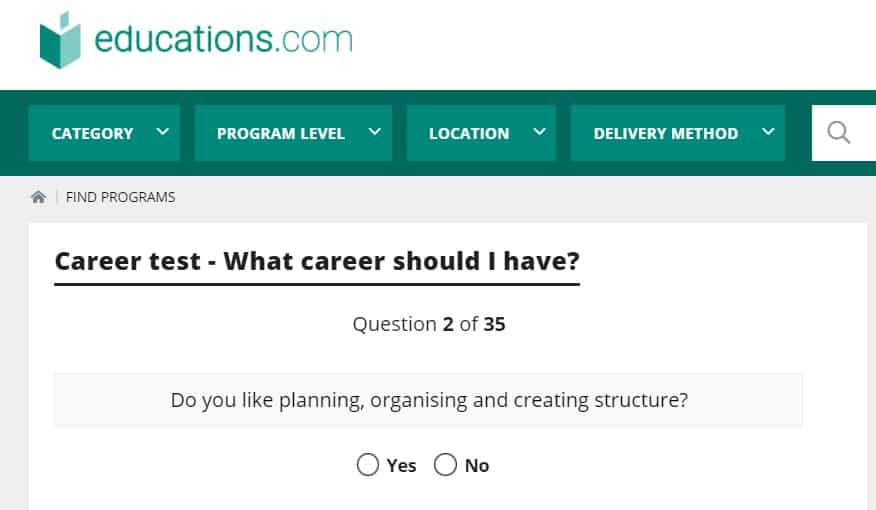
Answer 35 questions, register with an email, and then you get your results (on the same screen – not through your email).
The different types of career paths you get measured for:
- Service-minded
- Communications
- Environmental
Note: This site steers students toward the type of coursework they should take, based on their results.
5. Career One Stop’s Skill Matcher
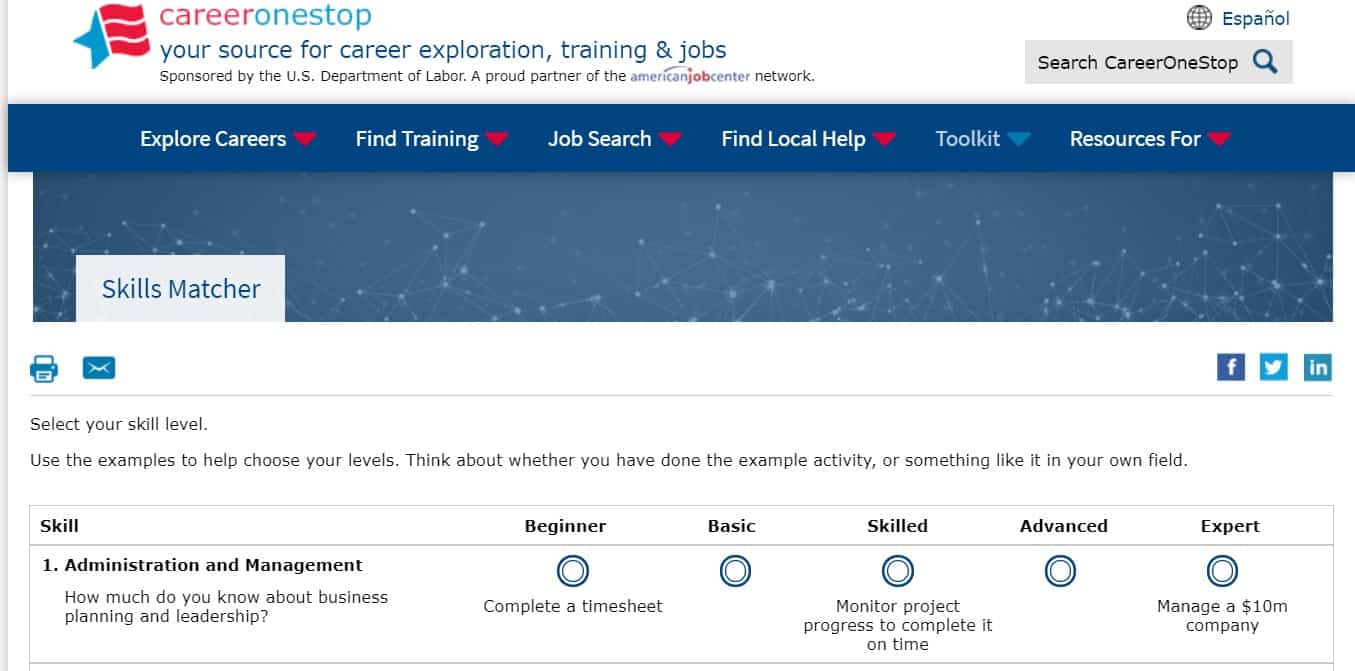
Career One Stop has figured out 40 workplace skills, and created a skills matcher to help students match their real-life skills with them.
Students can choose a beginner, basic, skilled, advanced, or expert level in each of the 40 listed workplace skills.
In the end, they’ll offer your teens a list of jobs where their natural skills and the ones they want to develop come into play.
Career Sites for High School Students – Career Awareness
Career awareness for high school students is so important. Remember, most students can rattle off maybe 20 careers or job types – but there are literally thousands or even millions of different types of jobs out there.
Psst: here's a take your child to work day activity you might want to try, for small business owners.
Not only that but making students aware of the skills needed for certain careers so that they can work towards getting those, as well as what a day in the life of that job looks like, is critical as they continue to tweak their career choices moving forward.
These career sites for high school students will help you do all of that and more. Plus, they all offer free resources that I’ll point out, below!
1. Road Trip Nation
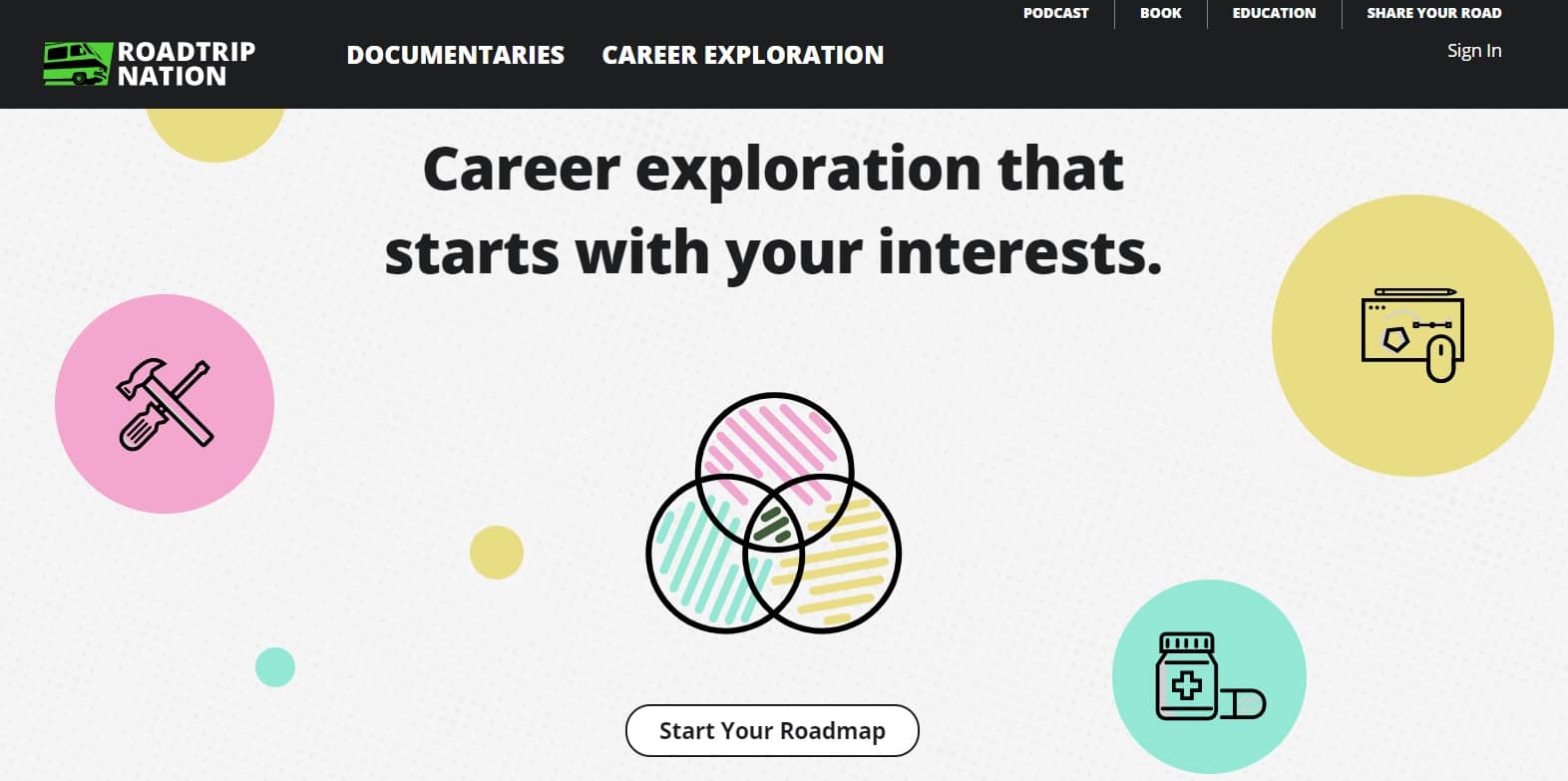
An incredibly cool website for students – where people travel around the US in a Green RV, to talk about and document people in all types of jobs about work that they love, getting lost in their careers, finding their ways, etc.
Students can click “Start Your Roadmap”, and then answer three different questions. Then, they’re sent to a page of actual job ideas that list, among other info, the trend on that type of career (how much it’s growing or not growing). Not only that, but you can click over to “Leaders” and “Majors” to get more info/follow in the footsteps of how others got to that position.
I just love the milestones listed for how someone got into a particular job!
2. Career Girls
I cannot say enough good things about this website – it’s got a huge amount of resources for teen girls to:
- Discover things about themselves
- Research different career paths
- Hear from career role models about specific jobs
- Figure out how to develop employment skills they’re lacking
Be sure to check out this page , where you can download guides that will outline how the activities on this site align with Common Core Standards.
3. Career Village
Here’s a really cool site that will connect your high school students with real-world professionals so that they can get their profession-specific questions answered.
Students can leave a question, and a professional will (hopefully) respond to it!
Actually, I’m really impressed with the responses from real professionals.
Just check out an example:
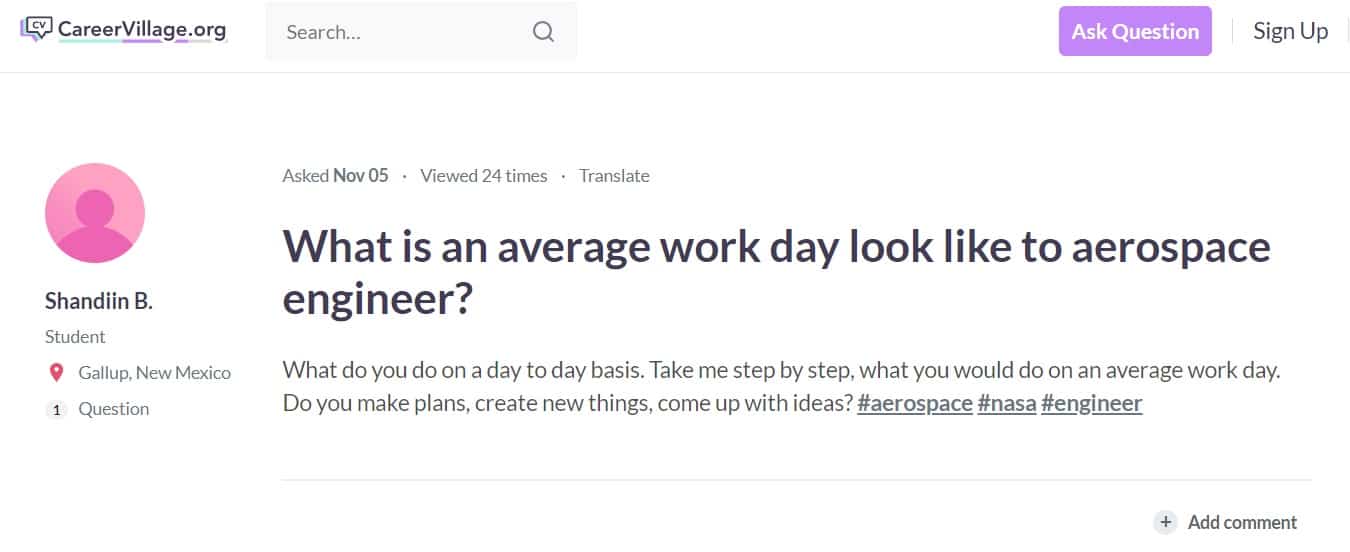
4. Job Shadow
On this site, students can listen to over 400 videos from professionals talking about what a day in their work life looks like.
Interviews are available from professions like:
- Bail Bondsmen
- Firefighter
- Radiologist
- Veterinarian
- Pharmaceutical Rep
- And many, many more
5. Vault’s Day in the Life
Check out this collection of written “Day in the Life” from hundreds of professionals in all kinds of career fields.
For example, under “Human Services”, you can find a Day in the Life from:
- An in-house Grant Writer
- A Foundation Officer
- A Peace Corp Volunteer
6. Mapping Your Future

On this site, there are the following options:
- Visit the featured career
- Match my career interests
- Review careers by clusters
- Career Search
I specifically like the career clusters, because once your student gets an idea of a broad industry they’d like to be in (like “healthcare”), this tool helps them drill down into lots of specific jobs that fall under that.
7. Department of Labor Employment Websites
When researching teen career sites for this article, I was pleasantly surprised to find youth and student career resources on my own state’s employment website.
You can find your state’s various employment websites here , and then root around to see what youth and student resources/services they have.
8. My Future
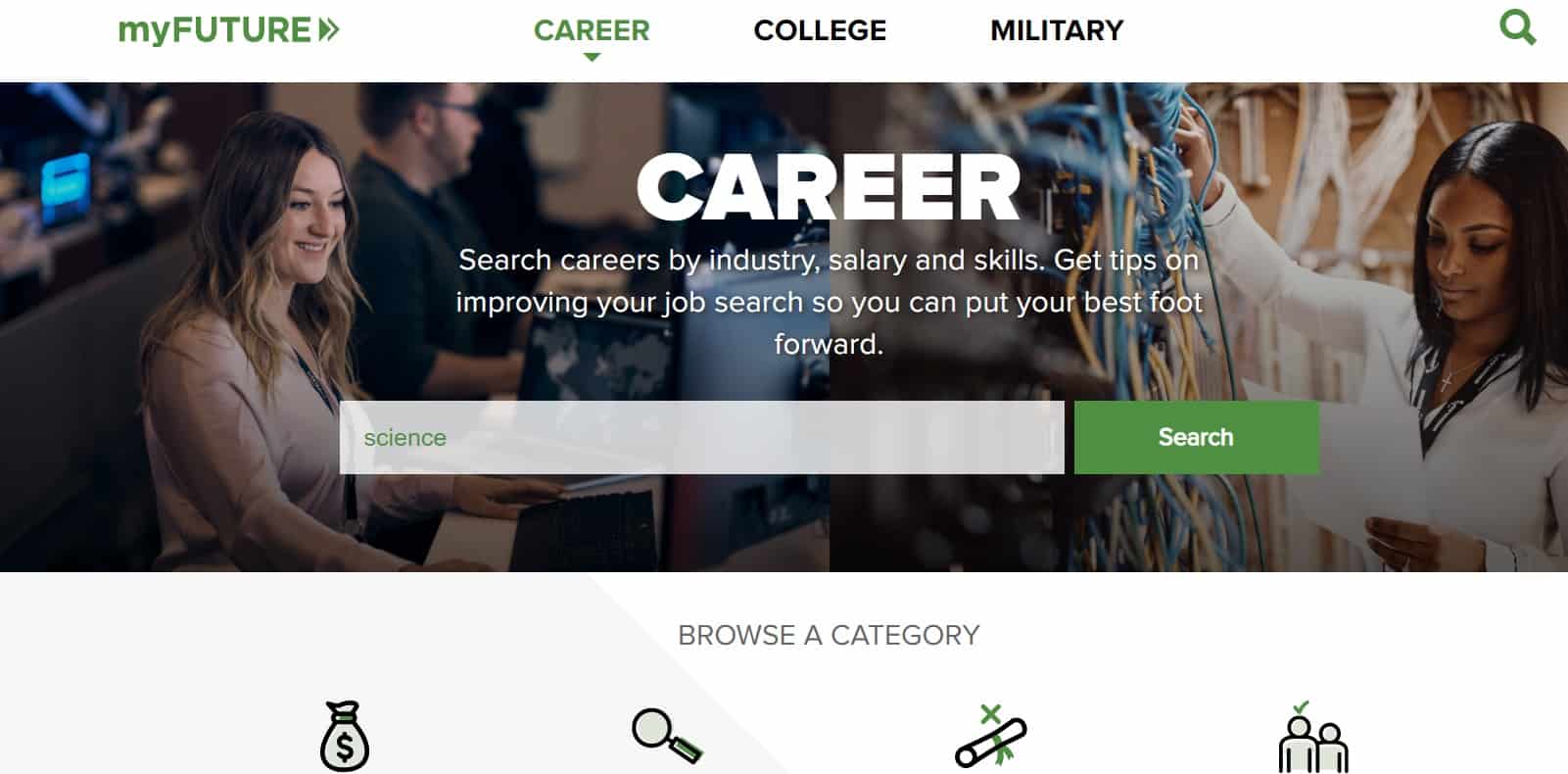
You can input a generic industry/career type (like “science”), and it spits out tons of job titles and salary ranges for that industry.
9. The Forage
The Forage is this awesome new concept where actual companies who hire people every day have created virtual internship experiences.
Not only that, but:
- You can usually put the certification/experience on your resume (they have instructions at the end of each)
- Recruiters routinely go through completers of these programs first to find new job candidates
I reached out to them, and there are job simulations that high school students can take online, for free !
Psst: looking for more? I've included some career game sites in this article on career exploration for students .
10. MyCareerTech
This is a free platform created with CTE certified teachers.
Each topic comes with video lessons, a certification, lesson plans, and tests.
Career clusters are extensive – check them out:
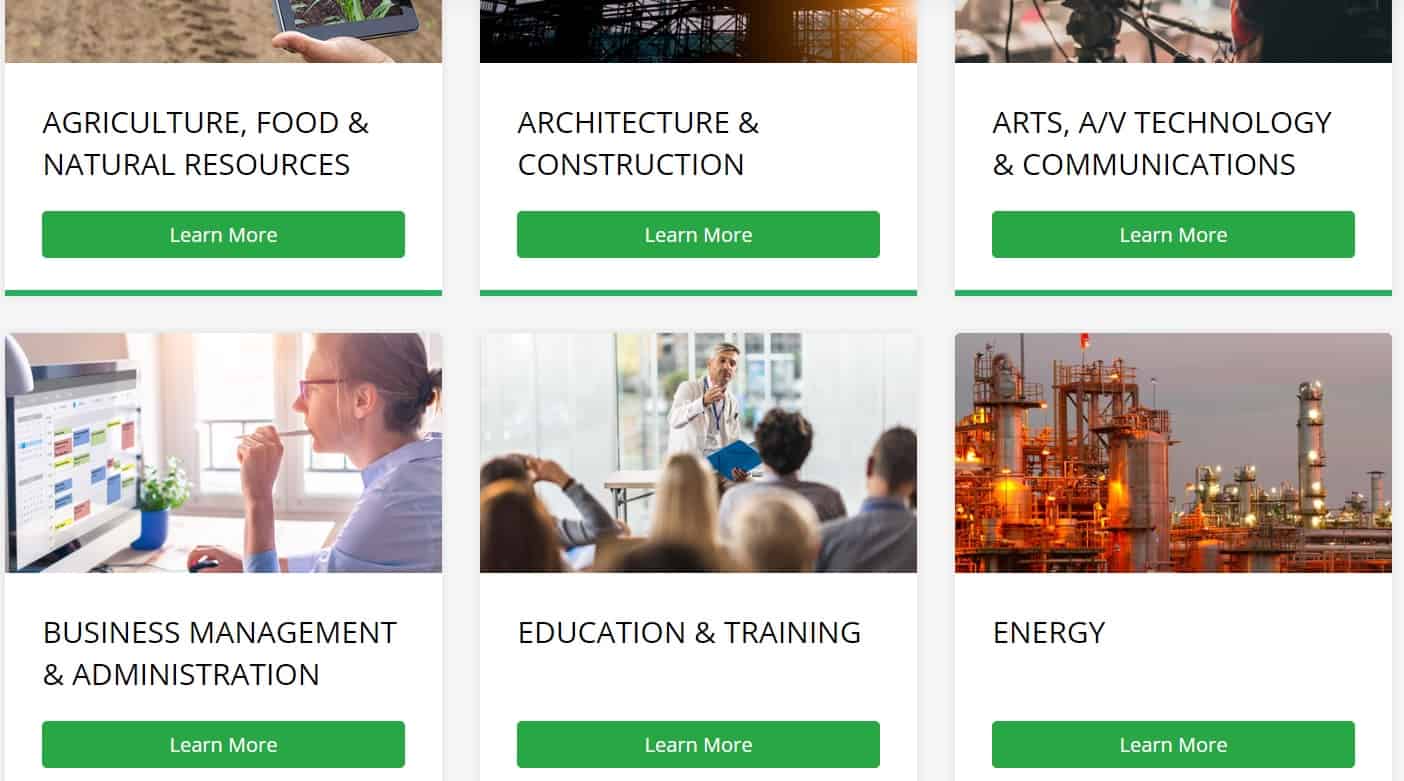
Career Awareness for High School Students
What exactly does it mean to be “career aware” for high schoolers?
Let's discuss that.
I think there are several things teens need to know in order to be career aware.
Student Understands Difference Between a Job and a Career
A job is different from a career, and vice versa.
A job is “a paid position of regular employment.” A career is “an occupation undertaken for a significant period of a person's life and with opportunities for progress.”
Each person's career will likely be filled with multiple jobs, internships, etc.
Also, sometimes you take a job that you don't necessarily want or like, because:
- a) it pays the bills
- b) it's a stepping stone to where you eventually do want to get to
Student Understands How Skills Work within Careers
There are specific skills someone must have to work in a particular field. Some skills you need to have before you can even apply for an entry-level position. Some skills, you obtain while on the job.
Skills can be obtained through apprenticeships, through internships, through education, through experience, through extra-curricular classes you take online, etc.
Here's a great CommonLit reading assignment called, “Will the ‘Right” College Major Get You a Job?” Another great one to give your students is “The Myth of the College Dropout” .
Pro Tip: It's important for students to know that some skills are “transferrable”, meaning, you can use that same skill in a different career (and you should point those out in a resume if you're looking to switch jobs).
Student Understands the Career Industry is Dynamic and Ever-Changing
Careers go in and out. Sometimes a career is trending up, and sometimes it's dying out. Sometimes, it's maintaining.
Something else that's particularly important for high school students to understand – since they haven't entered the job market yet and might not be for several more years – is how a particular career is trending.
You wouldn't want them to spend 4 years studying for a career field that will hardly be available when they get out of college or trade school, right?
That's why I love the bureau of labor’s Occupational Outlook Handbook , which shares if a particular field is growing/expanding or not.
Student Understands Careers Have Different Pay
While each career holds a host of jobs at different pay points, we all know that some career fields pay more than others. Not only that, but some career fields have more hourly-type jobs, while others have more salary-type jobs.
Wow – did you make it all the way to the end? A gold star for YOU! I hope you found these career sites for high school students helpful, and are super-pumped to help that next generation of workers to get a clearer path on how to move forward. Not only that, but THANK YOU for your work as a teacher! We need more caring role models for students like you.
And if your teen is ready to start earning something on the side now? Here are the best online jobs for teens that pay .
- Latest Posts
Amanda L. Grossman
Latest posts by amanda l. grossman ( see all ).
- 9 Simple Money Projects for Kids & Preteens (to Master Money) - June 22, 2024
- The Earn Your First $100 Challenge (Free Printable Included) - June 21, 2024
- The Factory Tour Entrepreneur Project (Free Printable) - May 30, 2024

For Businesses
For students & teachers, 4 relatable career exploration activities for high schoolers.
Jeannette Barreto
As educators, we have the unique opportunity to shape the future of our students and prepare them for the world beyond the classroom. A crucial aspect of this preparation is guiding students through career exploration. Career exploration helps students understand their interests and passions and equips them with the essential skills and knowledge to make informed decisions about their future paths. In this blog, we will delve into the significance of career exploration and how EVERFI, an innovative digital learning platform, can assist teachers in empowering their students throughout this transformative journey. November’s National Career Development Month is an especially relevant time in the school year to explore these concepts in the classroom.
What is Career Exploration?
Career exploration is the process by which individuals, particularly students, delve into the world of work to understand their interests, values, and aptitudes in relation to potential careers. It’s not just about finding a job; it’s about discovering where one’s passion, skills, and the demands of the labor market intersect. Through a myriad of activities, such as internships, career assessments, informational interviews, and research, individuals gain a clearer perspective of the professions available and the educational pathways leading to them.
By undergoing career exploration, students are better positioned to make informed choices about their academic pursuits and future professional endeavors, ensuring a more fulfilled and aligned career journey.
The Importance of Career Exploration
In today’s fast-paced world, understanding potential career paths early on can drastically affect a student’s future. This section emphasizes why it’s crucial to start this exploration early and how it benefits the students’ overall development.
Understanding the Impact: Why Career Exploration Matters
Career exploration is a fundamental part of personal and academic development. By encouraging students to explore various career paths, we enable them to envision their future possibilities and set meaningful goals. This early exposure to diverse professions broadens their horizons and instills a sense of purpose in their educational pursuits.
Career exploration also aids in the development of self-awareness. When students engage in activities that align with their interests and strengths, they become more confident in their abilities, leading to improved academic performance and a higher level of motivation.
Building a Solid Foundation: Early Career Awareness in Education
Introducing career awareness at an early age can profoundly impact students’ future choices. As teachers, we can incorporate age-appropriate career exploration activities into our lessons, exposing young minds to various professions and industries. By creating a positive and supportive learning environment, we can nurture their curiosity and aspirations from the beginning of their educational journey.
Nurturing Students’ Interests: How Career Exploration Encourages Motivation
Students are more likely to stay engaged in their studies when they see the relevance of their education to their future goals. Career exploration bridges the gap between classroom learning and real-world applications, allowing students to connect academic subjects to practical uses in the workforce. This connection fosters intrinsic motivation and a thirst for knowledge as students recognize how their studies directly contribute to their future success.
4 Relatable Career Exploration Activities for High Schoolers
Helping high school students explore potential career paths is vital to preparing them for their future. By engaging in interactive and relatable activities, students can gain valuable insights into various professions, develop essential skills, and make informed decisions about their career aspirations. In this blog, we present four relatable career exploration activities designed to spark curiosity and inspire high schoolers as they embark on their journey of self-discovery.
1. Career Shadowing Day
Organizing a career shadowing day allows students to gain firsthand experience of a typical day in a particular profession. Collaborate with local businesses, hospitals, law firms, tech companies, or workplaces that align with students’ interests. Prioritize disciplines that students have expressed curiosity about or might consider as future career options.
On the designated day, pair students with professionals in their chosen fields and allow them to shadow these experts for a few hours. Please encourage students to take notes and ask questions about their daily yaks, responsibilities, and the educational pathways that led to their careers. After the experience, hold a debriefing session where students can share their reflections and insights.
2. Career Interest Inventories
Career interest inventories are valuable tools that help high schoolers identify potential career paths based on their interests, values, and personality traits. Various online resources and assessments, such as the Myers-Briggs Type Indicator (MBTI) or the Holland Code test, provide insights into career preferences.
Have students complete one or more of these inventories and then discuss the results together. Please encourage them to research careers that align with their interests and explore educational requirements, job outlook, and potential salary ranges for each profession.
3. Mock Interviews, and Resume Building
Preparing for job interviews and building a compelling resume are crucial skills for future careers. Organize mock interview sessions where students take turns being both interviewers and interviewees. Provide sample interview questions and offer constructive feedback to help them improve their communication skills and confidence.
Simultaneously, guide students in creating their resumes. Highlight the importance of tailoring the resume for specific job applications, emphasizing relevant skills, experiences, and achievements. Allow students to explore different resume formats and templates to find one that best represents their unique qualities.
4. Career Panels and Guest Speakers
Invite professionals from various fields to participate in career panels or deliver guest lectures at your school. Create a schedule of sessions throughout the school year, covering multiple careers, industries, and educational paths. These sessions can be held during lunch breaks, after-school hours, or incorporated into existing career-focused classes.
During these interactive sessions, please encourage students to ask questions about the speakers’ career journeys, the challenges they faced, and advice they have for aspiring professionals. Hearing real-life experiences and insights from many industry experts can be immensely impactful for students and provide them with realistic views of their dream careers.
Keys to Your Future: College and Career Readiness
The course aims to equip students with the necessary skills to navigate toward a fulfilling college experience and a successful career. Through interactive real-world scenarios, students explore lessons on college exploration, financial literacy, career readiness, and personal development.
College Exploration
College Exploration – assists students in researching and identifying colleges that align with their interests, career goals, and academic strengths. It also covers the application process, financial aid options, and scholarship opportunities, helping students develop well-informed strategies for pursuing higher education.
Financial Literacy- equips students with essential financial skills, including budgeting, managing student loans, and building credit responsibly. Students learn how to make informed financial decisions, avoid common pitfalls, and plan for their financial future, ensuring they are financially savvy as they embark on their college and career journeys.
Career Readiness
Career Readiness- designed to help students explore potential career paths and develop the skills needed to thrive in the workplace. They also learn about resume building, interview preparation, and networking strategies.
Personal Development
Personal Development – emphasizes self-awareness, emotional intelligence, and goal setting to empower students to overcome challenges and maximize their potential. Students are encouraged to explore their strengths, weaknesses, and growth mindset.
Benefits of Career Exploration
Career exploration offers a plethora of advantages that extend beyond simply identifying a suitable profession.
Boosting Confidence
By understanding potential career paths, students gain a sense of direction. This knowledge empowers them, bolstering their confidence. As they navigate the realm of potential professions, they start recognizing their worth and the value they could bring to various roles.
Academic and Career Alignment
One of the major pitfalls students often face is pursuing an educational pathway that doesn’t align with their career aspirations. Career exploration allows students to tailor their academic choices, ensuring they’re on the right track from the start. This alignment not only streamlines their journey but also maximizes the return on their educational investment.
Reducing Future Job Dissatisfaction
Making uninformed career choices can lead to job dissatisfaction in the future. By researching and understanding different professions early on, students are more likely to choose careers that resonate with their passions and strengths. This proactive approach can drastically reduce the likelihood of mid-career crises or frequent job switches later in life.
Empowering The Next Generation Through Career Exploration
Engaging high school students in relatable career exploration activities can significantly influence their future choices and aspirations. Two of EVERFI’s newer courses: Accounting Careers: Limitless Opportunities and Data Science Foundations expose high school students to the world of opportunities that exist within these career fields. By providing hands-on experiences, career inventories, mock interviews, and insights from industry professionals, we empower our students to make informed decisions about their future paths. These activities foster self-awareness and encourage curiosity, determination, and a sense of purpose as they embark on their exciting journey of self-discovery and career exploration as educators. Let’s continue to inspire and support our students as they explore the endless possibilities that lie ahead in their professional lives.
___________________________________________________________
Free for K-12 Educators
Thanks to partners, we provide our digital platform, training, and support at no cost.
See why 60k+ teachers were active on EVERFI digital resources last school year.
Sign Up Now
Be sure to subscribe to our K12 YouTube channel and check out these related videos to help with back to school lesson planning:
College and Career Readiness Skills for HS Students
Teaching Data Science in High School
Accounting Careers: Limitless Opportunities
Stay Informed
Thanks! Look out for our next newsletter, coming soon.
Explore More Resources
5 ways to support teacher mental wellness.
Mentally healthy teachers leads to better performing students. Get 5 ways to support your teachers’ mental wellness.
How to Build Credit as a Teenager
Build credit now for better interest rates in the future! Learn how even as a teen, you can get started today.
Untold Stories: Marcus Smith II's Mental Health Playbook and Advocacy Journal
See how this former NFL player's work is making a significant impact, encouraging others to prioritize their mental health and breaki ...

7 Career Exploration Activities For High School Students
High school students, at their age, have acquired a lot of knowledge. They still wonder what they are going to do with the knowledge attained or in which job they will ‘fit in’. If you are also going through the same fix, take a more cognitive approach to find where your future lies.
We bring you here some of the career exploration activities that help you find your calling after completing high school or levels beyond that. You can do these activities along with your friends or may take the help of a teacher or placement cells in colleges wherever external support is required.
Interesting career exploration activities
- Interview a successful CEO
Interviewing is an art that can help you get the facts right from the horse’s mouth. The students can request CEOs or key executives of companies operating in your city to visit your high school as guests. It requires:
- Make a list of companies or offices in your city
- Sending a formal invitation letter to the guest CEO
- Preparing a questionnaire with the help of friends
- Organizing a session for Q & As.
It is an activity that may require you to reach out to the school management or teacher to help you get the CEO for the session.
A quick tip: Refer to the alumni list of your own school; the successful alumni will love to come down to help you and revisit their high school time.
- Live a day in the shoes of…
How about knowing firsthand the job responsibilities, challenges, and rewards that come with any job profile? Organize a day visit to the companies and let the high schooler spend it in the company of the professional that he/she wants to become.
High schoolers may be selected based on the interest they show and match with the profiles where their interests are utilized the best.

Some of the job profiles that usually get the attention of high schoolers are:
- Physical Training Expert
- Veterinary Doctor
- Public Relations Officer
- Air Traffic Controller
- Marine Biologist
Try to include the job profiles which are not usually known. It may help high schoolers get an idea of the jobs that they may not hear about from family or friends.
- Take Surveys
Career exploration surveys are designed to explore the interests of the students. The main motive of these surveys is to prepare the profile of the students and match them with the opportunities available.

Students want to take up careers that are likely to fill them with monetary as well as emotional satisfaction. For that correct profiling of aptitude and the areas where that bend of mind is utilized the best, the surveys are designed.
- Chalk out career pathways in different fields
What does reaching the dream career look like? Having an idea about it beforehand helps you know how to prepare for different phases and milestones. We all have readily available information sources – working parents, elder siblings, teachers – who can share their journey.
Using their experiences, you can draw a flow chart that tells about the courses to join, the entry levels in various fields, the experience required to move to higher positions, etc. Thus, you get in front of you a visual presentation of the career graph in the desired field. For example, you can make a career path for becoming a surgeon . That will help you know classes to join, how to apply, entry-level jobs, etc.
This simple activity can help students stay focused on their path to reaching their career goals and make efforts in the correct direction.
- Brainstorming career ideas with friends
Tweak the career aspect in your ‘Know your friends’ activity and you will get an interesting career exploration activity to do with your friends. As you grow and reach the high school level, you get a vague idea of your areas of interest, aptitude, and life you want to live as an adult.

With all this information stuffed inside, you can find an outlet in your friends with whom you can sit and brainstorm ideas. Brainstorming serves two ways. First, you get to know about various fields available for making a career. Second, you find friends who share your aspirations. Thus, you find the company that is likely to stay with you in life beyond high school.
- Career assessment charts
These are similar to surveys, but offer a peek into the level of liking the high school students have in different areas of work. The list of the jobs is added in the rightmost column and the degree of liking – least liked to most liked columns are to be ticked in front of every job. It helps the students discover their strengths, likes, and aptitudes for various job profiles.
These charts are available in the form of free interests profiler and personality profiler too.
- Career exploration worksheets
These worksheets are designed keeping various purposes in mind. The students can fill these worksheets by doing research or using their literary skills. A few examples of free worksheets for career exploration are:
- Find your Right Job Worksheet: It is a research-oriented resource to help understand find the opportunities available after completing college. To fill out this worksheet, the students may go through the employment news, career portals, ‘Careers’ section of the business websites, etc., and shortlist the jobs that they find appealing. Also, they will fill out the details like qualifications required for the job, job responsibilities, and growth possibilities of the job.
- Career research worksheet: It is a part of life skill activity too. The students can fill out the worksheet stating the scope of the job, how it serves the community, how it offers stability in life, and what factors of the job match their personal aspirations.
- Income from career worksheet: It is again an exploratory activity where high schoolers note down the job profiles and find the salary packages and perks offered to the candidates.
Free sites where you can find these career exploration activities
Wondering where you can get the ready-to-use support for carrying out career exploration activities? Worry no further! Listed here are some of the best sites that provide you the free resources to help you with career exploration.
- Career Research Handout at Teachers Pay Teachers
- Interest profiler at My Next Move
- Career Assessment Questionnaire at Truity
- Career Exploration Worksheets and Activities at Workforce Solutions
- Career Planning Resource by Biz world
Summing up,
To become successful in life, planning from an early stage helps a lot. Career planning and exploration as a part of the high school curriculum make complete sense as it helps students understand their skill set and go for jobs where they are happy and actively contributing.
By taking cognizance of the courses required to do and jobs that offer good salaries, experience required for growth, etc., the students can be clear in their minds about the future. It will help them have an action plan that yields positive results.

Sananda Bhattacharya, Chief Editor of TheHighSchooler, is dedicated to enhancing operations and growth. With degrees in Literature and Asian Studies from Presidency University, Kolkata, she leverages her educational and innovative background to shape TheHighSchooler into a pivotal resource hub. Providing valuable insights, practical activities, and guidance on school life, graduation, scholarships, and more, Sananda’s leadership enriches the journey of high school students.
Explore a plethora of invaluable resources and insights tailored for high schoolers at TheHighSchooler, under the guidance of Sananda Bhattacharya’s expertise. You can follow her on Linkedin
Leave a Comment Cancel reply
Save my name, email, and website in this browser for the next time I comment.

10 Career Exploration for High School Students Ideas
- Filed under: Career Exploration , Life Skills
Share this post:
Career education for high school students.
High and middle school students need help understanding what they will face when they graduate and they need the confidence to explore the world outside of the school walls. Your influence can play an important role in career exploration for high school students. By exploring their career choices in your class, you can have lasting effects on the decisions they make.
When I was a high school junior, my guidance counselor told me that I would never get into college because I was not a strong math student. Talk about a buzz kill, well I was determined to prove him wrong!
20 years later, I have 2 Master’s Degrees, an online curriculum business, and taught for 15 years in grades 7-12. I was lucky to have supportive parents but that comment that he made has stuck with me. As I tell my daughters, your life will take twists and turns. What you may be interested in now may change. In fact:
About 80% of students in college end up changing their major at least once , according to the National Center for Education Statistics.
Let’s take a look at some of the career exploration lesson plans that may work well for you and your students.
Career exploration for high school activities:

Creative Ideas for Career Exploration
1- Our students love playing this career exploration for high school activity . It is a fact or fiction game that gets them thinking about different careers and the workforce. It is an effective way to give them short bites of information in a fun way. My students always look forward to the little challenge of these questions each day and can even help them identify their future career plans!
2- An interest inventory- Another way to get students thinking about future careers is to do an interest inventory. This CTE careers cluster student inventory is a great start to helping young adults begin to think about their strengths and interests and maybe even start thinking about their “dream job”. It also describes the 16 Career Clusters and explains various careers to which many kids have not been exposed in their lives. Starting in early high school or middle school is a great idea because some students may show an interest in your high school technical education program.

3- Bell Ringers- I am a huge fan of bell ringer journals for classroom management in high school. We use the Career Exploration Bell Ringer Journal at the beginning of each class to help our students think about soft skills and career exploration. Not only do they get your students thinking about career exploration, but they can create a great classroom routine that helps you and them.
Using Real World Experiences
4- Have community members come into the classroom and discuss their careers. This is another great way to help students understand the opportunities available to them after graduation. Bringing into the classroom an engineer, a health care professional, a police officer, a computer technician, a business owner, an electrician, and more can help to educate the kids about the workforce.
By bringing community members into the classroom, students gain exposure to a diverse range of careers, establish meaningful connections, and benefit from the wealth of knowledge and experience that professionals in the community can offer. It enhances their career exploration, fosters inspiration and mentorship, and facilitates a more holistic and practical understanding of the world of work.

Ask the student’s parents if they would be interested in coming in to speak. Sometimes family members would be happy to share about their career pathways. They can also tell them about the important skills and education they needed to break into the career and the different ways they prepared. Another option is to have local businesses come to speak to students about how they run a business and the skills and hard work that was needed.
As teachers, we may have always known what we wanted to be, but that is not the case for many teens. They need help understanding their strengths and skills and direction toward future goals. What a fun position to be in to help them with these important life choices!
5- An Extracurricular Activity Project – As far as career exploration for high school, this often gets overlooked! Kids find strengths and new interests when they participate in extracurricular clubs and activities. They also make connections with other adults. Sometimes, students don’t know what is available to them in school or their community. Create a project in which students are assigned school and local extracurricular activities and have them present about them.
These activities can also help students beef up their college applications! You can even have students create a gallery walk to present the information and to get the students walking. If you want to learn more about gallery walks, check out our blog post on that and other instructional activities.
6- Life Skills Games- We all know that no matter what grade level, kids love a good board game. Have them play these life skills board games including this career exploration or free check writing game and a credit game to learn about personal finances, financial literacy, and vocabulary related to credit and spending.
These can be played in a small group and once you set it up, the students can play a couple of rounds. We all know that games have the power to capture students’ attention and create a sense of enjoyment and excitement. When learning feels like play, students are more motivated and eager to participate, leading to increased enthusiasm and willingness to learn.

7- Career Day- Have your students create a career day for the school. They can research different careers and create posters or Google slides as well as informational handouts at stations and have other students come and walk around their presentations. Have them research job interview questions for that career, higher education requirements, average salary, and more.
This not only educates them but it educates other students that come to the career day in career awareness and potential jobs in their future. If you can swing it, elementary students would even love a little trip to see what the high schoolers have created and learn about the types of jobs and the world of work.
8- Field Trip- It may take more work and effort on your part, but planning a field to a job site can be something they will never forget! It can also educate them on potential careers and what it means to be an employee or to own your own business. Young people love getting out of the school building and exploring the outside world with their friends. You can make this into a fun activity that influences their career decisions.
Moreover, field trips to careers can be highly inspiring and motivational for students. Seeing professionals in action, witnessing their dedication and expertise, and hearing their success stories can ignite a sense of passion, purpose, and ambition in students, encouraging them to pursue their own goals and dreams.
9- Volunteering and Community Service : Have students research local volunteering and community service opportunities. Encourage students to engage in volunteer work and community service related to their interests. This not only helps them develop important skills but also exposes them to potential career fields they may not have considered before.
Additionally, you can consider having an older student or recent graduate come in and talk about the volunteering experience that they have and how it helped them. Introducing students to peer role models can be a big motivator for students and oftentimes more so that teachers and other adults. It could also open their eyes to different options available to them for community service in your area. Peers can be a great resource for talking about college entrance or trade jobs that are available in a particular field.

10- Role-Play Interviews- Students can interview one another to practice interview skills and learn about interview questions. You can give them the questions ahead of time to prepare their answers or you can have them research questions and create a mock interview. I would look over their questions if they created them just to be sure they are appropriate and make sense. Here is a list of questions that you can use or give to students as an idea.
Subsequently, engaging in role-play interviews helps students build confidence in their ability to handle interview situations. Through practice and constructive feedback, students can overcome nervousness, improve their self-presentation skills, and develop a sense of poise and professionalism.
- Assign students different roles, such as job applicants and interviewers.
- Provide them with job descriptions and interview questions.
- Instruct students to conduct mock interviews, simulating real-life job interview scenarios.
- Encourage constructive feedback and reflection on the interview process

Career Planning and Readiness Teaching Ideas
Career readiness is a crucial aspect of preparing high school students for their future endeavors. It goes beyond academic knowledge and focuses on equipping students with the skills, attitudes, and competencies necessary for success in the workforce. By fostering career readiness, students develop a deep understanding of the professional world and gain practical skills that enable them to navigate the complexities of the job market.
This includes skills such as effective communication, critical thinking, problem-solving, teamwork, adaptability, and digital literacy. Additionally, career readiness encompasses the development of soft skills like professionalism, time management, and leadership, which are highly valued by employers.
Consequently, by preparing students to be career-ready, we empower them to confidently pursue their desired career paths, transition smoothly from education to the workforce, and thrive in a rapidly evolving and competitive global economy.
Here are a few career readiness activities that your students might like:
1- Professionalism Digital Escape Room – this activity has students moving through clues to break codes about workplace professionalism. The questions range in topics from workplace ethics, and work apparel to email etiquette and will keep your students engaged for about 40 minutes.
Additionally, there are videos included as well as articles to read in order to find the answers. They immerse students in a captivating storyline or theme, encouraging them to actively participate in the learning process rather than passively consuming information.

These digital escape rooms are designed to align with specific educational topics or subjects. They provide an interactive and engaging way for students to review and apply their knowledge. Whether it’s a history-themed room, a math-focused room, or a science-based room, students can deepen their understanding of the subject matter while having fun.
2- Resume Building Activity – Have you tried Canva? They have awesome resume and curriculum vitae templates that students can use to plug in their information and special skills.
Canva also lets them save their work right on the platform so they can come back to it later. Here is a video showing you how to set this up for students. Also, Canva’s collaborative features enable students to work together on their resumes. They can invite peers or educators to review and provide feedback on their designs, fostering a collaborative and iterative process that enhances the quality of their resumes.
Using Canva to build resumes provides students with valuable digital skills that are increasingly relevant in today’s job market. They learn about design principles, visual communication, and using digital tools effectively, which can be applied to other professional tasks beyond resume building.
TV Shows to Help Teach Career Readiness
3- Have them watch “The Office” for a Fun Activity – Do something funny by having students watch a TV show such as the office and find workplace etiquette examples of what to do and what not to do. Also, The Office is pretty hilariously a stereo-typical office setting which is not truly real life but it can be a fun way to find social norms and taboos that exist about working a white-collar job.
The show showcases various leadership styles through characters like Michael Scott, Jim Halpert, and Dwight Schrute. Students can analyze and evaluate different leadership approaches, learning about the impact of leadership on team dynamics and employee morale.
“The Office” offers insights into organizational behavior and the impact it has on employee motivation and productivity. Students can observe how factors like organizational structure, culture, and management decisions influence the overall functioning of the workplace all while laughing.
3- Workplace Ethics Discussion : A workplace ethics discussion is a valuable activity for students as it helps them develop a strong understanding of ethical principles and prepares them for the expectations and challenges they may encounter in the professional world.
- Engage students in a discussion about workplace ethics and professionalism.
- Present scenarios and case studies that highlight ethical dilemmas and ask students to discuss the best course of action.
- Foster critical thinking and ethical decision-making skills.
4- Job Shadowing : Job shadowing allows students to step into the shoes of professionals and observe their day-to-day activities. Additionally, it provides a realistic and authentic view of the work environment, tasks, and challenges involved in a specific job or industry.
- Arrange for students to spend a day with professionals in their desired fields.
- Allow students to observe and learn about the day-to-day responsibilities and skills required in those professions.
- Encourage students to ask questions and engage in conversations with professionals to gain insights into their career paths and learn natural skills for the workplace.
5- Technical Education Program Shadowing – many school districts offer CTE courses and students don’t realize that they exist. Have students tour a building or shadow as career tech. education students and record their observations about professionalism and how it may be different in courses such as real-world classes. In addition, they will probably pay close attention to what their peers are doing in a trade school and learn from the experience.
Homeschool Career Exploration Ideas
1- Business Owner Exploration : Encourage students to explore entrepreneurship by developing their own business ideas or projects. They can create business plans, conduct market research, and learn about the practical aspects of running a business. This allows them to explore their interests and gain valuable entrepreneurial skills.
2- Volunteer Work : Help students find volunteer opportunities related to their career interests. They can contribute their skills and time to organizations or projects that align with their desired fields. Also, this allows them to gain hands-on experience, develop transferable skills, and make connections within their chosen industries.
3- Virtual Field Trips and Webinars: Take advantage of online resources by organizing virtual field trips to businesses, universities, or industry conferences. Many organizations offer webinars or virtual tours that provide insights into specific careers or industries. Engage students in discussions and reflections about what they learned.
4- Job Shadowing or Virtual Mentoring : Arrange for students to shadow professionals or participate in virtual mentorship programs. They can spend a day with a family member, friend, or local community member who works in a career field of interest. Alternatively, virtual mentorship programs can connect students with professionals through video calls or online platforms.

In conclusion, teaching high school students about career exploration is of utmost importance. By providing them with the knowledge, skills, and experiences necessary to make informed decisions about their future, we empower them to shape their lives with purpose and fulfillment. Career exploration equips students with a deeper understanding of themselves, their passions, and their unique strengths. It opens their eyes to a wide range of possibilities, allowing them to make educated choices about their educational pathways and future careers.
Why Teach Career Exploration?
Moreover, career exploration instills in students a sense of empowerment, resilience, and adaptability, essential traits needed in today’s rapidly changing job market. By investing in their career exploration journey, we give high school students the tools they need to pursue their passions, navigate career pathways, and build a meaningful and successful future.
Let us embrace the opportunity to guide and inspire them as they embark on their journey toward fulfilling careers and lives.
By embracing career exploration for high school students in our educational system, we empower high school students to become proactive architects of their own futures, equipping them with the tools they need to thrive in a rapidly changing world. Let us foster a culture of curiosity, exploration, and self-discovery, and guide our students towards meaningful and rewarding careers that align with their passions and aspirations.”
Even a homeschool curriculum should naturally include career exploration lessons. Homeschool students in some ways may have more opportunities to explore outside careers as they are not confined to the brick-and-mortar classroom.
This blog post by the Organized Homeschooler includes some great homeschool career exploration activities.
You might also like...

Reading a Recipe Worksheets to Engage Students

6 Fun Cooking Challenges for the Classroom

5 Financial Literacy Worksheets for Middle School

Free Scope & Sequence
Discover more from twins and teaching culinary arts and facs resources.
Subscribe now to keep reading and get access to the full archive.
Type your email…
Continue reading
International Distributors
Home | Blog | Career Exploration for Students: 5 Activities You Can Use Today
Career Exploration for Students: 5 Activities You Can Use Today


Why Is Career Exploration Important?
Career exploration for students is the process of discovering, learning about, and evaluating career opportunities based on students’ interests and values. These should be fun, informative experiences as students learn more about themselves and get excited about what their futures hold.
Exploring future employment options in middle and high school helps students make connections between the skills they’re learning in school and careers they may pursue in the future. Career exploration also exposes students to a variety of potential job opportunities, giving them a better understanding of what’s available to them and what career path makes the most sense for their specific skills and interests.

Where Is Career Exploration Taught?
Career exploration can be taught in both middle and high school as part of career exploration classes, Career and Technical Student Organizations ( CTSO s ) , and Career and Technical Education ( CTE ) classes. Starting in middle school can set students up for success in high school by helping them decide which CTE classes to take and identify potential jobs t hat relate to the career s they’re interested in . In high school, students can continue to grow their knowledge about the ir chosen career path with part-time jobs, internships, and apprenticeships.
5 Career Exploration Activities To Get Started
1. take time to research.
Research projects give students the opportunity to learn where to find information on various careers while learning about those careers. What’s more, research skills are important. Being able to identify, collect, and evaluate information will benefit students in school, college, and the workplace. Create a list of careers for students to choose from by looking at industry in your area, your high school’s CTE options, and what careers your local post-secondary school prepares students for. You can also ask your high school counselor for a list or search for a trending careers list online.
Specify the information your students need to find for their chosen careers. You can have them look up the wage, typical job tasks, education requirements, job outlook, and key skills needed. Be sure to suggest a few valuable resources, like the U.S. Bureau of Labor Statistics .
Once students finish researching, have them present their findings to the class.
2. Use Your Community
Turning to your community for career exploration activities gives students the chance to learn more about their local industry and available jobs. Company tours and interviews with local professionals get students out of the classroom and into local busine sses. Individual or group guest speakers offer options for engaging classroom presentations of various industry opportunities. You could even invite a group of post-secondary instructors to discuss their courses . Encourage engagement by having students prepare questions ahead of time .

3. Incorporate Soft Skills
From teamwork to self-confidence, workers with soft skills help to create an effective and peaceful work environment. These are excellent skills to teach alongside career exploration for students as these skills are necessary to obtain and keep a job in any career path. Assign group work, reflection activities, and roleplay projects to build students’ skills in teamwork, critical thinking, and self-confidence.
Check out our soft skills implementation page for an implementation guide, free posters, and information on the tools you can use to bring soft skills to your classroom.

4. Create CTSO Connections
CTSO programs , such as B PA and DECA , help students develop interpersonal relationships, build teamwork and leadership skills, and set goals. Students who participate in CTSOs have higher levels of academic engage ment and motivat ion , civic engage ment , career self-efficacy, and employability skills. CTSOs feature career exploration lessons and handouts as well as competitive events that incorporate this topic , such as FCCLA’s Career Investigation STAR Event and HOSA’s Health Career Exploration Event .
5. Work With Hands-On Learning Tools
Hands-on learning tools attract and keep students’ attention. These tools let students experience the job in the classroom. We offer a variety of experiential learning aids that are excellent for career exploration for students , such as our Childcare Center Design Kit , RealCare ™ Geriatric Simulator , Swine Litter Processing Simulators , Measurement Math Training Kit , and more.

Career exploration packages
Looking to start or refresh a career exploration program? Featuring hands-on learning aids and lessons curated specifically for career exploration, our career exploration packages address a variety of jobs within agriculture, health science, and skilled trades.

Looking for more resources on teaching career exploration for students? We recommend:
- Visiting our career exploration implementation page for free career exploration lesson plans, blogs about teaching, access to downloadable career posters, and more
- Checking out the Association for Career and Technical Education’s paper on middle school career exploration
- Watching our on-demand webinar, “ Career Exploration Activities for Middle and High School Classrooms “
Leave a Reply Cancel reply
Your email address will not be published. Required fields are marked *
Join our email list!
- Privacy Policy
- Terms of Use
Realityworks

- What’s New
Google Classroom
Microsoft Teams
Google Drive
- SPED Teacher
- Academic Leader
- Technology Leader
- In-Class & Blended Learning
- Assessments & Grading
- Monitoring & Feedback
Collaboration
Accessibility
- Reading & Writing
Certification
Template Library
Leadership Hub
Help Center
INTEGRATIONS
SPED teacher
Academic leader
Technology leader
BY USE CASE
In-class & blended learning
Assessments & grading
Monitoring & feedback
English language learners
Reading & writing
Career exploration and discussions are a key part of a high school student’s experience, and for many, it’s their “why”; why they’re at school, why they chose certain subjects, and why they’re aiming for high grades. However, it’s a turbulent time in our world, and many of our students feel overwhelmed about their futures – with climate change and Covid only two of many concerns keeping them up at night.
With that in mind, here are some career activities and ideas to help you approach career education in a mindful but effective way.
1. It’s all about soft skills!
Start your careers exploration unit by defining “ soft skills ” and getting students to list all of the qualities and personality traits they’re proud of. Students can brainstorm skills such as being punctual, open-minded, having a sense of humor, being patient, or even just being good at talking to people. Give students ideas about what qualities you think they have and encourage peers to give some positive ideas too – a nice moment for everyone to value their self-worth and uniqueness.
From their brainstorming, ask them to consider how they developed these skills; what was it in their life that helped them get so good at being organized and always on time? Was it involvement in a sports team? Are they a good communicator because, as an older sibling, they’ve helped to mediate younger sibling arguments? Explain how these simple things can be their key selling points for future careers – all of the soft skills that employers may want but don’t necessarily want to spend time or money training people in.
Starting with “soft skills” helps ease students’ anxiety stemming from the big decision of deciding on a career path or even the cost/pressure of getting into college. It’s also a way for students to think about building a curriculum vitae as they go for part-time employment.
During their next lesson, define “ hard skills ” and get them to consider all of the skills they have that they’ve had to learn or are specialized in, such as using certain computer programs or speaking multiple languages. This then naturally flows into chats about qualifications, internships, and career goals, in a supported way. Planting these seeds helps students see themselves on a career pathway rather than believe that careers are a whole new—and at times scary—journey they’re yet to start. By having students engage in critical thinking about soft and hard skills, it’s a positive way to start the unit, and they get to see their own career readiness as competent, skilled young adults.
2. Share career pathways and experiences
To help students understand career planning and pathways further, why not get some helpful friends and family members to record mini videos about their jobs. Keep these short, only up to five minutes. Within the video, have them cover their current career, the soft and hard skills they need, if they’ve had a different career, and what they like or dislike about their job. Students can use these videos to continue thinking about soft and hard skills and understand how often people’s career pathways are non-linear. The latter is really refreshing for students and often a good reminder that, over time, your career goals and career interests change. It also lets them relax and remember that the world won’t end if they don’t commit to a career decision this very second! Use these videos as a starter or “do now” task in my lesson plan.
Now, they might not always show it, but teenagers do like hearing about a person’s career journey – especially how they got to that career, why they chose that path, and other opportunities, such as travel. You could have students interview a family friend or member of their choice, focusing interview questions on soft skills, career development, and changes. This fun activity allows students to see how people may start in a part-time job flipping burgers before making more permanent career decisions.
When looking at different types of careers, have students complete mix and match quizzes about employment keywords, such as full/part-time, fixed-term, seasonal, etc. As these are often words that students have heard of but might not know. This is a quick task but builds good base knowledge and build confidence.
3. Thinking about the future
It’s important to realize that, for a lot of students, their career options and path will look very different from our own. Covid has kick-started it all by introducing more remote and flexible working . Try running an activity around the gig economy and flexibility, getting students to define each, look for some examples, and use critical thinking to evaluate their findings. This lesson helps get students excited about the future while giving them an opportunity to weigh up the strengths and weaknesses of things like the gig economy, so they feel informed. It allows for discussion around any concerns they have and to problem solve what this might look like for them personally. Another fun activity for students is doing mini research tasks or a “Google Race” to find out about jobs that once existed but now don’t, e.g. chimney sweeping, manual switchboard operators, or lamp-lighters. Students find some of the past occupations funny, and it reminds them that change is a constant.
4. Finding the sweet spot
To support students in thinking about their career choices, make a worksheet for them to complete, either using keywords or images. On the worksheet, have a Venn diagram for students to record what they’re good at, what they enjoy, and what kind of lifestyle they imagine for themselves. The latter is always fun, as students consider if they want to travel, buy a first home, or have time to pursue and master a hobby. In the middle, I have students consider all three sections and record what they want from a job to utilize their strengths and achieve their lifestyle. Students may record whether they want to work with people, alone, or with animals; if they wish to work indoors or outdoors; if they want a creative career. This supports students’ initial career research into either specific careers or broader career fields. From here, they can then access support from the school careers team or CTE.
See your role in career exploration from a mentoring point of view, where you focus on the possibilities of careers as well as the variety of careers. The last thing you want is for your students to feel locked into a five-year plan! Instead, show them that getting clued-up about careers now makes way for further productive discussion, planning, and opportunity down the track.

Bring learning to life
Product overview
Help center
Book a free training
Get Kami Certified
Template library
Leadership hub
Run your own training
Become a Kami Hero
Facebook Community
Add a little Kami Magic to your classroom
Reading & Writing
Copyright © 2024 Kami | All Rights Reserved

Terms of service | Privacy Policy | Responsible Disclosure Policy
Kami Quote Request
- Go to xello.world
Career Exploration Ideas: How to Get Students Excited About Career Planning
Choosing your life’s work doesn’t happen overnight. For many people, it takes years of trial and error that may include post-secondary education and a series of jobs that aren’t the right fit. What if we could help the next generation avoid that painful process? Imagine a world where students graduated from high school with confidence in their strengths, a strong sense of purpose, and a clear pathway to a meaningful career that’s especially suited to them? Educators and counselors have already begun to sow the seeds of future fulfilment in their students by embedding career exploration into their lessons for children as young as 3 rd grade. It’s a concept that can be woven into just about any subject and is highly compatible with social-emotional curriculum activities. Let’s look at some ways you can introduce career exploration into your classroom or virtual classroom—at any grade level.
What Is Career Exploration?
Meaningful career exploration for students is two-pronged. It involves:
- Reflecting on an individual’s own interests, strengths, skills, values, and preferences. Students are encouraged to engage in self-discovery with exercises that answer questions like:
- Which subjects do I most enjoy and excel in?
- What kind of things do I like to do outside of school?
- What kind of activities do I do that make time feel like it’s flying by? (This is a good indication of flow , an important component of happiness and satisfaction.)
- Attributes of careers, i.e. core tasks involved, average salary, working conditions, etc.
- What kind of qualifications one might need to achieve each job, i.e. post-secondary study, experience, etc.
- How some careers connect to others, i.e. an engineer could also get a job as a project manager, salesperson, technician, etc.
Why Is Career Exploration Important for Students?
Every good explorer starts a journey with a map. Conditions may cause them to alter their plans and they may learn new information that leads them to change directions, but having a guiding force is a helpful way to create and retain a strong sense of purpose throughout every adventure. When we make career exploration part of the framework for every student’s education, they learn to think beyond the day’s math test or history lesson—and connect the dots between what they are learning and how they might apply it in the future. This often leads to improved engagement, higher achievement levels, reduced absenteeism, and increased graduation rates. When students have a good understanding of the working world, they can imagine how they might fit into it someday. They can prepare for the kind of career they want by setting goals, choosing courses, and focusing on extracurricular activities that support their future. Best of all, students who participate in career exploration activities often develop a stronger sense of self-esteem and self-knowledge. They naturally begin to build social-emotional learning skills such as organization, communication, problem-solving, and even financial literacy because they’re focused on achieving a goal.
What Are Some Career Exploration Tools?
[xo-module id=”13083″] Gone are the days when educators and counselors have to rely on outdated worksheets that have been circulating since the 1980s. Today’s career exploration tools include sophisticated EdTech programs and creative ideas to engage learners of all ages.
- Xello : College and career readiness software that helps students build self-knowledge, personalized future readiness plans and critical life skills.
- WeTeachNYC : An online education community with a free unit on career exploration
- Bizworld.org : Career Exploration Lesson Plan for Grades 3-5 and 6-8.
- Teachers Pay Teachers: Career exploration trivia game and career exploration activities .
- Boys & Girls Clubs of Canada: Learning and career development programs
Career Exploration Activities for Elementary Students
The Forest Hills School District in Cincinnati has students as young as third grade participating in career exploration using college and career readiness software Xello. They start by playing ‘Career Town’, a game that underlines the variety of work and workers in a community, and the importance of every worker in a community. School Counselor Kate McKenzie also has students in Grades 3-5 log their interests and achievements in Xello. “I want to get them thinking about, ‘What am I good at?’, ‘What do I like to do?’ It lends itself beautifully to goal setting and expanding their hobbies. They can start expanding their experiences which will help them craft a better story of themselves as they grow up,” she said. Other tried-and-true career exploration activities for primary students include:
- Bringing in parents and community members to share what it’s like to do their jobs. Take special care to ensure diversity and an equitable gender spread so every student can see themselves in at least one career.
- Asking students to reflect on what they enjoy and what they’re good at and then connecting that to a career. Many educators assign a ‘poster project’ in which students create colorful posters to depict the career.
- On field trips, taking special note of the careers at the museum, zoo, art gallery, or theater presentation. Ask hosts to share a little about their job as part of their presentations.
Career Exploration Activities for Middle School Students
Grades 6-8 are often considered the prime beneficiaries for career exploration activities. They are at an age when they are especially receptive to “cool” jobs and they understand the connection between careers, salaries, and the kind of lifestyle they want. This is also a time when they will need to choose their high school courses, some of which are specialized pathways to a particular area of post-secondary study. This is where self-knowledge is especially important so they can make informed decisions that will affect their future. Career exploration activities for this group include:
- What a typical day is like
- Salary range
- Education requirements
- How/why they chose that career
- I want to work inside / outside all day.
- I want to work by myself / I want to work with other people as much as possible.
- I want to use technology / work with my hands and/or people.
Then have them pick three careers based on what they’ve chosen. Tools like Xello will help them narrow it down.
- Once they have highlighted three possible careers, have them chart the path to get there. What type of courses should they take in high school? Are there extracurricular activities that would give them experience? What kind of post-secondary education would lead them to that career?
Career Exploration Activities for High School Students
By this point, students should have some idea of their strengths, challenges, and passions. The goal is to avoid high school seniors who have absolutely no idea what their future holds. This is a time to double down on career exploration activities in as many classes as possible. Activities include:
- Assigning take-home assignments focused on helping students define career options that are a good fit for them.
- Asking students to consider and present non-degree post-secondary pathways, i.e. apprenticeship programs.
- Having students uncover five “hidden” jobs each, i.e. not teacher, engineer, baker or mechanic. Ask them to find roles like HR specialist, content marketing strategist, forensic science technician, or computer network architect and present them to the class.
School districts everywhere are increasingly recognizing the importance of career exploration, particularly when programs and activities satisfy mandates like ESSA . More importantly, educators understand that the ripple effects of students who are engaged, have self-knowledge, and understand how they might one day fit into their communities are much more likely to choose the right post-secondary pathway for them. A generation of purposeful adults who set and achieve the right career goals for them? When career exploration is integrated into education, it’s not only possible; it’s probable.

Related Content
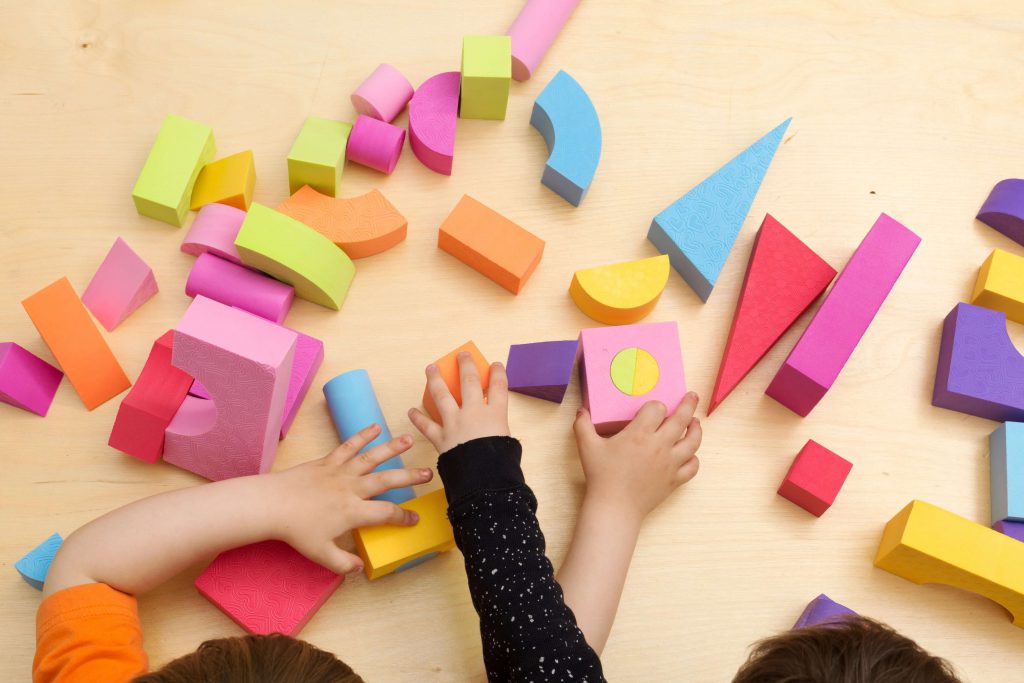
We use cookies on our website to provide the best possible user experience. You can change your settings at any time. For full details about how we use cookies view our Privacy Policy.

The Best Way To Find Unique and Great Gifts For Those you Love and Care About
8 Free Career Exploration Activities For High School Students
WhatToGetMy Instructional Article
We’ve all been there. Thinking about jobs and careers, our potentials, opportunities, and goals. That’s why we understand young people who are trying to find themselves. As teachers, you can be a huge part of your students’ self-identification. You can help them find their calling and guide them through career paths. All you need are free career exploration activities for high school students to get you started.
Career exploration should start in elementary school. Kids need to learn about lots of different options that are available. However, we’ll discuss only activities for high schoolers. This period is often a turning point in life because you need to choose one path that you’ll follow. Once kids reach college, they might change their minds, so it becomes even more important that they know all of the options ahead.
Before we get to the article, let’s just note a few things:
- A lot of students reach high school and still don’t know what to do in life. That’s completely normal because they’re just confused teens. You need to help them realize their potential and define life goals.
- If the students make up their minds before going to college or entering the job market, they’ll have a much easier time facing societal expectations.
- Students’ list of possible career options is often limited by encounters through family and friends and exposure to the media. That’s why schools should introduce children to a wide variety of career options, to expand their horizons.
- Follow changes in the job market because, with the increasing pace of technology, there are a lot more job options available. Kids need to have all the information before making a decision.
What is career exploration?
Table of Contents
Simply put, this is the process of learning about modern job opportunities and how can kids pursue them. Choosing a career path is an essential part of growing up, so naturally, schools have an important role in guiding the children through.
Having quality career exploration lesson plans for high school students can help the students find what jobs are available upon graduation. They also learn about what education and work experience are needed for particular jobs. For example, if someone wants to become a chef, they can do it with or without a college education, but becoming a lawyer requires post-secondary education.
Career exploration activities for high school students can help with turning childhood dreams of “ What will I be when I grow up ” into reality. At least, these activities will put the students one step closer to reality. They give the children exposure to the working world and knowledge about how to successfully enter it. The job market is tough, but everyone needs to face it. The best way to help the students is to, as we already said, prepare them for the challenges ahead and these activities can help you do that.
Where to start?
When you’re making lesson plans for career exploration there are lots of things you need to consider. First, you need to figure out your students’ preexisting knowledge about careers. High schoolers might know about some of the options but they might be still confused about how the job market works and what approaches are efficient. Most people don’t have the chance to fulfill their potential, but you can give your students a head start, so they have better opportunities.
Career preparation lesson plans for high school students should be divided into four main steps: research, evaluation, discussion, and decision. These “phases” can last as long as you think it’s necessary. In the research phase, you’d help your students find all potential career options. Include “traditional” careers such as lawyer, accountant, doctor, construction worker, etc. You should also consider modern career options like a software developer or social media strategist.
After you make a list of popular and common careers (with a few unusual options too) have kids think about what seems interesting for them. Then they should make a list of specific careers and find out everything they can about them. Students usually use the internet for their research but you can also organize introductions with professionals in your area.
The evaluation phase should consist of analyzes of the research results. Students need to get a deeper understanding of their job options. They also need to figure out whether this particular career is a good fit for them. Can they meet the requirements for certain professions and can they even picture themselves working in those fields? What are their academic and social strengths? What subjects interest them the most? After they get vague answers to these questions you can move on to group discussions.
During discussions encourage students to talk with each other about what they’ve learned so far and what interests them the most. Getting insight from peers can be very helpful. Students can learn something new or find out whether they have a mutual career interest. They can also disagree, which can just spark constructive and interesting conversations.
Finally, students should decide what career they should pursue. This doesn’t have to be a definitive decision but it’s surely helpful to have a clue about what directions you should follow.
Volunteering
One good career project for high school students can be engaging in community service groups. Volunteering, helping others, and other generosity activities will help the students feel better and also develop the necessary skills for career improvement. Critical thinking, problem-solving, and communication skills are needed for a lot of jobs, so encourage your students to participate in community groups whenever they have more free time. Volunteering will expand their horizons and boost their college applications!
Career camps
Before we suggest some classroom career development activities for college students , we’d just like to mention career camps. They’re not just for middle schoolers, because high school students benefit a lot from them. They can explore lots of summer classes such as arts, science, fitness, engineering, etc. If you have some very indecisive students, be sure to recommend summer camps that explore career options.
Another summer commitment that can help your students decide future careers are internship programs. Help them choose a field and mentor so they can spend a couple of weeks in the summer working in museums, sports venues, offices, labs, etc.
School activities
You can incorporate lots of career exploration activities for high school students in your regular lessons. We’ll give you some ideas that you can adapt to fit your teaching style and dynamics in the classroom.
Improving study habits

Help students to evaluate personal study habits with the “Study habits checklist” you can find online with just a couple of clicks. The goal of this activity is to have students discuss their strengths and weaknesses, so they can figure out what can be improved.
Before students complete the “Study habits checklist” worksheet, explain each statement on the list. This and lots of other career worksheets for high school students can be found online with ease. After students complete the checklist, discuss what skills can be improved and the ways to do it. At the end of the activity, each student should make a plan on the short-term goals regarding his/her study habits.
Daydreaming

Spark the conversation by asking additional questions like “Does your fantasy job fit your preferred lifestyle?” You can also form groups of students with similar career interests, so they’ll have more topics to talk about.
Employment in my community

Students should research local businesses with yellow pages and mobile phones or by using the internet. Divide the class into groups and give each group one business category to research (health care, transportation, construction, law firms, communication, agriculture, food service, and manufacturing. Make this project last for a couple of days, so students can prepare graphs and presentations.
The purpose of this activity is not only to learn how to collect information but to use the results of each group to discuss employment opportunities in your community. Discuss what category has the most/least business, what are the reasons for disparities, does location affect business, etc.
Is it worth the investment

The questions should be answered with precision. For example, when students compare the costs of community college and well-known universities, they need to include all the fees, possibilities for a scholarship, cost of transportation, and other things besides the tuition.
Ask students to create both a written report and a presentation for the class. Give them enough time to complete this assignment, so you can be sure they’ve done proper research. After they’ve presented the results, mix the groups to discuss the subject.
Job readiness activities
Besides the basic career exploration, you can engage in other activities to boost the students’ preparation for the job market. For example, these fun college readiness activities for high school students are great for improving “soft skills” necessary in today’s world. We’ll give you just two examples. You can check out more in the article Leadership skills for students .
Explain the skills
Learn about the importance of soft skills by creating good and bad examples with your students. Write 20 soft skills on the board and assign one to each kid. They need to research the skill to understand the meaning. Afterward, help them to give an example of how those skills appear in real life. Remember to model both positive and negative examples.
Time-management challenge
Organizing your time efficiently will help you get things done faster. You’ll be more productive with less effort. The key to proper time-management is learning to prioritize tasks. Try this simple challenge in your regular lessons because it won’t take more than 15 minutes.
Make a list of tasks, assigning a point value to each activity. Divide the students into groups and instruct them to collect as many points as possible for 10 minutes. The activities can be various (doing 20 squats=5 points, signing your name=2 points), just make sure there are a lot of them.
After 10 minutes, discuss the results of each group. Go through the students’ decision-making process about what tasks should be done first, how should they do it, etc. This activity will help your students the importance of time management but also, they’ll improve critical thinking and communication skills.
We hope that these free career exploration activities for high school students will inspire you to try them in your classroom. Remember that teachers have an important role in the development of their students, so do your best to guide them. If some students lack motivation, give them encouragement with these motivational activities for students .
01 HOUR 17 MINUTES
ESTIMATED TIME DESIGNING AND UPLOADING THIS ARTICLE
07 HOURS 15 MINUTES
ESTIMATED TIME RESEARCHING AND WRITING THIS ARTICLE
You Might Also Like
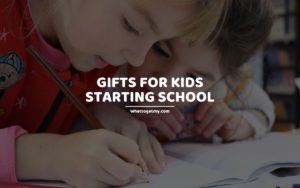
Gifts for Kids Starting School
Naturally, if your child is starting school anytime soon, you want to get a perfect gift for the occasion. Giving gifts for school can be quite beneficial for your child’s development. When you show support with a little surprise gift, your child will be more
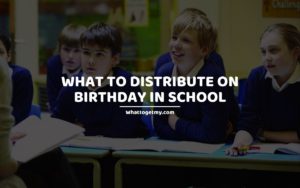
What to Distribute on Birthday in School | 23 Classroom Treats Ideas
What To Distribute On Birthday In School | 23 Classroom Birthday Treats Ideas WhatToGetMy Instructional Article This article offers useful guidance and insight on the best birthday treats to bring to school when next you want to celebrate your child’s birthday in school. It will

15 Cute Things to Do With Your Boyfriend at School
15 Cute Things to Do With Your Boyfriend at School WhatToGetMy Instructional Article Being in school does not have to weaken the bond you share with your boyfriend, instead, it can be made stronger by showing him affections in creative ways. With the following tips,
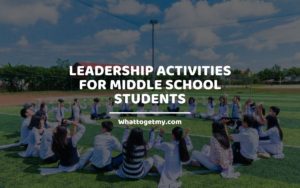
12 Leadership Activities for Middle School Students
12 Leadership Activities for Middle School Students WhatToGetMy Instructional Article Leadership activities for middle school students should be added into the classroom to teach the kids valuable skills such as communication, collaboration, decision-making, problem-solving, critical thinking, and many others. It’s never too early to teach
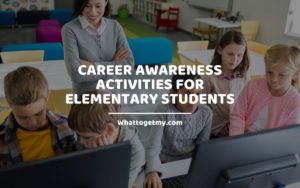
8 Career Awareness Activities for Elementary Students
8 Career Awareness Activities for Elementary Students WhatToGetMy Instructional Article Career awareness activities for elementary students can help you broaden your students’ horizons. Introducing various career opportunities is crucial for students’ growth and development. Elementary students don’t need detailed explanations for each career option. You

23 High School Graduation Gifts for Grandson
Your grandson has put in the work and will be graduating soon. You are so proud of him and want to reward his effort, however, you are unsure of what to get as a gift. You are looking for something that speaks volume, something he
Related Posts

INEXPENSIVE GIFTS FOR NIECES AND NEPHEWS
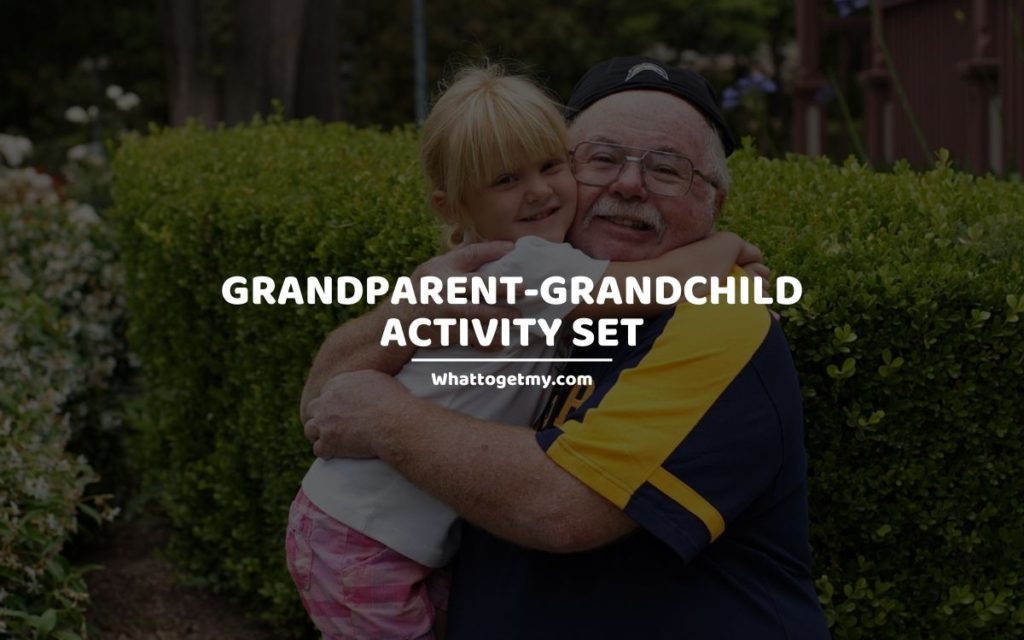
GRANDPARENT-GRANDCHILD ACTIVITY SET
For Teachers
Career research projects for high school students, career research projects – essays and written products, career research projects – digital presentations, about the author, peter brown.
What are your chances of acceptance?
Calculate for all schools, your chance of acceptance.
Your chancing factors
Extracurriculars.
31 Research Opportunities + Internships for High Schoolers in 2024
What’s covered:.
- Research Opportunities and Internships for High School Students
- How to Find Research Opportunities in High School
- How Will Doing Research Impact Your College Chances?
Research drives innovation across every field of study, from natural sciences to health to history. Pursuing curiosity can impact industries, drive policy, and help us to better understand the world around us. Without curiosity and research, our society would surely stagnate.
Contrary to popular belief, however, you don’t have to be a seasoned professional to conduct meaningful research. There are plenty of opportunities for high school students to get a head start on their future careers and contribute to substantial change. Keep reading to learn about 30 great opportunities for students looking for early chances to conduct research!
Research Opportunities and Internships for High School Students
1. memorial sloan kettering human oncology and pathogenesis program.
Application Deadline: February 9
Location: New York, NY
Duration: Eight weeks (June 27 – August 22)
Memorial Sloan Kettering (MSK) is one of the most well-known cancer centers in the world. The Human Oncology and Pathogenesis Program (HOPP) at MSK hosts a Summer Student Program for students to conduct independent research projects while participating in extracurricular activities, training, and other opportunities.
During the eight-week program, participants work with a mentor who will act as a supervisor to help them develop their research skills. Additionally, students have the opportunity to complete an independent research project that aligns with their mentor’s work. All participants will present their projects at a poster session at the end of the summer.
To participate, you must have completed at least 9th grade by June 2024, be at least 14 years old by June 27, have a 3.5 GPA in science subjects, and submit two letters of recommendation. This is a paid opportunity—participants will receive a stipend.
2. Rockefeller University Summer Science Research Program
Application Deadline: January 5
Duration: Seven weeks (June 24 – August 8)
The Rockefeller University Summer Science Research Program allows high school students to conduct real, innovative research over seven weeks through the renowned Rockefeller University, under the guidance of leading scientists.
SSRP scholars will be able to design and conduct their own research project as part of a themed research track, which is modeled after a Rockefeller research topic and/or technique, with the help of scientist mentors from the Rockefeller community. Most of the research will be conducted in the RockEDU Laboratory—a 3,000-square-foot research space specifically dedicated to developing biomedical research skills.
Students must be at least 16 years old by the start of the program to participate.
3. Lumiere Research Scholar Program
Application Deadline : Varies by cohort. Main summer deadlines are March 15, April 15, and May 15
Location: Remote — you can participate in this program from anywhere in the world!
Duration: Options range from 12 weeks to 1 year
Founded by Harvard & Oxford researchers, the Lumiere Research Scholar Program is a rigorous research program tailored for high school students. The program pairs high-school students with PhD mentors to work 1-on-1 on an independent research project . At the end of the 12-week program, you’ll have written an independent research paper! You can choose research topics from subjects such as medicine, computer science, psychology, physics, economics, data science, business, engineering, biology, and international relations.
This program is designed to accommodate your schedule—you can participate in the summer, fall, winter, or spring, and the program is also conducted fully remotely. While you must be currently enrolled in high school and demonstrate high academic achievement (most students have an unweighted GPA of 3.3), no previous knowledge of your field of interest is required. The cost of the program ranges from $2,800 to $8,900, but financial aid is available.
Note that this is a selective program. Last year, over 4000 students applied for 500 spots in the program. You can find more details about the application here .
4. Research Science Institute (RSI)
Application Deadline: December 13
Location: Cambridge, MA
Duration: Five weeks (June 23 – August 3)
The prestigious RSI, which takes place at Massachusetts Institute of Technology (MIT) annually, brings together 100 of the world’s top high school students. The free program blends on-campus coursework with off-campus science and technology research.
Participants complete individual research projects while receiving mentorship from experienced scientists and researchers, and present their findings through oral and written reports in a conference-style setting at the end of the program.
5. NYU Tandon – Applied Research Innovations in Science and Engineering (ARISE)
Application Deadline: March 6
Duration: 10 weeks (June 3 – August 9)
Open to New York City high school students who will complete 10th or 11th grade in June 2024, the ARISE program provides access to college-level workshops and lab research across fields like bio, molecular, and chemical engineering, robotics, computer science, and AI.
Over the course of 10 weeks—four virtual and six in person—participants will receive guidance from graduate or postdoctoral students at the NYU Tandon School of Engineering.
6. Simons Summer Research Program
Application Deadline: February 7
Location: Stony Brook, NY
Duration: Five weeks (July 1 – August 9)
During Stony Brook ’s Simons Summer Research Program, high school students conduct hands-on research in areas like science, math, and engineering while working with faculty mentors. Simons Fellows have the opportunity to join real research teams and learn about laboratory equipment and techniques. They also attend weekly faculty research talks and participate in special workshops, tours, and events.
At the closing poster symposium, students will receive a stipend for their participation. To apply, you must be at least 16 years old by the start of the program and currently be in your junior year.
7. SPARK Summer Mentorship Program
Application Deadline: N/A
Location: Greater Seattle area
Duration: 8-10 weeks
SPARK is a summer mentorship program that pairs high-achieving and highly motivated high schoolers with industry experts, university professors, and mentors to conduct research on customers and financial markets. The program is only open to U.S. citizens and permanent residents.
8. MDI Biological Laboratory – Biomedical Bootcamp 2024
Application Deadline: March 18
Location: Bar Harbor, ME
Duration: One week (July 15 – 19)
In this bootcamp, students will receive a hands-on introduction to biomedical research at MDI Biological Laboratory. Participants will learn essential scientific skills such as experimental design and hypothesis testing, cutting-edge laboratory techniques, data analysis, bioinformatics, and scientific communication.
During the program, scientists and bioentrepreneurs at the lab will help participants explore scientific ethics at large, as well as career paths in biomedicine, research, and entrepreneurship in Maine and beyond.
Participants must be at least 16 years old by the start of the program and must be entering their junior or senior year in September 2024, or graduating in June 2024.
9. Boston University – Research in Science & Engineering (RISE) Internship
Application Deadline: February 14
Location: Boston, MA
Duration: Six weeks (June 30 – August 9)
RISE is a six-week program for rising seniors with an interest in pursuing a major and/or career in STEM. There are a multitude of tracks available, in areas such as astronomy, biology, chemistry, computer science, environmental science, and neuroscience. In each track, students conduct research under the mentorship of Boston University faculty, postdoctoral fellows, or graduate students. They will also attend weekly workshops with their peers.
10. The Wistar Institute – High School Program in Biomedical Research
Application Deadline: March 31
Location: Philadelphia, PA
Duration: Four weeks (July 15 – August 8)
A leading biomedical research organization, The Wistar Institute is an ideal setting for students to learn research skills. Participants will complete their own research project while being trained in a principal investigator’s laboratory. They’ll also attend seminars, receive mentorship, and deliver a final presentation about their work.
Students are expected to participate Monday through Thursday from 9:00 am to 4:00 pm. Absences of more than two consecutive days cannot be accommodated. Students will receive a stipend of $1,000 upon completion of the program, to compensate for commuting costs or other personal expenses accrued during the program.
11. California Academy of Sciences – Careers in Science (CiS) Intern Program
Application Deadline: April 1, 2024
Location: San Francisco, CA
Duration: Multi-year, year-round participation (after school and on weekends)
This long term program gives San Francisco students from communities that are underrepresented in STEM the opportunity to learn about the world of science and sustainability. Students receive mentorship, develop career skills, and more—all while getting paid for their work. Students also attend workshops and conferences throughout the course of the program.
12. NASA OSTEM Internship
Application Deadline: February 2
Location: Varies
Duration: Varies
NASA offers a variety of internships for high school students across its numerous campuses. Interns gain real-world work experience by working side by side with research scientists and engineers, which will strengthen their resume and help prepare them for their eventual careers. All participants must be at least 16 years old and enrolled in high school full time.
13. New-York Historical Society Student Historian Internship Program
Application Deadline: April 7
Duration: July 9 – August 15
Not all research is conducted in STEM subjects! Developed for students interested in history, the New-York Historical Society’s Student Historian Program gives participants the opportunity to conduct research on a history topic—2024’s theme is Our Composite Nation: Frederick Douglass’ America . During the program, participants will work with historian mentors, visit history archives around New York City, lead gallery tours, and develop their historical thinking, communication, and digital media skills.
Applicants must be entering grades 10, 11, or 12, and live in the New York City metro area. This opportunity is unpaid for most participants, but some interns with demonstrated financial need can potentially receive a stipend.
14. Adler Planetarium Summer High School Internship
Application Deadline: March 1
Location: Chicago, IL
Duration: Six weeks (July 8 – August 14)
During this summer internship program, students will learn about the Adler Planetarium and the career opportunities within it and planetariums and museums in general, in areas ranging from Visitor Experience and Learning to Research. Students will also get the chance to see how research gets translated into a museum experience.
15. Zuckerman Institute Brain Research Apprenticeships in New York at Columbia University (BRAINYAC)
Application Deadline: TBA for 2025 program
Duration: Eight weeks
BRAINYAC participants receive the rare opportunity to work on research in a lab at Columbia University , one of the most prestigious institutions in the world, as high school students, which results in a stronger, more comprehensive understanding of how scientific discovery happens. They connect with real scientists, acquire essential research and laboratory skills, and learn about advances in neuroscience research.
In order to apply, you must be in 10th or 11th grade and must be nominated by one of the program’s partners—S-PREP, Lang Youth Medical, Double Discovery Center, Columbia Secondary School, or BioBus.
16. Brookfield Zoo King Conservation Science Scholars Program
Application Deadline: Rolling admission
Location: Brookfield, IL
Duration: N/A
Interactive workshops, fun activities, research, and community-based projects are at the core of this exciting internship. It’s an excellent opportunity for students who love animals and also want to gain research skills in the domains of zoology, environmental science, and conservation.
As a King Scholar, you’ll learn about different topics through Foundation Courses, such as Diversity Awareness and Introduction to Conservation, all while networking with others and preparing for college and an eventual career in a related field. After one year of participation, you’ll be invited to apply for scholarships and paid positions at the zoo.
17. The Science Research Mentoring Program (SRMP) at the American Museum of Natural History
Application Deadline: March 8
Duration: One year (August to June)
The American Museum of Natural History is one of the most iconic and fascinating places in New York City. Its Science Research Mentoring Program is an amazing opportunity for NYC high school students to conduct a yearlong research project with Museum scientists.
Students in SRMP get paid to learn how scientific research is conducted. Depending on their topic of study, students can learn a variety of different research skills, like working with DNA in the lab, analyzing data from space-based telescopes, reading scientific articles, and learning to code and analyze data in Python, R, and other programming languages.
18. Anson L. Clark Scholars Program
Application Deadline: February 15
Location: Lubbock, TX
Duration: Seven weeks (June 16 – August 1)
Through the Anson L. Clark Scholar Program, an intensive seven-week summer research program for twelve highly qualified high school juniors and seniors, students will gain hands-on experience with practical research alongside experienced and knowledgeable faculty at Texas Tech University .
Students can choose to participate in research in one field from a broad variety of options, including cell and molecular biology, chemistry, computer science, economics, engineering, history, and more!
To apply, students must complete an online application that includes short essays, high school transcripts, test scores (at least a PSAT if no others are available), three recommendations (at least two from teachers), and a list of the student’s top five activities.
19. UChicago Data Science Institute Summer Lab Program
Application Deadline: January 16
Duration: Eight weeks (June 10 – August 2)
The Data Science Institute Summer Lab Program is an immersive eight-week paid summer research program at the University of Chicago . During the program, high school and undergraduate students are paired with a data science mentor, whose expertise could be in computer science, data science, social science, climate and energy policy, public policy, materials science, biomedical research, or another related field.
Participants will hone their research methodology, research practice, and teamwork skills. No prior research experience is required to apply. All participants will receive access to applied data science research, which they will use to craft a research project. The project findings will be presented in a video that will be shown at an end-of-summer symposium.
20. UT Austin College of Natural Sciences High School Research Academy
Application Deadline: March 24
Location: Austin, TX
Duration: Five weeks (June 10 – July 17)
Through UT Austin ’s HSRA, high school students participate in interdisciplinary research projects being conducted by active College of Natural Sciences laboratories in fields such as biochemistry, biology, environmental science, genetics, neuroscience, genome engineering, data analytics, ecology, and more.
There is a scholarship fund for underserved groups, so some stipends and free tuition scholarships may be available to students with demonstrated financial need.
21. Max Planck Florida Institute for Neuroscience – Summer Research Internship
Location: Jupiter, FL
Duration: Six weeks (June 17 – July 26)
The MPFI Summer Research Internship offers rising juniors and seniors an immersive laboratory experience where they can learn from seasoned researchers. The program is designed specifically for students with an interest in brain structure, function and development, and the advanced imaging techniques and technologies used in neuroscience.
Program participants will participate in research projects alongside MPFI scientists, prepare a written scientific abstract based on their research project, and deliver a short presentation at the end of the summer. Research tracks include neuroscience, scientific computer programming, and mechanical engineering as it relates to neuroscience.
Applicants must be entering their junior or senior years in a Palm Beach or Martin County high school, be residents of one of those two counties, and be at least 16 by the beginning of the internship. Interns will be paid at a rate of $12.50 per hour.
22. Lincoln Park Zoo Malott Family Zoo Intern Program
Application Deadline: March 11
Duration: Seven weeks (June 24 – August 9)
During this paid seven-week program, high school students learn how to educate others about animal and conservation sciences while crafting digital messages to engage audiences. The program culminates in a final project. Throughout the internship, students meet with researchers and the Animal Care staff to explore careers in the animal science and conservation fields.
Applicants must be Chicago residents between the ages of 15-18, and must be entering grades 10-12 or their freshman year of college by the start of the internship.
23. The Scripps Research High School Internship Program
Application Deadline: April 19
Location: La Jolla, CA
Duration: Seven weeks
The Scripps Research Institute’s La Jolla, California headquarters is proud to offer a seven-week hands-on research experience for San Diego County high schoolers. The program is specially designed to expose students to careers in the biological and chemical sciences, to provide hands-on laboratory experience, and to motivate and prepare students for continuing education in STEM.
Because Scripps is committed to increasing the number of students from underrepresented communities in STEM college programs, a special emphasis is placed on identifying and recruiting students who are from groups that are historically underrepresented in the sciences. All students will receive a $4,760 stipend.
24. QuarkNet Summer Research Program
Application Deadline: January 31
Location: DuPage County, IL
Duration: Seven weeks (June 17 – August 2)
High school sophomores, juniors, and seniors with a strong interest in STEM have a unique opportunity to work with scientists on research projects during this paid seven-week program at the prestigious Fermilab, located just outside of Chicago near Batavia, IL.
Interns are encouraged to indicate areas in which they have a particular interest, although research projects vary yearly based on the work ongoing at the lab. Broadly speaking, Fermilab’s focus is on particle physics.
Required application materials include a questionnaire, a letter of recommendation, and an essay. To apply, students must have U.S. citizenship or permanent resident status and must provide evidence of identity and eligibility to work in the United States. Participants will be paid at a rate of $17.20 per hour.
25. RISE Environmentor Internship
Location: Far Rockaway, NY
Duration: Six weeks (July 1 – August 15)
The Environmentor Internship offers a great opportunity for 9th through 11th graders who live or attend school near the Rockaway Peninsula to gain firsthand research experience. Participants are mentored by scientists from local universities and research institutions as they work on projects focused on the Rockaway shoreline. Past research topics have included sea turtle strandings, octopus behavior, mussel denitrification, and dolphin fin morphology.
Students will also take part in water safety courses, receive CPR training, and explore on-water activities like kayaking and surfing. Students receive up to a $1,200 stipend, as well as community service hours for their participation in the program.
26. Stanford Institutes of Medicine Summer Research Program (SIMR)
Application Deadline: February 24
Location: Stanford, CA
Duration: Eight weeks (June 10 – August 1)
Students in this summer program are given the chance to perform research on a medically oriented project and work side by side with Stanford University students, researchers, and faculty. Students can choose from eight areas of research, including topics like immunology, cancer biology, and bioinformatics, which are all designed to increase their interest in the biological sciences and provide a deeper understanding of how scientific research is conducted.
The program is open to current high school juniors and seniors. Students will receive a minimum $500 stipend for their participation in the program.
27. Secondary Student Training Program
Application Deadline: February 16
Location: Iowa City, IA
Duration: June 19 – July 26
High schoolers in grades 10 and 11 can take part in an immersive research experience, which will allow them to explore their interests, enhance their academic skills, and build relationships with their peers during this research-focused summer program.
Participants can choose from a multitude of research areas, ranging from biology to industrial and systems engineering to religious studies. The program culminates with students creating and presenting a poster of their findings. All participants will live on the University of Iowa ‘s campus for the duration of the program, and have access to all of the university’s libraries, study areas, and computer facilities.
Although this program is quite expensive, with a fee of $7,500, financial aid is available to cover up to 95% of the cost.
28. Young Scholars Summer STEMM Research Program
Location: Urbana, IL
Duration: Six weeks (June 20 – August 2)
This program, offered by the prestigious Grainger College of Engineering at University of Illinois at Urbana-Champaign (UIUC) , allows students to gain hands-on research experience in fields such as cancer immunology, AI, physics, quantum mechanics, and electrical engineering. They will also build valuable general life skills by participating in seminars on topics ranging from the college admission process to how to communicate scientifically.
The program is open to rising 10th through 12th graders from Illinois, Indiana, Kentucky, Michigan, Missouri, Iowa, and Wisconsin.
29. Summer Science Program (SSP)
Duration: Varies depending on location and field of focus
Students in the SSP get the chance to work in small teams on a real research project and gain firsthand experience taking and analyzing data. Research opportunities are offered in three fields—astrophysics, biochemistry, and genomics—and are held at a variety of institutions, including University of North Carolina at Chapel Hill , Georgetown University , Purdue University , and New Mexico State University .
The program is open to high school juniors, although a small number of exceptional sophomores have attended the program. You must be between 15-19 to participate, and have completed prerequisite coursework, which varies by field. Financial aid is available for this program.
30. The Jackson Laboratory Summer Student Program
Application Deadline: January 29
Location: Bar Harbor, ME, and Farmington, CT
Duration: 10 weeks (June 1 – August 10)
Students immerse themselves in genetics and genomics research while learning about laboratory discovery and scientific communication, as well as building professional skills. Over the course of the 10-week program, students work with a mentor to develop a research project, implement their plan, analyze their data, and report their results.
This prestigious program is competitive. Just 40 students are selected to participate annually. Participants receive a $6,500 stipend and have their room, board, and travel expenses covered.
31. Fred Hutch Summer High School Internship Program
Application Deadline: March 31
Location: Seattle, WA
Duration: Eight weeks (June 24 – August 16)
This full-time, paid internship opportunity offers students a chance to immerse themselves in activities at the Fred Hutch Cancer Center, one of the top cancer research centers in the world. The program begins with two weeks of laboratory training and is followed by six weeks of mentored activities, research seminars, workshops focused on college and careers, and social activities.
The program is open to high schoolers entering their senior year with a strong interest in science and high academic achievement, and is specifically aimed at students from backgrounds underrepresented in biomedical science. Interns receive a stipend upon successful completion of the program.
How to Find Research Opportunities in High School
Define your area of interest .
Before you start looking for opportunities, narrow your area of interest a bit, whether it’s cancer, engineering, computer science, neuroscience, or something else entirely. Also bear in mind that while there may be more STEM opportunities available for high school students, research isn’t limited to these fields—research is also a key component of the social sciences, humanities, and other non-STEM fields.
While you should be somewhat specific about what you’re hoping to research, don’t narrow your scope so much that it’s impossible to find a valuable opportunity, especially since opportunities for high schoolers in general are more limited than they are for students who have completed at least some college.
Talk to People in Your Immediate Circle
Teachers, neighbors, your family, parents of friends, friends of your parents—any of these people could know about a research opportunity for you, or at least know someone else who does. Throughout your life, you will find that networking is often the key to finding career opportunities.
Leveraging your network can help you uncover unique opportunities crowdsourced by the people who know you best—the best opportunities aren’t always hosted by large universities or programs.
Reach Out to Local Institutions and Laboratories
In addition to networking with your immediate circle, reach out to local facilities, such as labs, hospitals, clinics, and universities that conduct research. Even if opportunities aren’t publicized, these institutions and laboratories may be willing to make room for you. Remember: when pitching your idea, don’t make it too niche—this will make it more difficult to find a fit and market your skills to labs.
Cast a Wide Net
Research opportunities are hard to secure, especially when you’re a young student, so you need to be persistent. You may need to write a hundred emails, but if you put in the effort and cast a wide net, you’ll vastly improve your chances of landing a great opportunity.
Try not to be too picky, either. Of course, you shouldn’t just accept any offer , especially if it doesn’t appeal to you. But even if the opportunity doesn’t align perfectly with your skills and interests, it can still be a great chance to gain experience and make you a better candidate for future experiences.
How Will Doing Research Impact Your College Chances?
How much participating in research enhances your college admissions profile depends on many factors, including the scope of the project, the prestige of the program or institution, your individual role and performance, the institution’s connections to or sponsorships by certain colleges, and even how much weight a college places on extracurricular activities in general.
Generally speaking, there are four tiers of extracurricular activities that colleges think about when reviewing applicants’ activities. Selective, competitive, and prestigious activities are often found in the top tiers, Tier 1 and Tier 2. Tier 1 includes things such as being a highly recruited basketball player or an award-winning national science fair competitor.
Tier 2 is similar, but is usually reserved for activities that are less exceptional than those in Tier 1. Tiers 3 and 4 are reserved for more common extracurricular achievements, such as holding school leadership positions or being a member of a debate team.
Research usually falls into Tier 2, and some particularly prestigious opportunities could even be Tier 1. That’s because it’s somewhat unusual for high school students to conduct research in professional and collegiate settings, so it’s more likely to impress colleges than other kinds of extracurricular activities.
Do you want to find out the impact research and other extracurricular activities might have on your chances of admission to top colleges and universities? Try using CollegeVine’s free chancing calculator !
Our tool evaluates your admissions profile, by accounting for factors like your grades,standardized test scores, and extracurriculars (including research!) to show you how you stack up against other applicants and how likely you are to get into hundreds of different colleges and universities. You’ll also receive tips on how to improve your profile and your odds—all for free.
Disclaimer: This post includes content sponsored by Lumiere Education.
Related CollegeVine Blog Posts

Cornell Chronicle
- Architecture & Design
- Arts & Humanities
- Business, Economics & Entrepreneurship
- Computing & Information Sciences
- Energy, Environment & Sustainability
- Food & Agriculture
- Global Reach
- Health, Nutrition & Medicine
- Law, Government & Public Policy
- Life Sciences & Veterinary Medicine
- Physical Sciences & Engineering
- Social & Behavioral Sciences
- Coronavirus
- News & Events
- Public Engagement
- New York City
- Photos of the Week
- Big Red Sports
- Freedom of Expression
- Student Life
- University Statements
- Around Cornell
- All Stories
- In the News
- Expert Quotes
- Cornellians
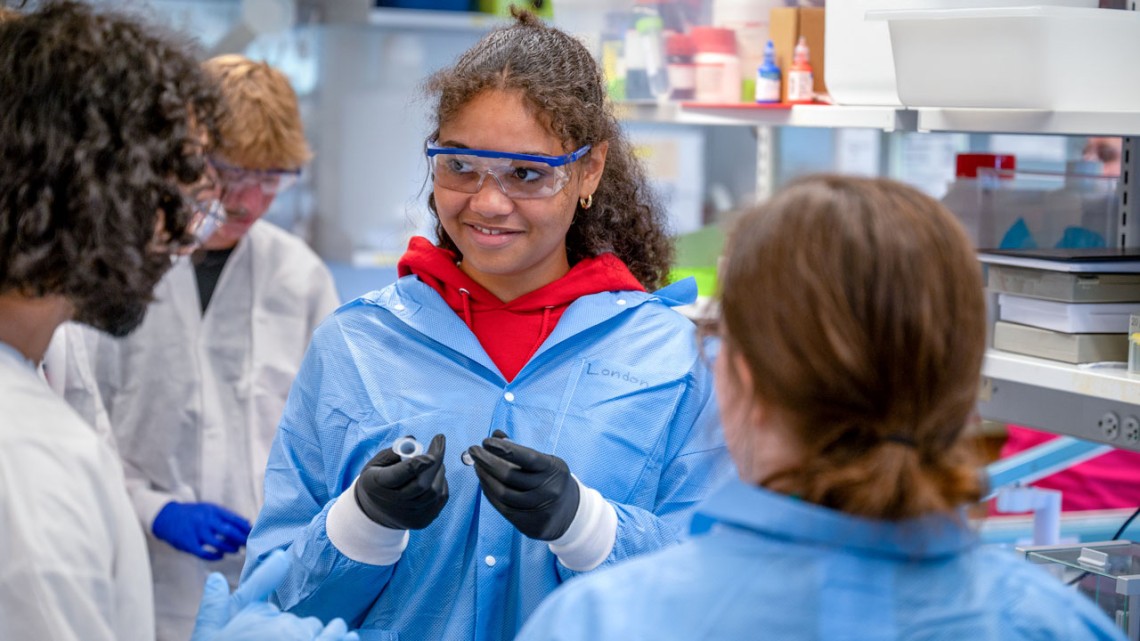
Jada Murphy, a rising high school sophomore, from Haverstraw, New York, visited Cornell's Weill Hall on June 27 to study biomedical engineering research tools and techniques at the 2024 4-H Career Explorations Conference.
Teens explore potential career options at annual 4-H event
By courtney livecchi bronfenbrenner center for translational research.
Through conversations and hands-on learning opportunities, nearly 250 youth from across New York state learned about different career paths at the annual 4-H Career Explorations Conference, hosted by Cornell and New York State 4-H on campus June 26-28.
Students stayed overnight in dorms; spent evenings bowling, swimming or playing lawn games at Helen Newman Hall; ate meals in dining halls; and shopped at the Cornell Store. For many, it was their first taste of college life.

“I’m here because I want to explore my interests in different careers like biomedical engineering, since I plan on pursuing a career in the future in engineering and STEM,” said Jada Murphy, a rising sophomore from Haverstraw, New York. “This event has helped me get a feel of what my surroundings and learning environment might be like.”
Cornell faculty and graduate students led programs in two tracks. In the University U track, for those in grade 8 and older, students rotated through workshops in fields such as mental health, climate-smart farming, fitness and nutrition, archaeology and nanotechnology. In the Focus for Teens track, students entering grades 10 through 12 selected one of 12 programs in fields such as equine and veterinary science, astronomy, hospitality, media design, women in science, engineering, psychology research or food science.
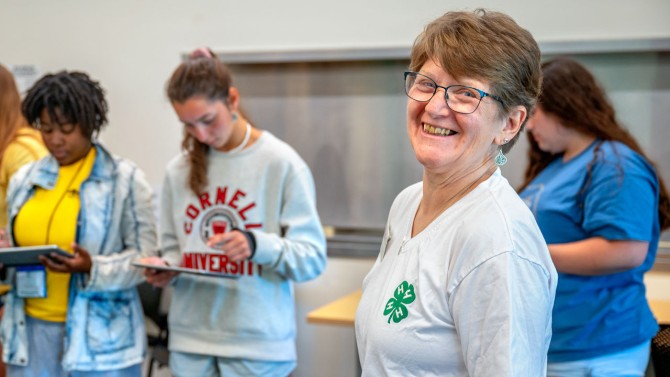
Susan Hoskins, senior extension associate and director of the Institute for Resource Information Sciences (IRIS) in the College of Agriculture and Life Sciences showed 4-H youth how researchers monitor the movements of domestic and wild animals during the 4-H Career Explorations Conference held on campus June 26-28.
“We’re so grateful for the faculty, staff and students who invited youth into their spaces and work, sharing the joy of discovery and championing youth leadership,” said Alexa Maille, interim director of NYS 4-H. “Youth from across New York state and beyond had the opportunity to find and fuel sparks, try out possible futures and explore how they can thrive in careers and life.”
In Emerson Hall, 15 young people participated in “Animal Trackers: A Tech Expedition,” where they learned how researchers monitor the movements of domestic and wild animals, led by Susan Hoskins, senior extension associate and director of the Institute for Resource Information Sciences (IRIS) in the College of Agriculture and Life Sciences.
“We explored the many ways animal movement is seen and recorded, highlighting geospatial connections,” Hoskins said. “Watching with our own eyes, using GPS location technology, creating digital maps and envisioning a positive digital future were all on the agenda.”
IRIS integrates environmental information science and technologies to support education and research. Its work includes outreach and extension activities like the 4-H Geospatial Sciences program, in which youth learn about GPS, GIS and remote sensing technology through geocaching, or using GPS receivers to look for hidden treasure boxes in the outdoors.
For the Career Explorations workshop, Hoskins said she used geo art – or the practice of hiking a path that creates an image outline when mapped – soil painting and collage to help participants spark creative ideas. They also had the chance to spot Big Red, Cornell’s beloved female red-tailed hawk, outside the lecture hall.
“The whole 4-H Geospatial team enjoyed preparing and sharing with youth, focus assistants, and chaperones,” Hoskins said. “I especially appreciated working with Alexa and other presenters in the months leading up to 2024 Career Explorations. Learning the basics of Positive Youth Development, sharing activity ideas and strategies, and hearing the enthusiasm and excitement in the voices of presenters – both experienced and new to teaching – helped us all craft a great experience for everyone.”
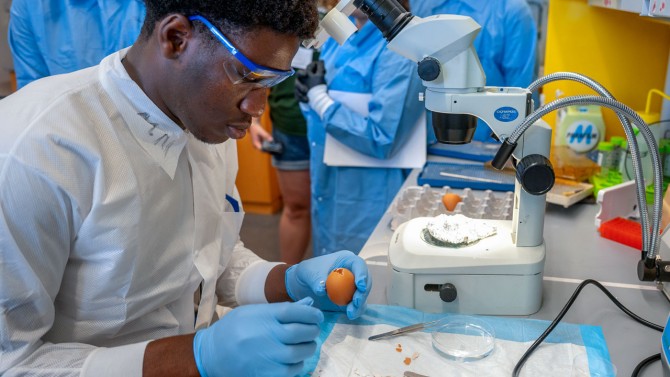
As part a biomedical engineering track at the 2024 4-H Career Expectations Conference, Nasir Mohammed, a rising high school junior from Troy, New York, examines embryonic development in a chicken egg on June 27 in Cornell’s Weill Hall.
Other student groups learned about food science and created their own color-changing summer drinks; designed sustainable, peaceful landscapes using analog and digital tools; and explored the cosmos by following the journey of a single atom beginning with the Big Bang, through the birth of the solar system and the origins of life on earth.
“I’m originally from Nigeria and I’ve always been interested in science and engineering and I’m really excited to be here,” said Nasir Mohammed, a rising junior from Troy, New York. “Bioengineering is where life and engineering meet and I think I would love to be in a career like this because this helps humanity.”
During the closing ceremony, youth representatives from each program reflected back on their experience, detailing what was the most impactful part of each program. Many said they are enthusiastic to return to the event again next year.
Courtney Livecchi is the NYS 4-H program support specialist in the Bronfenbrenner Center for Translational Research.
Media Contact
Kaitlyn serrao.
Get Cornell news delivered right to your inbox.
You might also like

Gallery Heading

Climate Change Research Initiative

Program Overview
NASA Earth Science Division’s Early Career Research (ECR) Program Climate Change Research Initiative (CCRI) is an interdisciplinary, collaborative, year-long STEM engagement, and experiential learning opportunity for educators and graduate students to work directly with NASA scientists and lead research teams in a NASA research project hosted at either NASA's Goddard Institute for Space Studies, CUNY City College of Technology in New York City, NY, or NASA's Goddard Space Flight Center in Greenbelt, MD. The summer component of each CCRI project also includes undergraduate and high school interns.
During the fall and spring terms of CCRI, the research team will consist of NASA Principal Investigators who lead in-service high school STEM educators and graduate student research assistants to become immersed in a NASA science research area related to climate change. During the summer session, the primary research team will add an undergraduate intern and high school intern to the CCRI research team. The entire team will work collaboratively on a full-time basis to complete the research project, deliver presentations, create a scientific poster and a publishable research paper that will be presented at the CCRI HQ Day at NASA Headquarters in Washington, DC , and other science conferences and symposiums.
CCRI Fall 2024-Summer 2025 Research Projects

Research opportunities for educators, grad student assistants, and interns during Fall 2024 through Summer 2025 include the following projects:
- Deciphering Changing Probabilities of Extreme Climate Events in Climate Models and Measurements (GISS)
- Climate Change in the Hudson Estuary — Past, Present, and Future (GISS/LDEO)
- Monitoring and Studying Lakes from Space in a Changing Climate (GISS/CUNY)
- Characterizing the Urban Land Surface Temperature via an Innovative, Multi-Platformed Suite of Satellite and Ground-Based Remote Sensing Technologies (GISS/CUNY)
- SnowEx and Understanding the Role of Snow and Measurements (GSFC)
Work Performance Periods
Fall: October 15, 2024 – December 20, 2024
Spring: January 27, 2025 – April 25, 2025
Summer: June 16, 2025 – August 8, 2025
Applicant Requirements
CCRI applicants must be US citizens. Housing, relocation and travel expenses are not provided. Teachers, graduate students and interns whose locality is regional to the NASA Goddard Institute for Space Studies in New York City, NY, or NASA's Goddard Space Flight Center in Greenbelt, MD, are encouraged to apply. Applications are considered upon receipt.
The deadline for educators and graduate students to apply for the CCRI 2024-2025 year-long program is September 2024 . The final application deadline for Summer 2025 CCRI high school and undergraduate internship opportunities is February 28, 2025 at NASA’s Internship Programs website .
Application Requirements
Teachers applying for CCRI should submit a cover letter, resume, and unofficial transcripts. Teachers are also encouraged but not required to submit any additional portfolio exemplars. The cover letter should also include:
- A description of how participating in CCRI will benefit your students, school and community.
- Description of IT and programing skills indicating a self-proficiency ranking.
- Rank in order of preference the projects that the teacher would like to apply to and be considered for.
The selected candidate will be requested to provide a letter of support from their school administration for participation and collaboration in the program.
Performance Requirements
- Educators participating in this opportunity become associate researchers, CCRI education ambassadors and STEM education experts who integrate NASA education resources, platforms, data and content into their classrooms while improving STEM education within their communities.
- Participating high school STEM educators contribute to the research project, assist in the development of a research question and assist in guiding the research team to complete all program deliverables.
- Educators also develop a portfolio of lesson plans that utilizes NASA education resources aligning NASA Science and STEM curricula to the Next Generation Science Standards. The teachers will then incorporate the STEM curriculum into their classrooms and also provide community STEM engagement events related to their NASA research study. The fall and spring term will not conflict with the educators' primary schedule, roles or responsibilities at their school sites.
Graduate Students
Graduate Student Research Assistants applying for CCRI should submit a cover letter, resume and unofficial transcripts. The cover letter should also include:
- A description of how participating in CCRI aligns with your current degree program and anticipated graduation date.
- Description of IT and program skills indicating a self-proficiency ranking.
- Rank in order of preference the projects that the graduate student would like to apply to and be considered for.
The selected candidate will be requested to provide a letter of support from their graduate school advisor for participation and collaboration in the program.
- Graduate Research Assistants contribute to the research project, assist in the development of a research question and assist in guiding the research team to complete all program deliverables.
- For graduate student research assistants, this opportunity will not conflict with class schedules during the fall and spring. It is considered to be a part-time position that supports the graduate student's major area of study.
- All students are required to submit a final report upon completion of the program.
Undergraduates Students/ High School Students
Student interns must complete the entire application within NASA's Internship STEM Gateway .
- Undergraduate and high school students work on real NASA projects with the guidance of a NASA CCRI mentor, a research scientist, and gain practical work experience.
The Fall cohort application deadline is September 8, 2024.
Click here to apply.

Featured Posts

Are Johns Hopkins' Engineering Innovation Precollege Programs Worth It?

10 Math Programs for Middle School Students

10 Summer Hospital Volunteer Programs for High School Students

11 AI Internships for High School Students
- 11 min read
As advances in technology leap ahead, the relevance of AI is on the rise too. If you’re a high school student who wants to gain hands-on experience in the field of AI, you should consider applying for an internship!
AI is the foundation for a number of technologies, including machine learning algorithms, robotics, natural language processing, computer vision, biotechnology, and more. Internships in the field of AI, offered by top tech companies and institutions like Microsoft, MIT, Meta, Stanford, and more will allow you to apply your passion for technology, coding, and problem-solving in real-world situations, under the guidance of experts.
Participating in AI internships is also a great way to hone your tech skills and boost your profile for college applications, making your experience stand out. Internship experiences will help deepen your understanding of concepts in AI and prepare you for future academic and career endeavors in STEM.
Here are 11 of the best AI internships for high school students that you can consider!
1. National Institute of Standards and Technology (NIST) Internships
Location: Varies from lab to lab.
Cost/Stipend: No cost; Unpaid. Application Deadline: Applications typically close in February.
Dates: June 17, 2024 - August 9, 2024.
Eligibility: Applicants must:
Be U.S. citizens.
Be juniors or seniors in high school during the application period.
Have a minimum GPA of 3.0.
The Summer High School Intern Program by NIST is a program for students who have finished their junior or senior year of high school (by the start of the program) and demonstrate an interest in scientific research. In this program, you can participate in cutting-edge research at NIST and work closely with NIST staff scientists and engineers on a specific research topic. You can choose to intern at one of these 6 NIST laboratories :
Communications Technology Lab
Engineering Lab
Information Technology Lab
Material Measurement Lab
NIST Center for Neutron Research
Physical Measurement Lab
If you are interested in AI and computer science you can choose the Information Technology Lab where you will partake in tasks such as computer network modeling, biometrics for computer access and security, cryptography, computer forensics, software quality testing, digital data retrieval and preservation, bioinformatics, data mining, machine learning, information visualization, and image analysis.
2. The Stanford Center for Artificial Intelligence in Medicine and Imaging (AIMI) - Summer Research Internship
Location: Virtual.
Cost/Stipend: No cost; Unpaid.
Application Deadline: Applications typically close in March.
Dates: June 17 - 28, 2024.
Eligibility: Summer Research interns must be high school students over the age of 14 by the start of the program. Student leads must be California residents. Student interns must reside in the U.S. Student leads must also be students over the age of 14 and may also be undergraduate students with a computer science background.
This Stanford Center for Artificial Intelligence in Medicine and Imaging offers a two-week summer internship for high school students interested in technology and AI. This is a great opportunity to get a foundation in AI while also looking at the impact it can have on an industry as important as healthcare.
As an intern, you will attend a series of lectures on AI in healthcare and while building those skills you will simultaneously participate in research projects. Due to the intensive and immersive nature of the internship, you will also be under the expert guidance of Stanford AI research engineers. You will also get to attend Virtual Career Lunch and Learns with guest speakers who are from various parts of academia, nonprofit, and government helping you understand various possible careers and create strong networks!
3. MIT Lincoln Laboratory High School Internship Program
Location: Lexington, MA.
Cost/Stipend: No cost; Stipend is provided.
Dates: July 10, 2024 - August 15, 2024
Have U.S. citizenship.
Be local high school rising seniors.
Be sixteen (16) years of age before the start date.
The Summer High School Internship Program at MIT Lincoln Laboratory provides a unique opportunity for rising seniors who live and attend high school in the New England area to experience and explore STEM careers before committing to an area of study in college.
During the summer, you will be paired with Laboratory staff mentors to complete projects, solve problems, and learn and apply technical and interpersonal skills in a hands-on, professional environment. If you’re interested in AI, you can choose to work on projects related to artificial intelligence and technology systems that will help you explore technical expertise in artificial intelligence, machine learning, and signal processing to discover, create, and deliver some of the nation’s most impactful technologies to national security. You could also opt to work on developing technology for advanced satellite systems that are used to monitor the activity of objects in space and to perform remote sensing of Earth.
4. Ladder Internships (AI Track)
Location: Remote! You can work from anywhere in the world.
Cost : Starts at $1990. Financial aid is available.
Application Deadline: Deadlines vary depending on the cohort. The upcoming fall cohort deadline is September 8, 2024.
Dates: 8-week programs with multiple cohorts throughout the year, including spring, summer, fall, and winter. The upcoming fall cohort begins on September 23, 2024.
Eligibility: Students who can work for 10-20 hours/week, for 8-12 weeks. Open to high school students, undergraduates, and gap year students!
Ladder Internships, a fairly selective program founded by Harvard alumni, pairs high school students with startups and nonprofits around the world for virtual internships. You can choose the field you wish to work in, from a wide range of industries, including technology, machine learning, AI, computer science, finance, environmental science, sustainability, business, marketing, healthcare, medicine, media, journalism, and more.
As an intern, you will work on meaningful projects that contribute to the startup or nonprofit’s larger mission, and present your work at the end of the program. This internship program includes one-on-one training in communication and time management, among other skills, and group training sessions with fellow interns. You will be paired with a manager at the startup and with a Ladder coach, who serves as a second mentor. The internship opportunities in this program span the globe, with a concentration in the U.S., Asia, Europe, and the UK. You can explore all the options here on their application form .
5. Army Educational Outreach Program (AEOP) High School Internships
Location: There are AEOP locations in almost every state. Students may select their preferred location. The program is intended for commuters and transportation, meals, and housing are not provided.
Cost/Stipend: No cost; Stipend is provided but varies from location to location.
Application Deadline: Applications are accepted on a rolling basis. Check AEOP’s Summer 2024 opportunities here for the application dates.
Dates: This is a summer internship program, and specific dates vary from location to location.
Eligibility: Those applying must be current high school students who are U.S. citizens or permanent legal residents. Additional eligibility requirements vary by location. Check details here .
This program is a chance to work one-on-one with a university researcher or Department of Defense (DoD) scientist mentor on research projects. As an intern, you will be exposed to high-tech equipment and cutting-edge techniques in state-of-the-art laboratory facilities, and have access to professional scientists and engineers. Additionally, you will learn from other STEM practitioners during the internship. The Army-sponsored research that you will be a part of addresses the USA’s biggest challenges. The program aims to hone critical thinking, problem-solving, and teamwork skills to prepare you for a career in STEM.
If you’re interested in AI, you can select research opportunities that use applications of AI, coding, and ML such as the ones offered by the U.S. Army Combat Capabilities Development Command-Aberdeen Proving Grounds - GNC Research with the Julia Programming Language or U.S. Army Combat Capabilities Development Command Army Research Laboratory - ARL Northeast (Boston). You can check AEOP’s Summer 2024 opportunities here .
6. NASA and UT Austin’s STEM Enhancement in Earth Science (SEES) Summer High School Intern Program
Location: Austin, TX (Virtual options are available).
Cost/Stipend : No cost; Unpaid (Upon completion of the internship, both virtual and on-site interns will receive a NASA certificate of completion).
Application Deadline: Applications typically close in February.
Dates: July 27 - August 4, 2024 (10th graders) | July 7 - July 20, 2024 (11th graders).
Eligibility : Applicants must:
Be current high school Sophomores or Juniors ONLY (will be rising Juniors and Seniors) who have not worked as a SEES intern previously.
Must be 16 years old by July 1, 2024.
Must be US citizens.
During the STEM Enhancement in Earth Sciences (SEES) High School Summer Intern Program, each intern selected will receive links to virtual SEES distance learning activities on or about May 1. The required activities must be completed by July 1 or students will not be eligible to participate in the internship and an alternate will be accepted in their place. Both on-site and virtual interns will work with NASA subject matter experts in July 2024. Each year they have different themes for projects that are available including ones with a strong emphasis on AI.
The 11th-grade residential internship is for two weeks at the University of Texas Center for Space Research and the 10th-grade residential internship is for one week. The 11th-grade interns can choose to work from different project themes like Astronaut Photography, aerospace engineering, Mars Rover resource utilization, and more.
Over a week, the 10th-grade interns will collaborate with ZERO-G flight mentors to engineer and develop a compact, one-of-a-kind research payload to be tested in microgravity on board the ZERO-G parabolic aircraft. Each virtual project has a different timeline and theme . All 11th-grade interns will participate in a virtual SEES Science Symposium July 22-24, 2024 where teams will present their research to NASA, scientists, family members, and guests.
One such project is the Architecting AI for Human Space Travel, where you’ll get to explore current and suspected problems in AI development for deep space travel. You will delve into the impact of AI historically and its impact on biological forms throughout history to evaluate differences in AI tool creation especially about space travel! T he AI project will be led by a member of a U.S. federally recognized tribe and will also use Indigenous Research Methods (IRMs), ensuring that you get a concrete understanding of concepts and skills both for your research project and for your future career in AI!
7. Microsoft’s High School Discovery Program
Location: Redmond, WA | Atlanta, GA.
Cost/Stipend: No cost; Interns are paid a competitive wage that varies based on the location .
Application Deadline: Applications typically open in March for Redmond and Atlanta students and are reviewed on a rolling basis.
Dates: July 8, 2024 - August 2, 2024.
Eligibility: Open to high school graduating seniors who live within 50 miles of Redmond, Washington, or Atlanta, Georgia. Students must be at least 16 years old and have a legal right to work in the U.S. for the duration of the program and must have completed pre-calculus or an equivalent course by the start of the program.
Microsoft’s High School Discovery Program is a great way for high-school students with a keen interest in technology to delve into the possible uses and applications of AI in one of the world’s leading tech companies!
You will work in a small team to complete a project for your product group through which you will gain exposure to the product development Design phase and gain visibility to Software engineering, PM (Technical PM or Product Management), and UX Design disciplines. Over your 4 weeks as an intern, you will get a holistic understanding of the design phase of product development by getting hands-on experience in innovative AI-powered solutions. You will also be guided by expert Microsoft engineers who will help you bring your skills to the table and explore career options in tech both within and beyond Microsoft. Interns will explore options like machine learning, natural language processing, computer vision, and more, getting both a theoretical and practical foundation in AI.
8. Meta Summer Academy
Location: Menlo Park, CA.
Cost/Stipend: No cost; Students will receive a stipend!
Application Deadline: Applications typically close in March. The admission cycle for summer 2025 will open in December 2024.
Dates: June 17, 2024 - July 26, 2024.
Eligibility: High school sophomores with a minimum of 2.0 Cumulative GPA who are full-year residents of East Palo Alto, Belle Haven, or Redwood City are encouraged to apply.
Meta Summer Academy, previously known as the Facebook Summer Academy, is a well-regarded internship program that offers students the opportunity to gain a comprehensive understanding of AI within the world’s leading tech and social media company! You will get to participate in various hands-on tasks that include coding projects that involve machine learning, and deep learning while gaining practical experience under the guidance of Meta professionals! You will be expected to work for 30 hours per week.
In addition to exploring the technical aspects of Meta, you will also get a good insight into the ethical considerations of AI and data usage and its role in shaping tech platforms and apps. As a wholly immersive program, Meta provides students with a solid foundation to understand AI’s applications while also equipping students with valuable computer skills for a successful tech career!
9. University of New Hampshire’s HighTech Bound
Location: University of New Hampshire Campus, Durham, NH.
Cost/Stipend: No cost; Interns are paid a competitive hourly rate.
Application Deadline: Applications typically close in February. The 2025 application will open on January 1, 2025.
Dates: The internship program typically runs for five weeks in the June/August timeframe. Eligibility: Open to rising seniors who are U.S. residents.
HighTech Bound is a paid summer internship program designed for rising high school seniors with a keen interest in technology. This internship offers students the chance to gain practical and hands-on experience in the field of network technologies and AI through a 4-week intensive experience.
As an intern, you will be under the expert guidance of mentors where you will collaborate in an advanced computer lab, working on team-based projects that seek to innovate AI integration. These projects will also give you access to the latest technology in software that is used in Apple, Dell, and Cisco, ensuring that you are a part of cutting-edge and impactful AI research. You will also have the opportunity to network while finding research solutions and contributing to long-lasting and impactful research!
10. Spark Summer Mentorship Program (SPARK SMP)
Location: Greater Seattle area, WA.
Cost/Stipend : No cost; Stipends are based on the project, as some projects offer stipends and others do not.
Application Deadline: Applications typically close in May after opening in April. Applications for summer 2025 will open sometime in March/April 2025.
Dates: Vary depending on the opportunity typically between June and August (~ 6-8 weeks).
Eligibility: High school students in the Greater Seattle area who are U.S. citizens or permanent residents and can work for 40 hours/week for 8-12 weeks.
Participants in SparkSMP can choose from 1 to 5 projects that interest them, with selected students (only 5-6) receiving mentorship from sponsors. The program also provides resources and opportunities that are beneficial during and after the college application process.
SparkSMP will offer you the chance to apply concepts in machine learning, artificial intelligence, and data visualization to real-world scenarios. The program will allow you to interact with and learn from industry leaders, university professors, and mentors. Research topics for 2024 include extreme weather conditions, software engineering, detecting tick-borne infections and cancers, ML workflow, quantum, CHIPS/semiconductors - GaN/AIGaN, low-temperature electronics, competitive analysis, and market research, data engineering and AI, social media content generation, and more.
11. Texas Tech University’s Anson L. Clark Scholars Program
Location: Honors College, Lubbock, TX.
Cost/Stipend: No cost; Students will receive a $750 stipend upon successful completion of the research project report.
Dates: June 16, 2024 - August 1, 2024.
Eligibility: Open to applicants who are:
at least 17 years of age by the program start date, and are participating in the summer before or after senior year of high school.
U.S. citizens or permanent residents.
The Anson L. Clark Scholars Program at Texas Tech University is a seven-week comprehensive research program designed for high school students to gain hands-on research experience under the mentorship of Texas Tech faculty. Although it is not a traditional internship, the program provides an opportunity for independent research exploration.
This program offers the flexibility to incorporate AI and its applications within computer science. This includes areas such as virtual and augmented reality, big data visualization, visual analytics, statistical data analysis, data-intensive computing, computer architectures, and systems software. Additionally, you can explore research areas in Mechanical Engineering or Electrical and Computer Engineering, which involve applications of machine learning, artificial intelligence, and robotics.
For tips on how to get into this program, you can find advice from the Dean of Texas Tech here !
One other option - Lumiere Research Scholar Program
If you would like to participate in a rigorous research program open to high schoolers, you should also consider applying to the Lumiere Research Scholar Program , a selective online high school program for students founded with researchers at Harvard and Oxford. Last year, we had over 4000 students apply for 500 spots in the program! You can find the application form here.
Also check out the Lumiere Research Inclusion Foundation , a non-profit research program for talented, low-income students.
Stephen is one of the founders of Lumiere and a Harvard College graduate. He founded Lumiere as a PhD student at Harvard Business School. Lumiere is a selective research program where students work 1-1 with a research mentor to develop an independent research paper.
Image Source: NIST logo
- internships
Build Reading Fluency with Research-Based Strategies
By andy minshew.
- November 8, 2023
Join Waterford’s Science of Reading virtual summit to explore how the brain learns to read and get strategies for effective, research-based instruction from literacy expert and Vice President of Curriculum Julie Christensen. Guidance for teachers and administrators is included.
Plus, find upcoming and on-demand video series led by early education experts through the Webinar Library , featuring topics chosen with administrators in mind, like:
- Impactful Family Engagement Made Easy
- Understanding the Six Instructional Strands for Literacy
- Professional Learning: Teaching the Science of Reading
Let’s explore reading fluency, an important support for reading comprehension . In this article you’ll discover strategies for fostering reading fluency in the classroom, along with five free activities teachers can use with their students!
What are Reading Fluency and Orthographic Mapping?
Reading fluency is the ability to read at an appropriate pace, with good accuracy, and with natural expression. In a Waterford webinar , Julie Christensen defined fluency as “reasonably accurate reading, which is typically 95% or more accuracy, at an appropriate rate.”
The building blocks for reading fluency are put in place early in a student’s literacy development , beginning with the ability to quickly and accurately name letters and recall letter-sound correspondences. As students develop phonological awareness and phonics skills , they build a strong sight word bank through the orthographic mapping process. Orthographic mapping is a process that builds reading fluency because it bonds the spelling, pronunciation, and meaning of individual words together. This enables students to recognize an increasing number of words automatically. All words that can be recognized automatically by a student are “sight words” for that student.

As students develop reading fluency, the cognitive load previously dedicated to decoding is decreased, allowing students to devote more focus to understanding the meaning of texts. Fluent reading supports reading comprehension which then strengthens a student’s motivation to learn .
Since reading fluency includes reading at an appropriate pace, it is often misunderstood as teaching students to read as fast as they can. However, a student’s reading comprehension can be harmed by a focus on reading quickly. Keep in mind what reading fluency entails as you work with students.
Reading fluency is NOT:
- Text memorization
- Reading as quickly as possible
- Repeated reading of passages that are too difficult for a student to read fluently after several tries
Reading fluency goals include:
- Reading at an appropriate pace
- Good accuracy
- Natural expression
Reading Fluency Strategies in Schools
Word mapping instruction.
To support fluency development in your school, encourage teachers to focus on building students’ sight word banks. Teachers can guide students through the word mapping process to build their orthographic mapping skills, identifying the phonemes in a word and connecting each sound with the letter or letters that represent it. This approach can be used with high-frequency words as well as groups of words that follow the same spelling pattern, according to David A. Kilpatrick in his book Essentials of Assessing, Preventing, and Overcoming Reading Difficulties .
Repeat Exposure
When readers have repeated exposure to a specific word, the word’s spelling, pronunciation, and meaning are permanently linked in their memory. The student is able to process the word automatically (or with automaticity) when they see it in print. They no longer have to methodically decode that word—it is now part of their sight word bank. Each sight word adds to their ability to read fluently .
Incorporate Explicit Instruction
According to Christensen, flashcards can be a useful sight word activity for building a student’s sight word bank. They should not be used as a memorization tool without explicit instruction. Instead, flashcards are best used only to reinforce word recognition after students have worked through the orthographic mapping process with the individual words or with words that share the same spelling pattern.
Focus on Accuracy and Meaning
Additionally, your teachers can help students become more fluent readers by focusing on accuracy and meaning. Focusing on reading quickly can overwhelm students and lead to more errors and less accuracy. If a teacher asks you for advice because a student is having trouble reading a sentence or text, encourage them to have the student slow down or practice reading fluently with a less challenging passage.
5 Reading Fluency Activities for Elementary Students
Share these free Waterford resources with teachers to foster reading fluency and reading comprehension. These reading fluency games and activities are engaging, fun, and backed by research. They can be used as classroom activities, home learning resources, or reading fluency interventions for students.
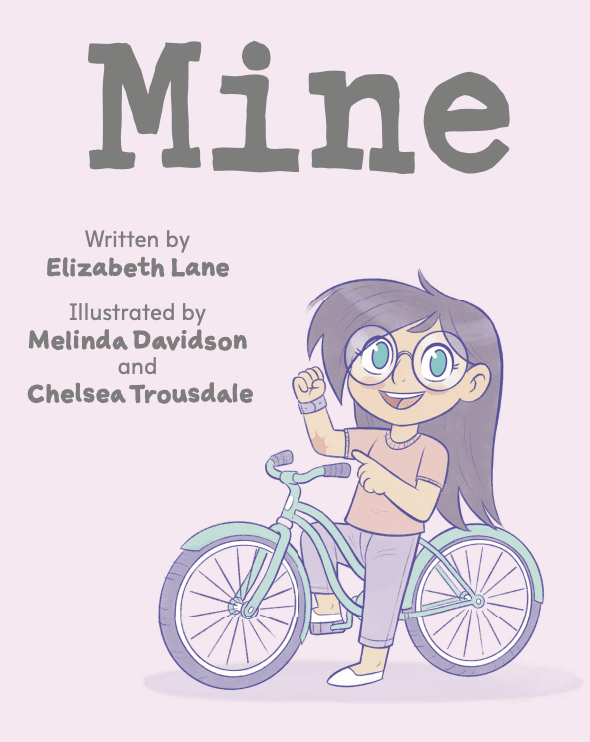
2. Reading comprehension can be improved by guiding students to read with expression. As students read aloud, teachers should ask them to reflect on the story’s events and imagine themselves in each character’s shoes.
For a free picture book to read aloud with students, use Mine by Elizabeth Lane–a story about a young girl and her family (available here in Spanish).
3. Families play a crucial role in supporting their child’s learning, and working together with families is key to a student’s success. To give them ideas for practicing reading fluency at home, share this activity sheet with the families in your school (available in Spanish here ).
4. Provide students with models of fluent reading. Encourage teachers to read aloud to their students regularly, then let students practice by following along with this fluency modeling video .
5. Building a large bank of sight words is essential for developing reading fluency. These sight word flash cards can be used to practice the orthographic mapping process, identifying the sounds within words and matching those sounds with the letter or letters that represent them.
Read Waterford’s full Foundations of the Science of Reading article series and learn how to support your teachers with research-driven strategies as they plan for classroom instruction. Continue learning with the next three articles:
- Strategies for Teaching Reading Comprehension
- How to Teach Language Concepts
- Ways to Teach Communication Skills
More education articles

Celebrating Juneteenth 2024: Children’s Books and Activities for Families and Educators

MacKenzie Scott’s Yield Giving Awards Waterford.org a $10 Million Grant
Search Utah State University:
Science & Technology
Passion for Research Propels USU Biochemist to Nutrition & Integrated Physiology Grad Program
Honors student, Kinkead Capstone Award recipient, Salt Lake City Mosquito Abatement District intern and recent graduate Marcus Hayden says his USU undergrad career prepared him well for doctoral studies.
By Mary-Ann Muffoletto | July 09, 2024

Recent USU Honors graduate Marcus Hayden received the 2024 Joyce Kinkead Outstanding Honors Capstone Award in science, technology, engineering and mathematics disciplines. The Kaysville, Utah native, pictured holding a mechanical aspirator used to collect and transport small numbers of mosquitoes, is working as an intern for the Salt Lake City Mosquito Abatement District this summer. He begins graduate studies at the University of Utah this fall. (Photo Credit: SLCMAD)

While still a student at Utah’s Farmington High School and during his undergraduate career at Utah State University, Marcus Hayden pursued a variety of research projects and science activities crossing diverse interdisciplinary borders. Hayden, an Honors student who graduated from USU in May 2024 with a bachelor’s degree in biochemistry, received USU’s Joyce Kinkead Outstanding Honors Capstone Award in science, technology, engineering and mathematics disciplines this past spring.
“This award, with the Peak Summer Undergraduate Research Fellowship I received previously, neatly bookended my research journey at Utah State,” Hayden says. “I am very grateful and very humbled by these prestigious honors.”
The Kaysville, Utah native is currently working as an intern for the Salt Lake City Mosquito Abatement District. In the fall, he begins a doctoral program in nutrition and integrated physiology at the University of Utah.
Hayden’s path to science began with participation in STEM activities at an early age, and the intrepid scholar seized upon extracurricular academic pursuits.
“I was lucky to work as an aquaponics intern at USU Kaysville, where I got to manage fish, grow hydroponic produce and help create new hydroponic methods,” he says. “Realizing I could continue to pursue hands-on learning experiences by attending USU in Logan, I knew Utah State would be a great fit for me.”
Entering Utah State in fall 2020, Hayden remained undaunted by pandemic restrictions and closures. The Undergraduate Research Fellow began volunteering in biology faculty mentor Noelle Beckman’s lab during his first year. There, he pursued a chemical ecology project exploring how secondary metabolites in the leaves of plants from Panama affect seed dispersal.
His next research foray, through the Talmage Chemistry Research Internship program at Brigham Young University, involved synthesizing oligosaccharides of a strain of Streptococcus pneumoniae for vaccine development.
“That experience was pivotal, as I realized to wanted to work in research that more closely impacted human health,” says Hayden, who paired a biology minor with his biochemistry major.
Back in Logan, the undergrad joined Abby Benninghoff’s lab in the Department of Animal, Dairy and Veterinary Sciences, where he crafted his award-winning Honors capstone project, “Cocoa Polyphenols Modulate the Gut Microbiome in a Site-Specific Manner in Mice.”
“From my initial interview with Dr. Benninghoff, I could tell she believed in me,” Hayden says. “She and her graduate student Eliza Stewart taught me so many research skills and helped me develop as a scientist. Writing the 70-page manuscript for my capstone project was one of the most challenging things I did as an undergrad. Dr. Benninghoff and Eliza encouraged me at each step and patiently answered my many questions. That experience prepared me well for graduate school.”
Prior to developing his capstone project, Hayden secured a USU Undergraduate Research and Creative Opportunities (URCO) grant, along with his Peak Fellowship, during which he pursued a run-up project to his capstone, “The Impact of Docosahexaenoic Acid and the Total Western Diet on the Gut Microbiota.”
“The Peak Summer Research Fellowship not only helped me with my research, but also helped me develop my science communication skills,” he says.
Hayden secured another off-campus opportunity to hone his research skills with the AmGen Scholars program at the University of Texas Southwestern Medical Center in Dallas.
“In this 10-week program, I investigated intrinsic circadian rhythms in gut motility,” he says. “I attended a wide breadth of research seminars, talked with students from around the country who were at similar points in their academic careers. This program broadened my horizons about how I can make a difference as a biomedical scientist.”
Hayden presented his research, for which he earned the Kinkead Award, in multiple venues.
Coincidentally, Hayden took an English class, the History of Writing, with Kinkead — a refreshing shift of gears from intensive science research — in spring 2021.
“I remember it fondly as one of my first in-person classes at Utah State,” he says. “Dr. Kinkead and her class reminded me of how much I love learning.”
Another class that ignited the undergrad’s passion for knowledge was a biochemistry laboratory class taught by Department of Chemistry and Biochemistry faculty members Sean Johnson, Ryan Jackson and Nick Dickenson.
“I got to purify and characterize a protein in one semester,” Hayden says. “The course was one of the most challenging I ever took, but also the most rewarding.”
Outside of the class and lab, Hayden, who received the Department of Chemistry and Biochemistry’s Harris O. and Eleanor Y. Van Orden Award in Biochemistry, devoted time to STEM outreach.
“Outreach matters a lot to me because it inspired me, as a young teenager, to pursue a career in science,” Hayden says. “At Boy Scout meetings, I met older high school chemistry students who explained such phenomena as rust, fermentation and galvanization. Chemistry seemed like magic to me, and through that exposure at a young age, I was shown how exciting science can be.”
Jump-starting USU’s oSTEM chapter was challenging following the pandemic, says Hayden, who stepped up as president for the group as students returned to in-person activities. The chapter provided innovative STEM learning activities at the College of Science’s Science Unwrapped public outreach gatherings, and also provided a space aimed at helping students feel accepted at Utah State.
“I sought to create a space for students to gather and belong, as I learned during the COVID pandemic how important gatherings are for people’s well-being,” he says. “I especially hoped to gather LGBTQ scientists and engineers.”
Two spring 2024 events Hayden says he was proud for oSTEM to collaborate on were the Summer Science Job Seminar and Queer Prom.
“We teamed with USU’s Women in Science club and Miss USU 2023 Regan Tracy on the Summer Science Job Seminar, which was aimed at helping each other build our careers,” he says. “For Queer Prom, we worked with USU’s Queer Student Alliance and the Queer Christiana Initiative to create a festive gathering to celebrate the end of the semester. Through both of these events we reached and benefited many students with encouragement and camaraderie.”
Hayden also carries fond memories of fun with friends during moments of downtime from busy academic assignments.
“A friend and I agreed to dress as popstars — I was Elton John; she was Stevie Nicks — for The Howl,” he says. “We loved dancing to the music of the Jackson 5, ABBA and Sylvester at the Hub’s silent disco. After that day, I always thought of the silent disco, when I passed the Hub.”
He and friends also enjoyed spontaneous fun when they happened upon a rope swing by the canal near 800 East and 1000 North in Logan (bringing flashlights for subsequent visits), as well as country swing dancing at Sage Hall.
“Those were great times with friends, but one of my favorite things to do after a long day of studying was to bake cookies, cook a stir fry or make a salad to reward by body and mind for all of the hard work they did during the day,” he says.
Hayden’s days are currently filled with lab and field work in the Salt Lake City area, as he studies how mosquitoes have developed insecticide resistance.
“We hypothesize that insecticide-resistant mosquitoes are producing more detoxification enzymes to deactivate insecticide,” he says. “So, we developed an experiment to investigate how insecticide exposure affects gene expression in both insecticide-resistant and insecticide-susceptible mosquitoes.”
This fall, as he enters the doctoral program at the U, Hayden hopes to continue research he started at Utah State.
“I found my research niche studying how diet affects the mammalian gut microbiome, and I hope to continue similar work in my Ph.D. program,” Hayden says.
Mary-Ann Muffoletto Public Relations Specialist College of Science 435-797-3517 [email protected]
Comments and questions regarding this article may be directed to the contact person listed on this page.
Next Story in Science & Technology
July 08, 2024 316
Utah State University Researchers Help UDOT Study Vertiports
Earlier this year, the Utah Department of Transportation showcased the state's first demonstration of a vertiport, in collaboration with USU.

July 02, 2024 1465
Christopher R. Smith Named Head of USU Department of Biology
A native of the world — an oil industry brat who lived many places, to be specific — Christopher R. "Chris" Smith looks forward to, once again, living in the mountains.
Trending on Utah State Today

UNIVERSITY AFFAIRS
July 02, 2024 29099
USU Makes Significant Changes in Football Program

June 18, 2024 3608
President Cantwell: Embracing a New Chapter in Our University's History

BUSINESS & SOCIETY
June 20, 2024 3187
Soda Swap: Utah State's Logan Campus Switching From Pepsi to Coke

TEACHING & LEARNING
June 18, 2024 3101
New USU Center Brings Digital Accessibility Within Reach
Celebrating 150 years of Harvard Summer School. Learn about our history.
Why You Should Make a Good Night’s Sleep a Priority
Poor sleep habits and sleep deprivation are serious problems for most high school and college students. This guide offers important tips on how—and why—to improve your sleep hygiene.
The time you spend in high school and college can be both fun and rewarding. At the same time, these can be some of the busiest years of your life.
Balancing all the demands on your time—a full course load, extracurricular activities, and socializing with friends—can be challenging. And if you also work or have family commitments, it can feel like there just aren’t enough hours in the day.
With so many competing priorities, sacrificing sleep may feel like the only way to get everything done.
Despite the sleepiness you might feel the next day, one late night probably won’t have a major impact on your well-being. But regularly short-changing yourself on quality sleep can have serious implications for school, work, and your physical and mental health.
Alternatively, prioritizing a regular sleep schedule can make these years healthier, less stressful, and more successful long-term.
The sleep you need versus the sleep you get
According to the National Sleep Foundation , high school students (ages 14-17) need about eight to 10 hours of sleep each night. For young adults (ages 18 to 25), the range is need between seven and nine hours.
How do you know how much sleep you need within this range?
According to Dr. Edward Pace-Schott, Harvard Summer School and Harvard Medical School faculty member and sleep expert, you can answer that question simply by observing how much you sleep when you don’t need to get up.
“When you’ve been on vacation for two weeks, how are you sleeping during that second week? How long are you sleeping? If you’re sleeping eight or nine hours when you don’t have any reason to get up, then chances are you need that amount or close to that amount of sleep,” says Pace-Schott.
Most students, however, get far less sleep than the recommended amount.
Seventy to 96 percent of college students get less than eight hours of sleep each week night. And over half of college students sleep less than seven hours per night. The numbers are similar for high school students; 73 percent of high school students get between seven and seven and a half hours of sleep .
Of course, many students attempt to catch up on lost sleep by sleeping late on the weekends. Unfortunately, this pattern is neither healthy nor a true long-term solution to sleep deprivation.
And what about those students who say that they function perfectly well on just a couple hours of sleep?
“There are very few individuals who are so-called short sleepers, people who really don’t need more than six hours of sleep. But, there are a lot more people who claim to be short sleepers than there are real short sleepers,” says Pace-Schott.
Consequences of sleep deprivation
The consequences of sleep deprivation are fairly well established but may still be surprising.
For example, did you know that sleep deprivation can create the same level of cognitive impairment as drinking alcohol?
According to the CDC , staying awake for 18 hours can have the same effect as a blood alcohol content (BAC) of 0.05 percent. Staying awake for 24 hours can equate to a BAC of 0.10 percent (higher than the legal limit of 0.08 percent).
And according to research by AAA , drowsy driving causes an average of 328,000 motor vehicle accidents each year in the US. Drivers who sleep less than five hours per night are more than five times as likely to have a crash as drivers who sleep for seven hours or more.
Other signs of chronic sleep deprivation include:
- Daytime sleepiness and fatigue
- Irritability and short temper
- Mood changes
- Trouble coping with stress
- Difficulty focusing, concentrating, and remembering
Over the long term, chronic sleep deprivation can have a serious impact on your physical and mental health. Insufficient sleep has been linked, for example, to weight gain and obesity, cardiovascular disease, and type 2 diabetes.
The impact on your mental health can be just as serious. Harvard Medical School has conducted numerous studies, including research by Pace-Schott, demonstrating a link between sleep deprivation and mental health disorders such as anxiety and depression.
Earn college credits with a summer course at Harvard Summer School.
Importance of sleep for high school and college students
As difficult as it is to prioritize sleep, the advantages of going to bed early and getting quality sleep every night are very real.
College students who prioritize sleep are likely to see an improvement in their academic performance.
If you are well rested, you will experience less daytime sleepiness and fatigue. You may need less caffeine to stay awake during those long lectures. And you will also find you are more productive, more attentive to detail, and able to concentrate better while studying.
But the connection between sleep and academic performance goes well beyond concentration and attentiveness.
“Sleep is very important for consolidating memories. In any sort of experimental setting, study results show better performance if you learn material and then sleep on it, instead of remaining awake. So there’s lots and lots of evidence now indicating that sleep promotes memory strengthening and memory consolidation,” says Pace-Schott.
There is also a strong connection between sleep quality and stress.
Students who prioritize sleep are better able to cope with the stress that comes with being an active student.
“It’s a vicious circle where the more stressed you get, the less you sleep, and the less you sleep, the more stressed you get. And in the long term, that can lead to serious psychiatric problems,” says Pace-Schott.
In the worst case scenario, the combination of lack of sleep and stress can lead to mental health disorders such as depression, general anxiety disorder, and potentially even post-traumatic stress disorder.
But prioritizing sleep can create a positive feedback loop as well.
Establishing a sleep schedule and adequate sleep duration can improve your ability to cope with stress. Being active and productive will help you get more done throughout the day, which also reduces feelings of stress.
And the less stressed you feel during the day, the better you will sleep at night.
Tips for getting more sleep as a student
The key to getting a good night’s sleep is establishing healthy sleep habits, also known as sleep hygiene.
The first step is deciding to make sleep a priority.
Staying ahead of coursework and avoiding distractions and procrastination while you study is key to avoiding the need for late night study sessions. And prioritizing sleep may mean leaving a party early or choosing your social engagements carefully.
Yet the reward—feeling awake and alert the next morning—will reinforce that positive choice.
The next step is establishing healthy bedtime and daytime patterns to promote good quality sleep.
Pace-Schott offers the following tips on steps you can take to create healthy sleep hygiene:
- Limit caffeine in close proximity to bed time. College students should also avoid alcohol intake, which disrupts quality sleep.
- Avoid electronic screens (phone, laptop, tablet, desktop) within an hour of bedtime.
- Engage in daily physical exercise, but avoid intense exercise within two hours of bedtime.
- Establish a sleep schedule. Be as consistent as possible in your bedtime and rise time, and get exposure to morning sunlight.
- Establish a “wind-down” routine prior to bedtime.
- Limit use of bed for daily activities other than sleep (e.g., TV, work, eating)
Of course, college students living in dorms or other communal settings may find their sleep disturbed by circumstances beyond their control: a poor-quality mattress, inability to control the temperature of your bedroom, or noisy roommates, for example.
But taking these active steps to promote healthy sleep will, barring these other uncontrollable circumstances, help you fall asleep faster, stay asleep, and get a more restorative sleep.
And for students who are still not convinced of the importance of sleep, Pace-Schott says that personal observation is the best way to see the impact of healthy sleep habits.
“Keep a sleep diary for a week. Pay attention to your sleep in a structured way. And be sure to record how you felt during the day. This can really help you make the link between how you slept the night before and how you feel during the day. It’s amazing how much you will learn about your sleep and its impact on your life.”
Interested in summer at Harvard? Learn more about our summer programs.
Request Information
What You Need to Know About Pre-College Program Activities
Rigorous, fast-paced—and a lot of fun.
Harvard Division of Continuing Education
The Division of Continuing Education (DCE) at Harvard University is dedicated to bringing rigorous academics and innovative teaching capabilities to those seeking to improve their lives through education. We make Harvard education accessible to lifelong learners from high school to retirement.


Career Preparedness for High School Students with Intellectual Disabilities
Students with an intellectual disability along with their family are constantly working on learning and building skills to be successful in the next stage of their life. The planning for “the rest of their lives” starts as early as 14-16 years old. This research will explore the difficulties of transition and skills that are required for the student to be a self-determined adult and have a smooth transition from school into their postsecondary adult life.
Degree Type
- Master of Science in Education
- Educational Studies
Campus location
Advisor/supervisor/committee chair, additional committee member 2, additional committee member 3, usage metrics.
- Vocational education and training curriculum and pedagogy


IMAGES
VIDEO
COMMENTS
3. Career Taboo. How to Implement: This game is inspired by the classic Taboo game. Create cards for various professions and list four or five "taboo" words associated with each job that students cannot use when describing it. For instance, for "Dentist", taboo words might include "teeth," "brush," "drill," and "gum.".
Career resources. 16 Personalities. A variation of the Myers-Briggs Personality Test, students answer some common questions and are given feedback on their personality type. A fun activity to get your students thinking about who they are and how their life skills can tie into their career choices. ASA Futurescape.
Before high schoolers can even begin to explore potential career paths, they must first gain a deeper understanding of themselves. Through self-reflection activities — like personality assessments and writing prompts — you can encourage students to reflect on their academic passions, values, personal strengths and weaknesses, and lifestyle ...
3. Community Action Project. Another career exploration project you can facilitate is a career-focused community action project. This is a fun and impactful combination of project-based learning and service learning. Here's how it works: Students choose a career of interest as the focus of the community action project.
Innovative, Engaging Activities And Practices. In order for career exploration activities to be meaningful and exciting to today's high school students, they need to be interactive and relevant. They must involve opportunities for student voice and choice, allowing students to explore and discern what appeals to them and what does not.
These activities require high school students to reflect on their goals, values, and skills. For some students, this might be the first time that you consider questions about your future career. To get the conversation going, try out some fun career exploration activities that can help students find what they love.
It also helps them develop their communication and networking skills, which will be valuable as they continue to explore their career options. 5. Career Mad Libs. Career Mad Libs is a fun and engaging activity that allows students to explore different careers by filling in the blanks of a career-related story.
ds, activities and instructions, and student handouts. We also recommend tech tools that you can use to make the lea. endations • Stopwatch/timer Grade Levels: 9-12 Time: 60 minutes or 1-2 class periods for a ful. ng one of the three activities. Learning Objectives: Students will reflect on. ir unique strengths, skills, and career aspirations ...
Career Exploration Worksheet. If your school participates in the ASVAB CEP, this worksheet is an ideal companion to the ASVAB CEP's OCCU-Find used to research different careers. The worksheet allows students to take notes on careers and how they align with their interests and work values. Plus, they can note the job's education and average ...
Organizing a career scavenger hunt is a good way to spark curiosity in students and sharpen their research skills. The activity involves giving students a list of career-related tasks and allowing them to learn as much as possible about the topics. ... and launching a recycling program are just a few passion project ideas for high school ...
1. Princeton Review's Career Quiz. Students will need to register (for free), and then answer a series of 24 questions. They'll then receive one of four "interest colors" for "Your Interest" and "Your Style": Red: Expediting. Green: Communicating.
In this blog, we present four relatable career exploration activities designed to spark curiosity and inspire high schoolers as they embark on their journey of self-discovery. 1. Career Shadowing Day. Organizing a career shadowing day allows students to gain firsthand experience of a typical day in a particular profession.
The When I Grow Up career exploration curricula serve students, teachers, parents and the community of those in grades Pre-Kindergarten through 12th grades. Each grade level curriculum is designed to cater to the needs of the students and those presenting the information at that level. 9-12 (High School) aims to place career decisions and ...
Chef. Air Traffic Controller. Marine Biologist. Try to include the job profiles which are not usually known. It may help high schoolers get an idea of the jobs that they may not hear about from family or friends. Take Surveys. Career exploration surveys are designed to explore the interests of the students.
Creative Ideas for Career Exploration. 1- Our students love playing this career exploration for high school activity.It is a fact or fiction game that gets them thinking about different careers and the workforce. It is an effective way to give them short bites of information in a fun way.
5 Career Exploration Activities To Get Started. 1. Take Time To Research. Research projects give students the opportunity to learn where to find information on various careers while learning about those careers. What's more, research skills are important. Being able to identify, collect, and evaluate information will benefit students in ...
Students may record whether they want to work with people, alone, or with animals; if they wish to work indoors or outdoors; if they want a creative career. This supports students' initial career research into either specific careers or broader career fields. From here, they can then access support from the school careers team or CTE.
Career Exploration Activities for High School Students. By this point, students should have some idea of their strengths, challenges, and passions. The goal is to avoid high school seniors who have absolutely no idea what their future holds. This is a time to double down on career exploration activities in as many classes as possible.
If you need free career exploration activities for high school students, check out this article. ... Students should research local businesses with yellow pages and mobile phones or by using the internet. Divide the class into groups and give each group one business category to research (health care, transportation, construction, law firms ...
Career Research Project Paper: Students will like this project's simple, straightforward instructions and layout. The components are broken into manageable chunks, letting your high schoolers tackle the project in parts. By the end, they will produce a well-researched essay highlighting their career. 3-Career Research Report: In this project ...
Duration: 10 weeks (June 3 - August 9) Open to New York City high school students who will complete 10th or 11th grade in June 2024, the ARISE program provides access to college-level workshops and lab research across fields like bio, molecular, and chemical engineering, robotics, computer science, and AI.
"We're so grateful for the faculty, staff and students who invited youth into their spaces and work, sharing the joy of discovery and championing youth leadership," said Alexa Maille, interim director of NYS 4-H. "Youth from across New York state and beyond had the opportunity to find and fuel sparks, try out possible futures and explore how they can thrive in careers and life."
During the fall and spring terms of CCRI, the research team will consist of NASA Principal Investigators who lead in-service high school STEM educators and graduate student research assistants to become immersed in a NASA science research area related to climate change. During the summer session, the primary research team will add an undergraduate intern and high school intern to the CCRI ...
Elise is a writer for Lumiere and a graduate of the University of Montana School of Law. She began writing for Lumiere in 2024 to help connect high school students to research opportunities. Lumiere is a selective research program where students work 1-1 with a research mentor to develop an independent research paper.
Many policymakers and educators are focused on ensuring that students are ready for college and careers when they graduate from high school. RELs work in partnership with states and districts to 1) conduct original high-quality research, 2) provide training, coaching, and technical support, and 3) disseminate high-quality research findings on ...
The Anson L. Clark Scholars Program at Texas Tech University is a seven-week comprehensive research program designed for high school students to gain hands-on research experience under the mentorship of Texas Tech faculty. Although it is not a traditional internship, the program provides an opportunity for independent research exploration.
Join Waterford's Science of Reading virtual summit to explore how the brain learns to read and get strategies for effective, research-based instruction from literacy expert and Vice President of Curriculum Julie Christensen. Guidance for teachers and administrators is included. Plus, find upcoming and on-demand video series led by early education experts through the Webinar Library ...
While still a student at Utah's Farmington High School and during his undergraduate career at Utah State University, Marcus Hayden pursued a variety of research projects and science activities crossing diverse interdisciplinary borders. Hayden, an Honors student who graduated from USU in May 2024 ...
And over half of college students sleep less than seven hours per night. The numbers are similar for high school students; 73 percent of high school students get between seven and seven and a half hours of sleep. Of course, many students attempt to catch up on lost sleep by sleeping late on the weekends.
Students with an intellectual disability along with their family are constantly working on learning and building skills to be successful in the next stage of their life. The planning for "the rest of their lives" starts as early as 14-16 years old. This research will explore the difficulties of transition and skills that are required for the student to be a self-determined adult and have a ...